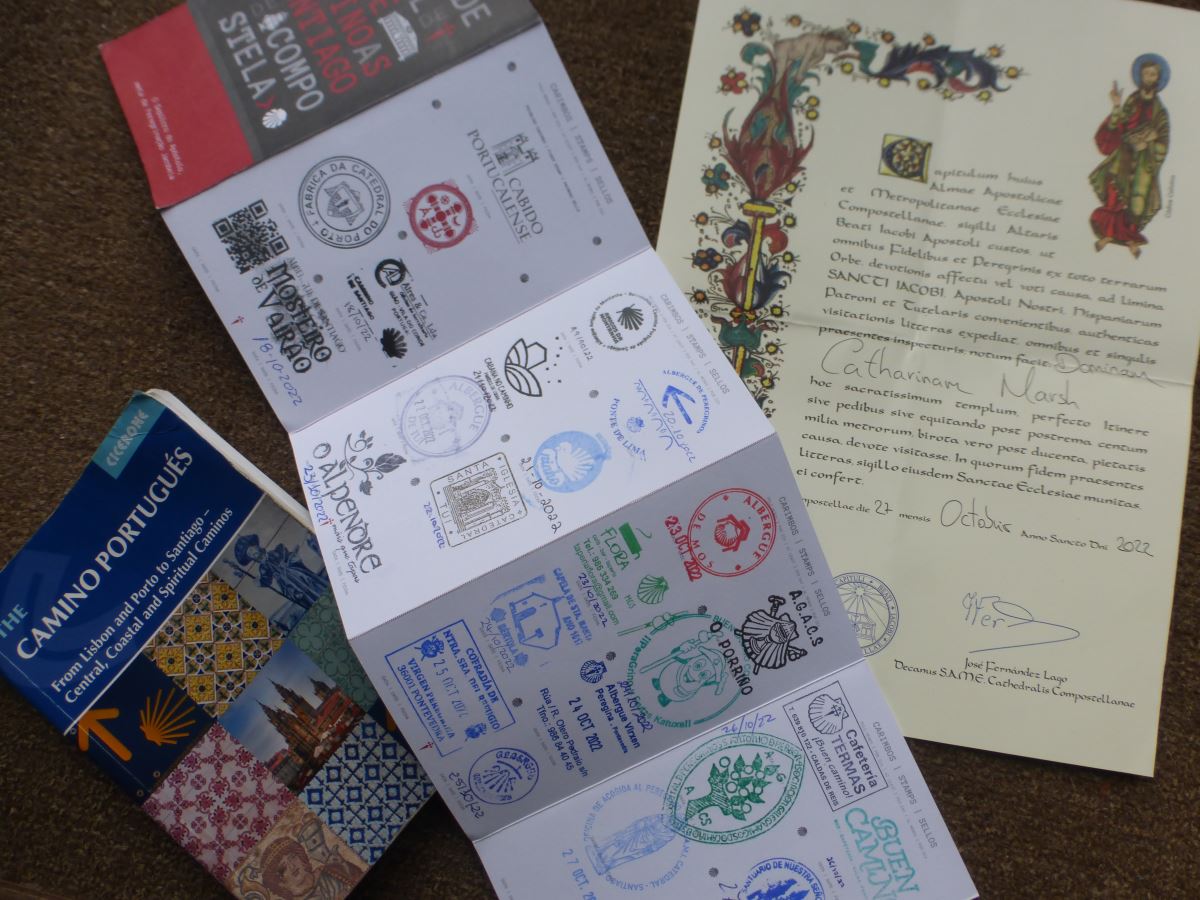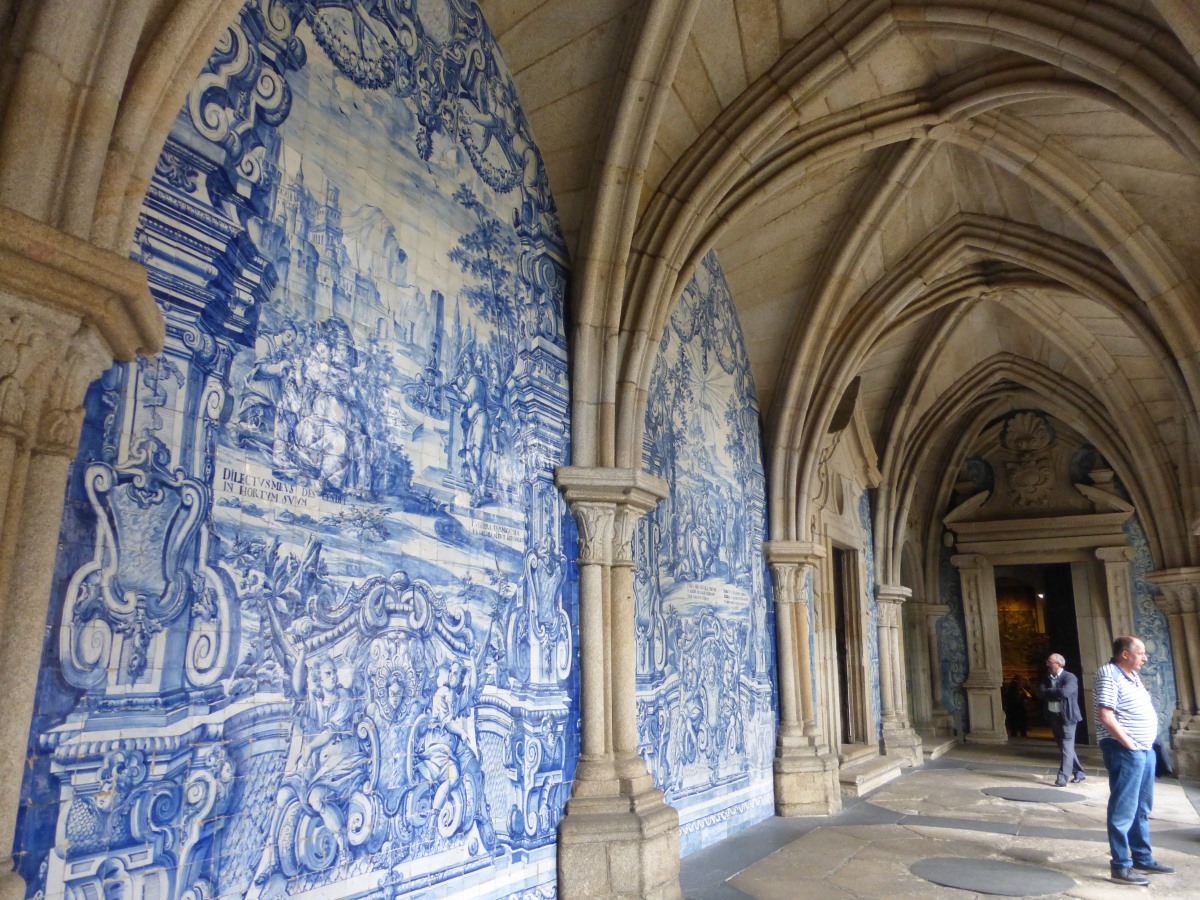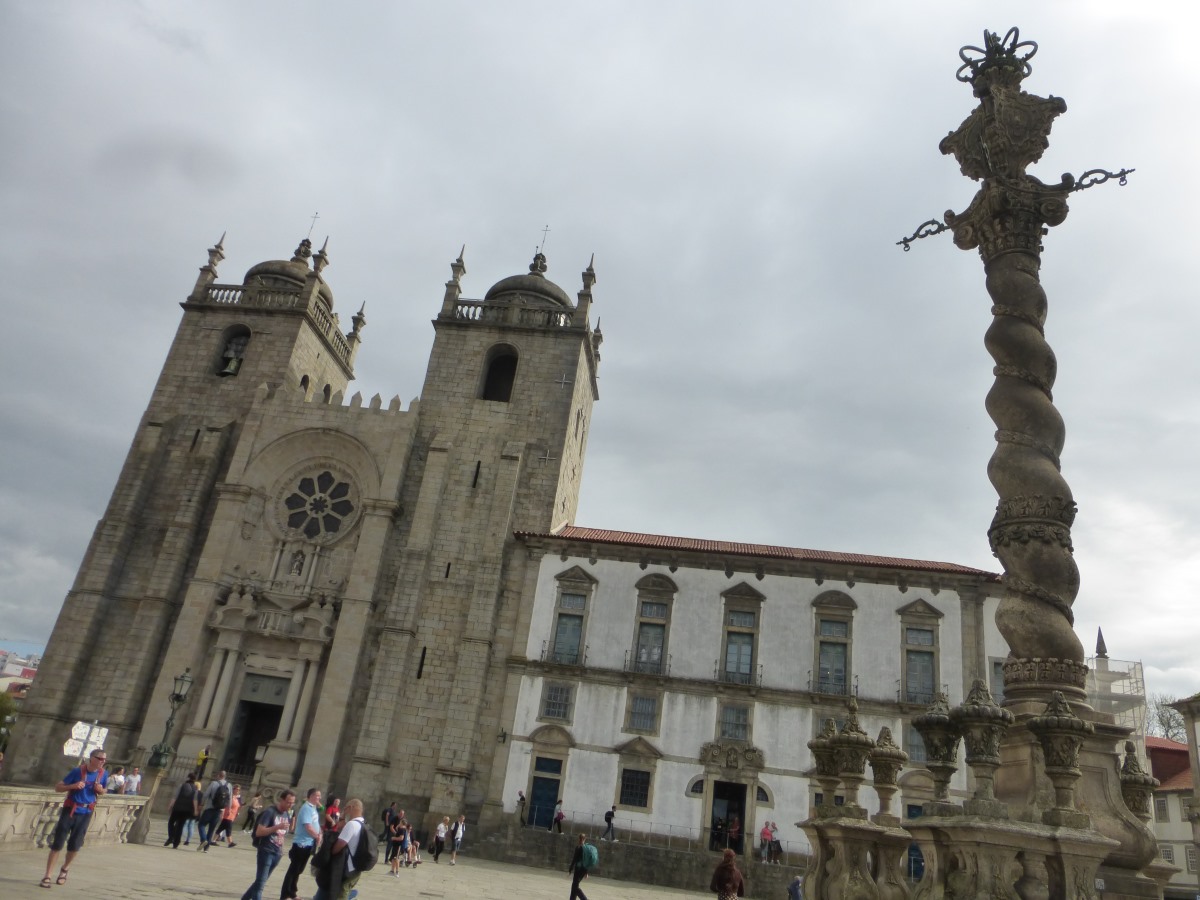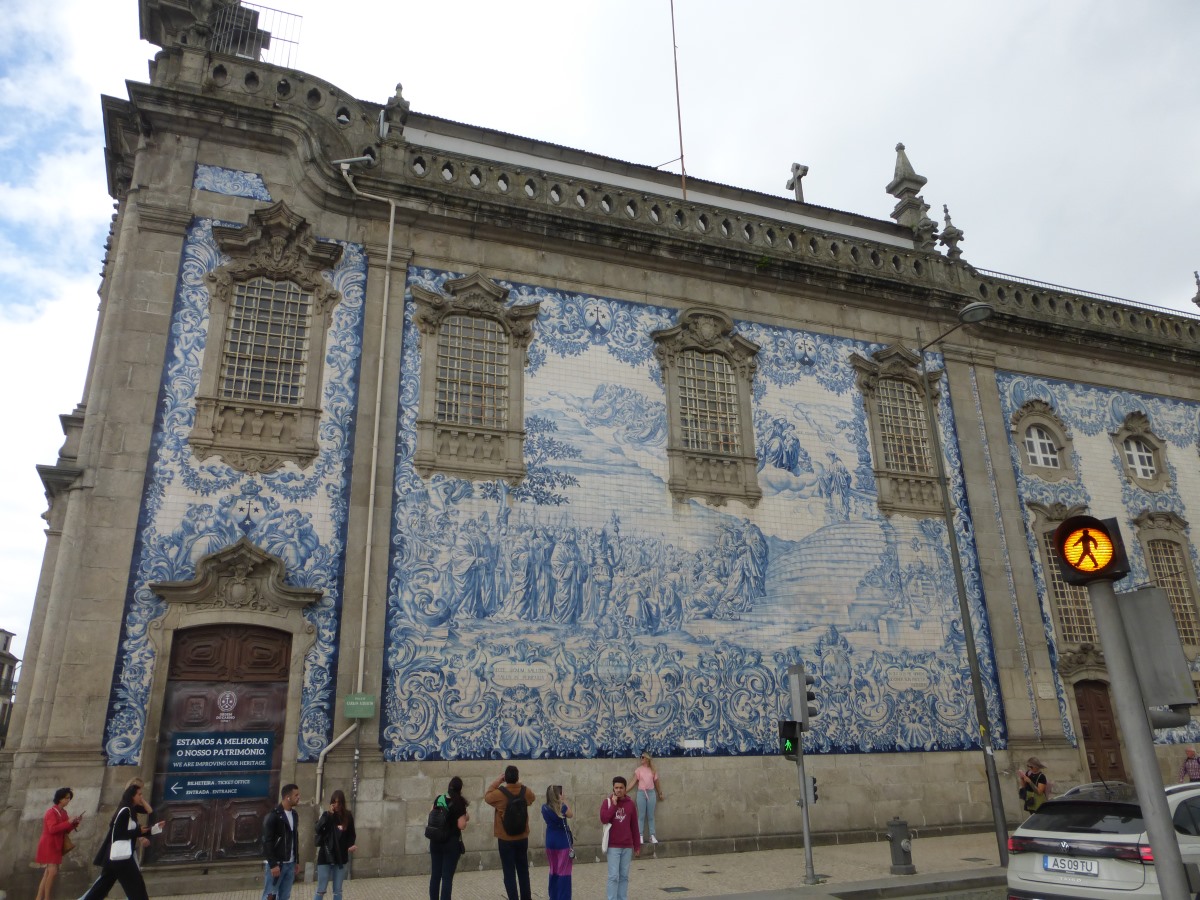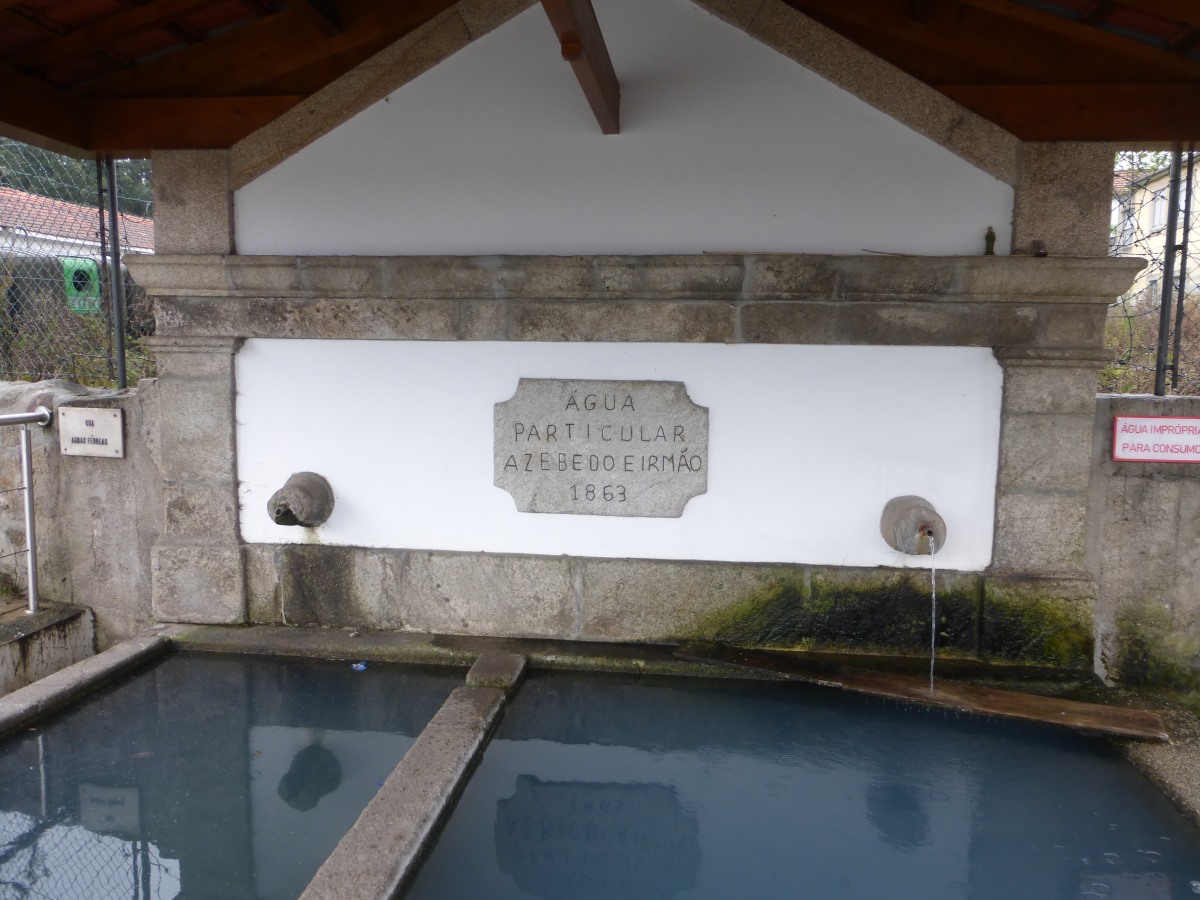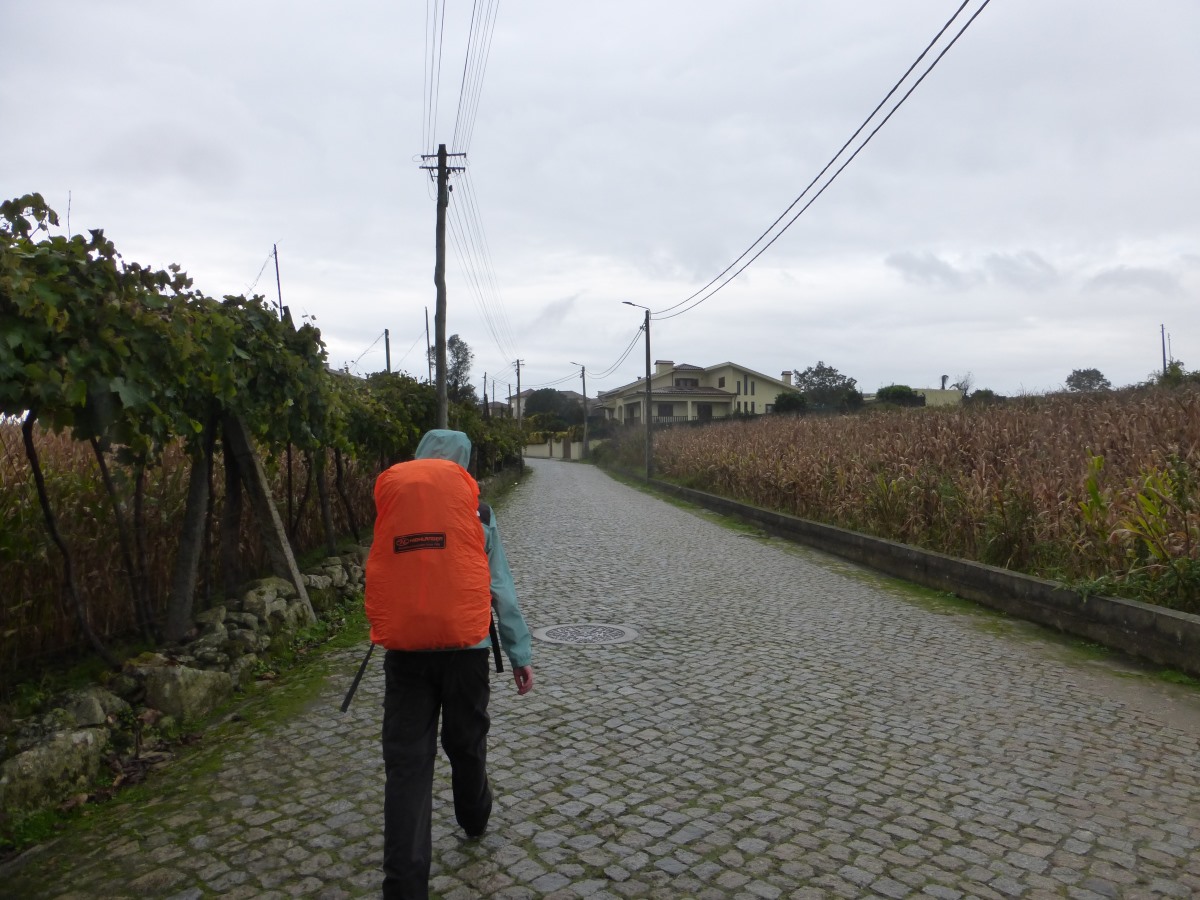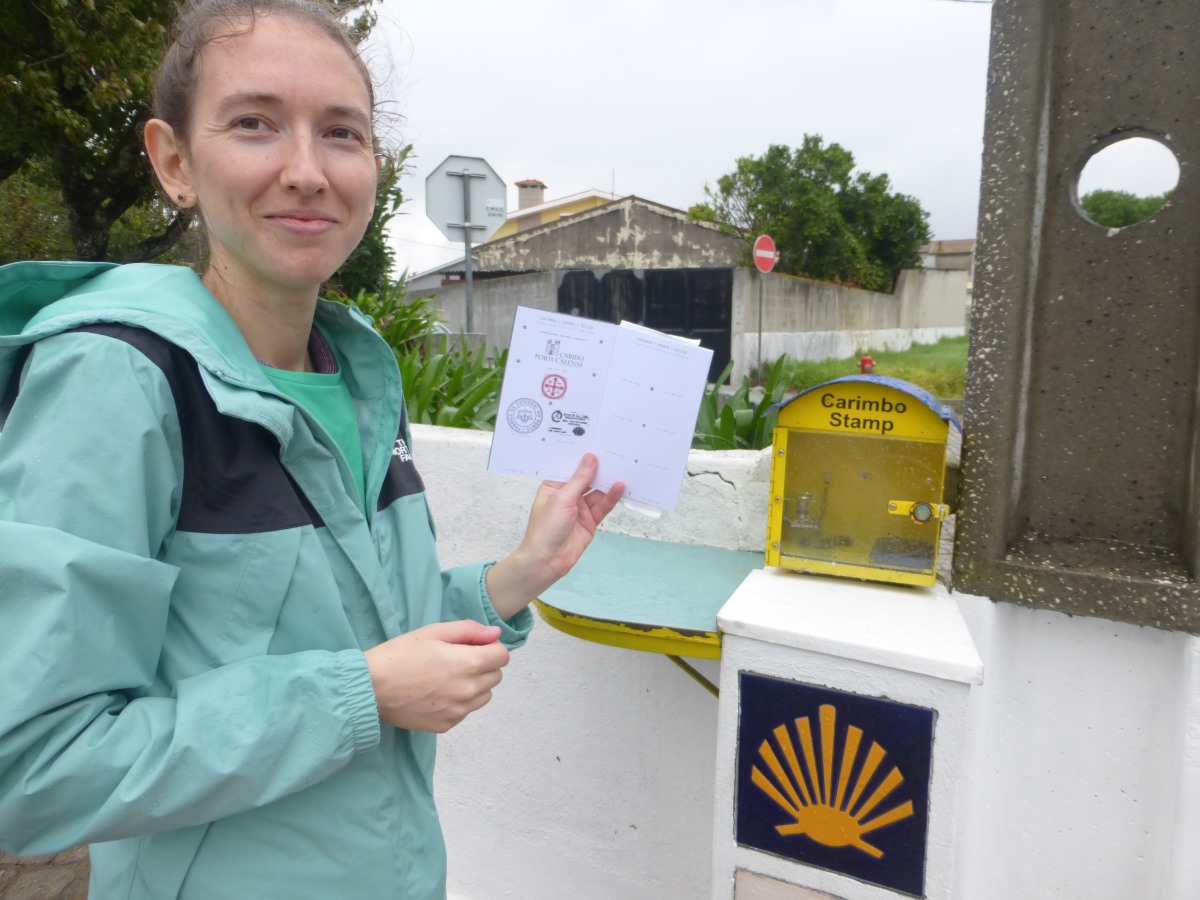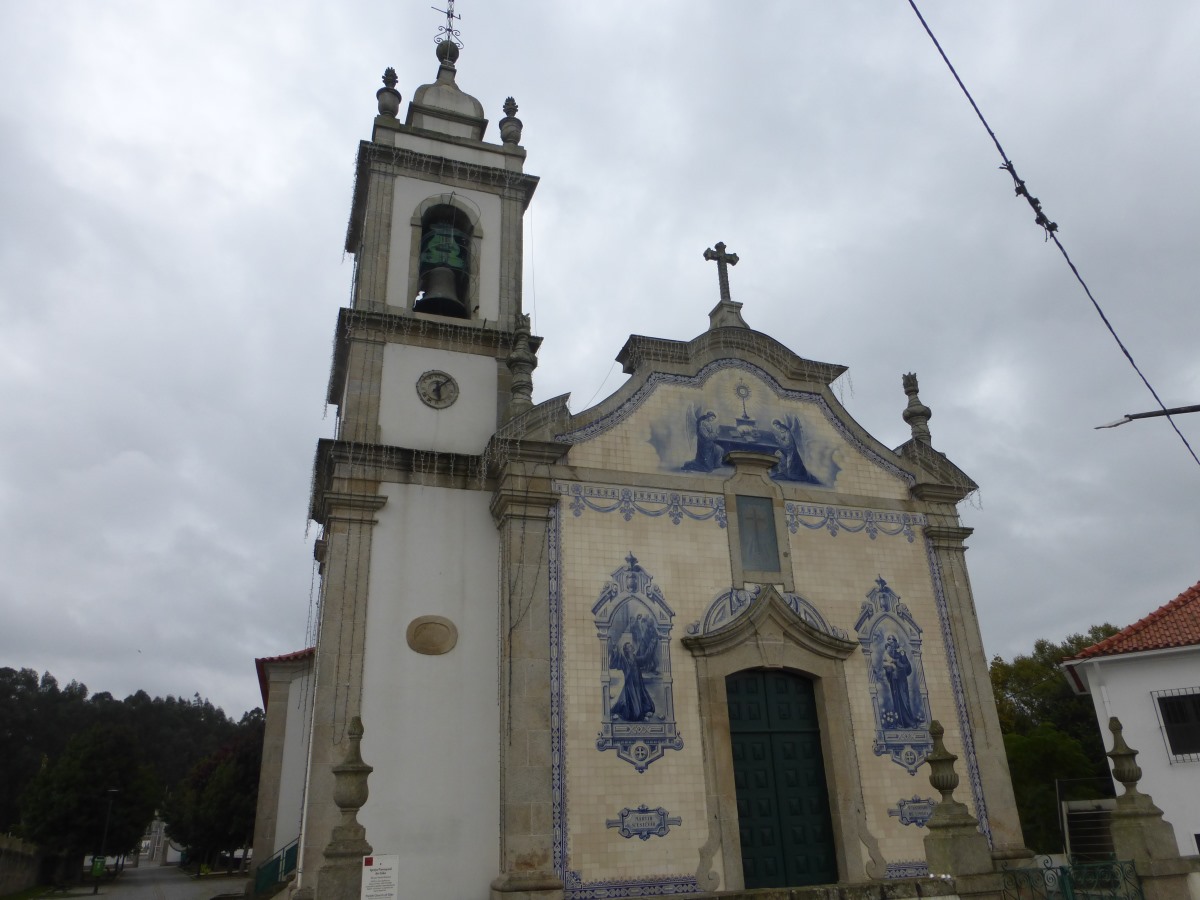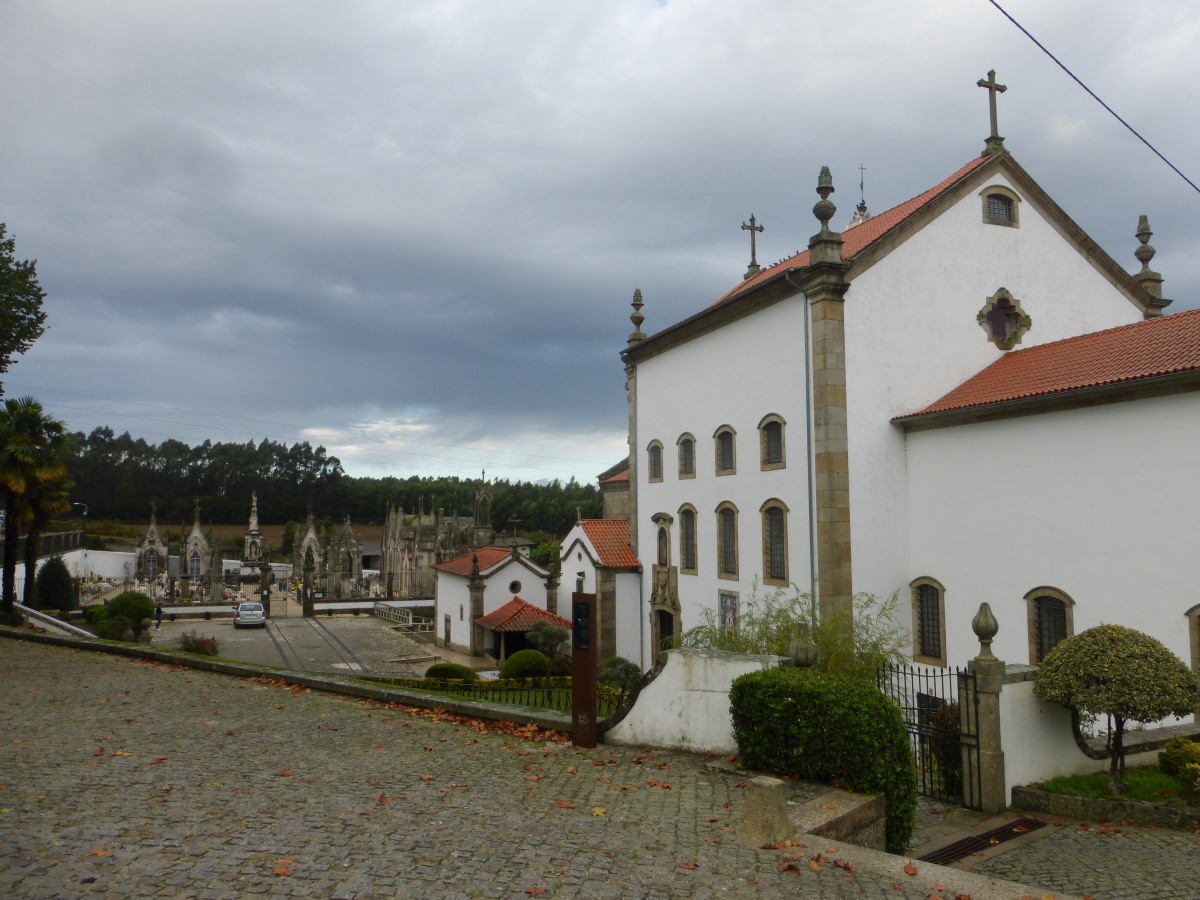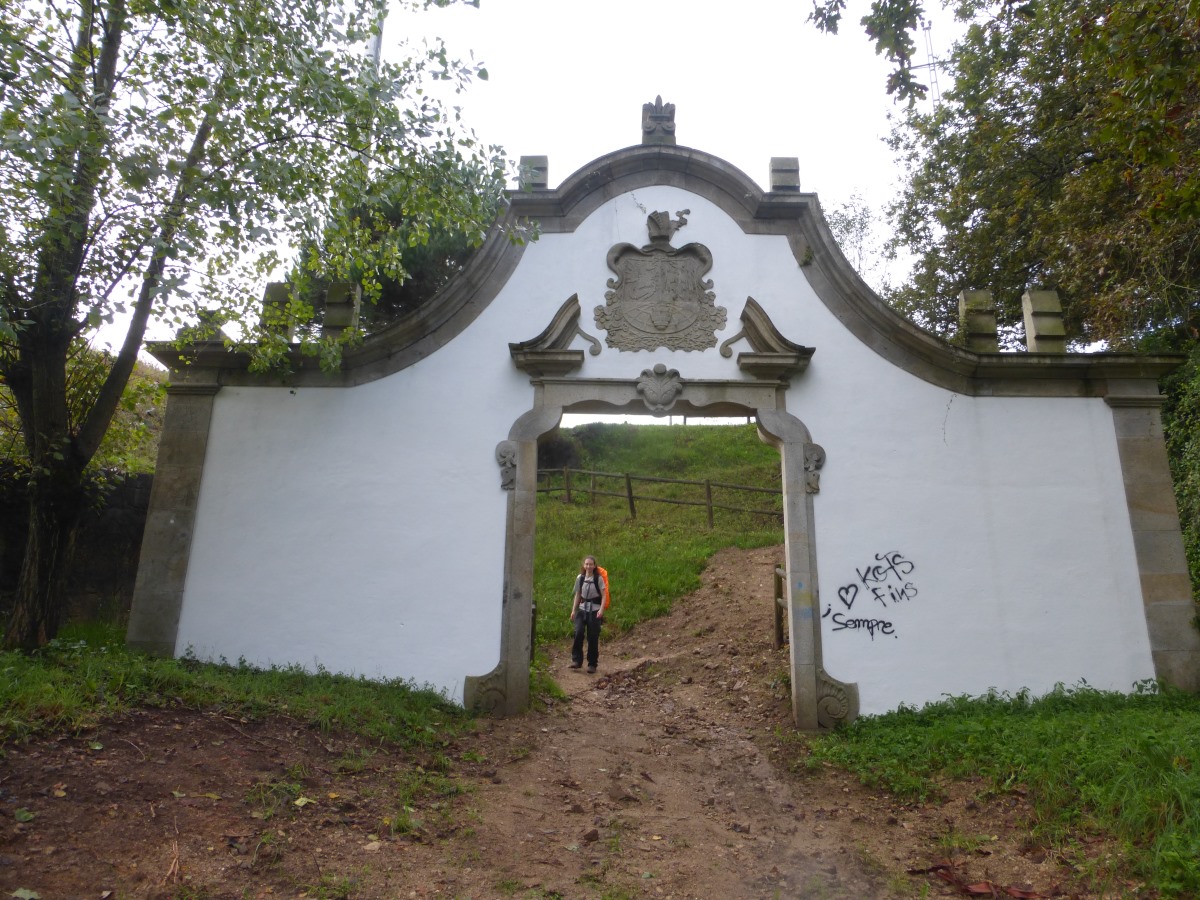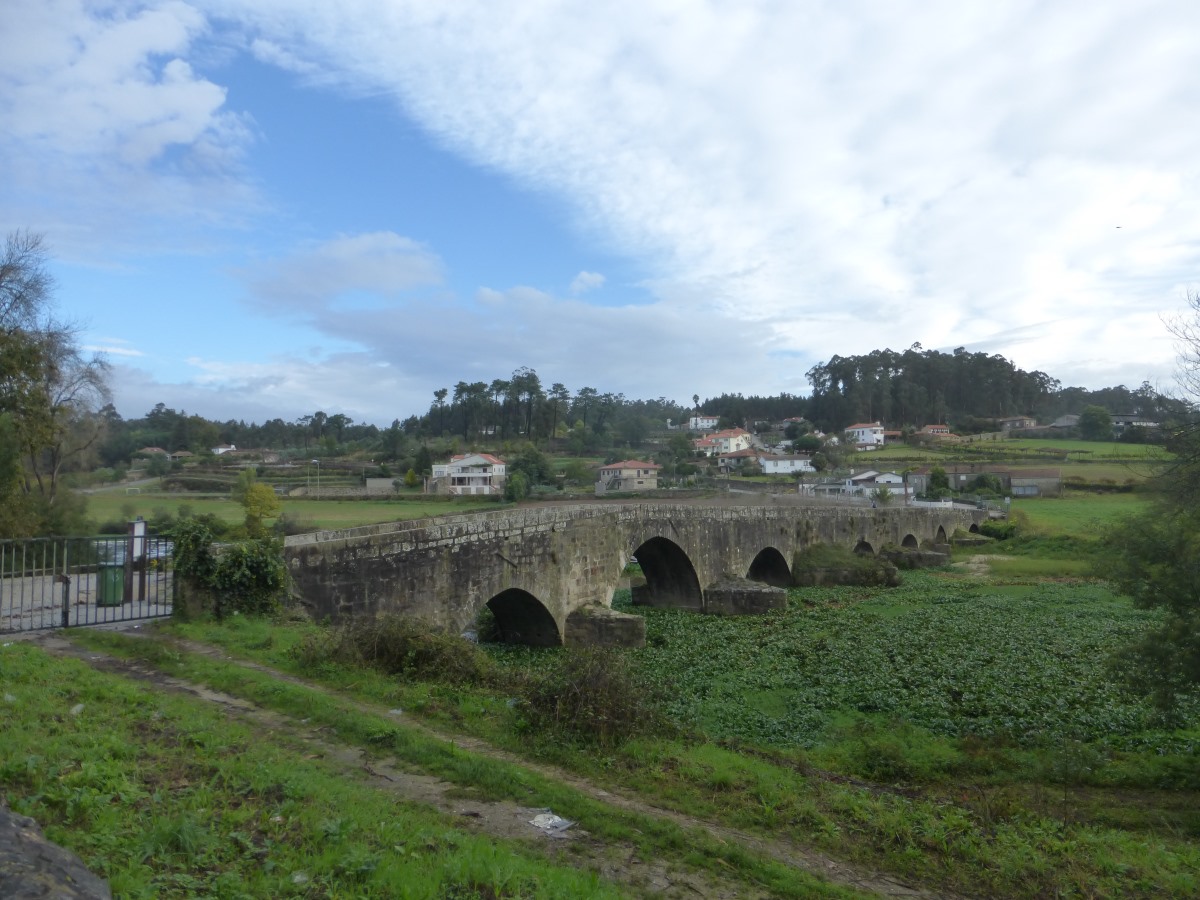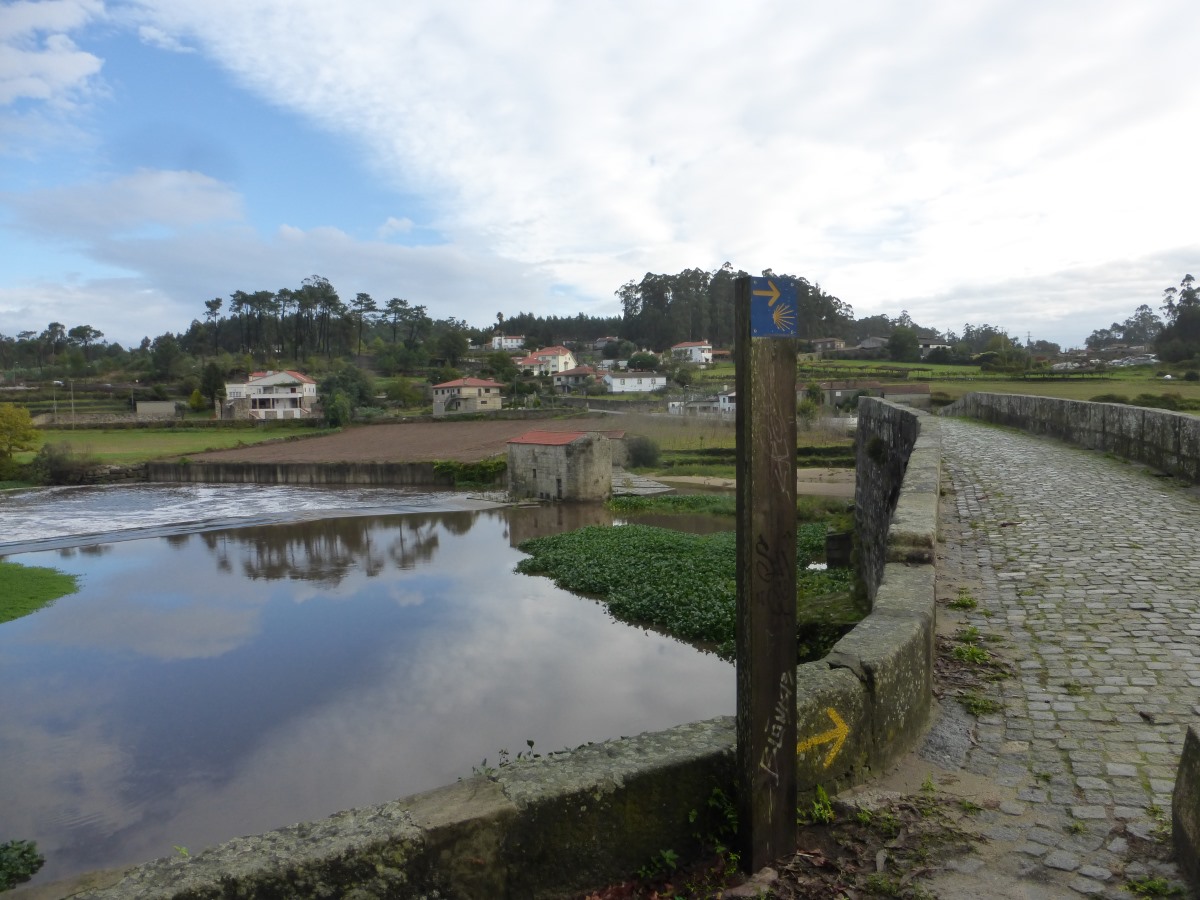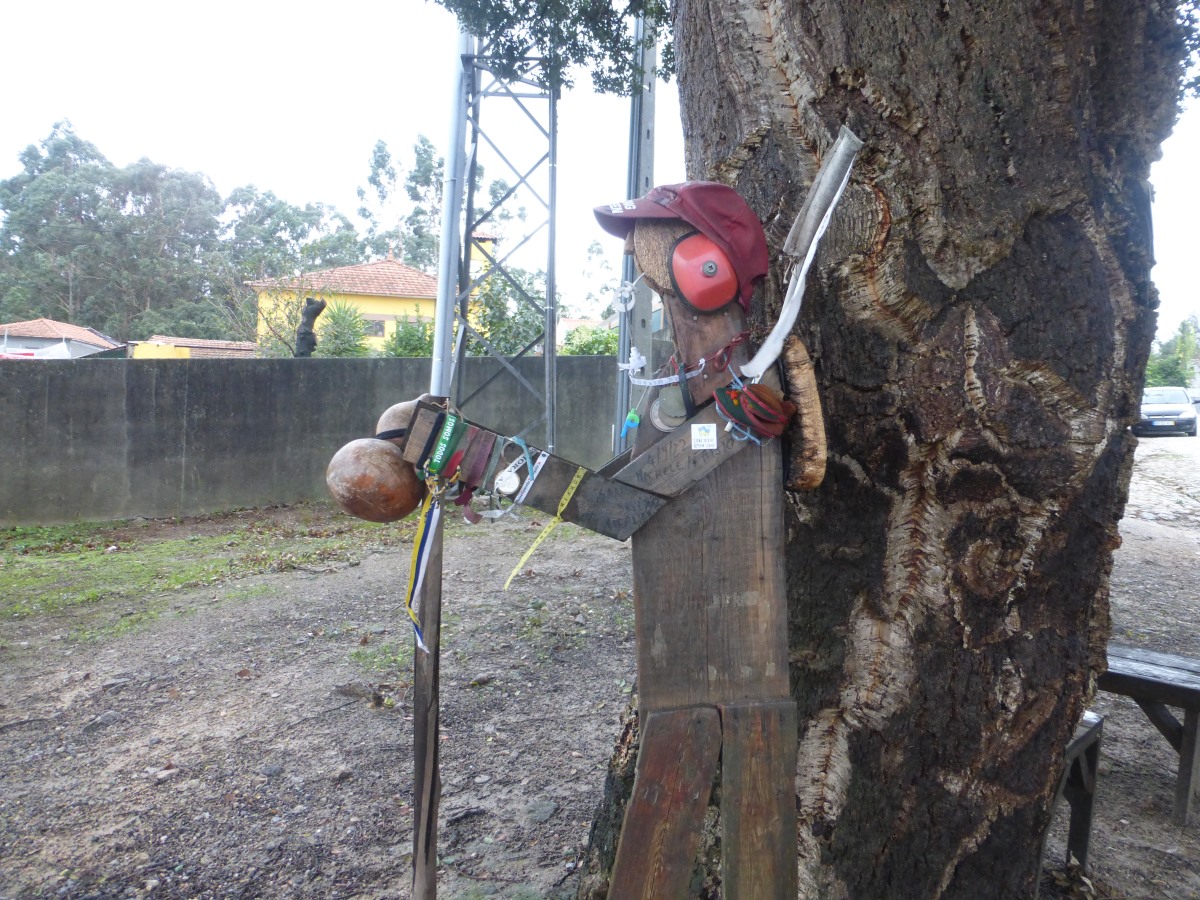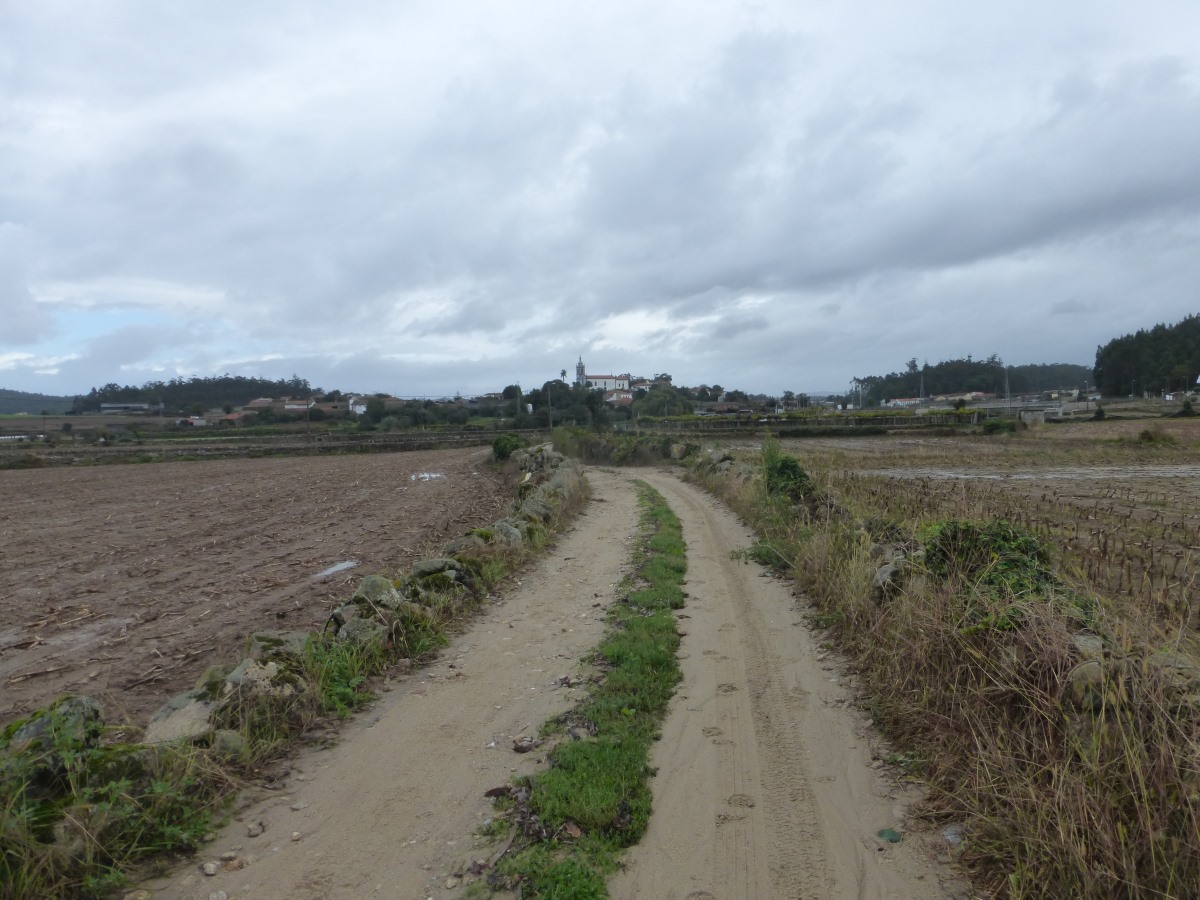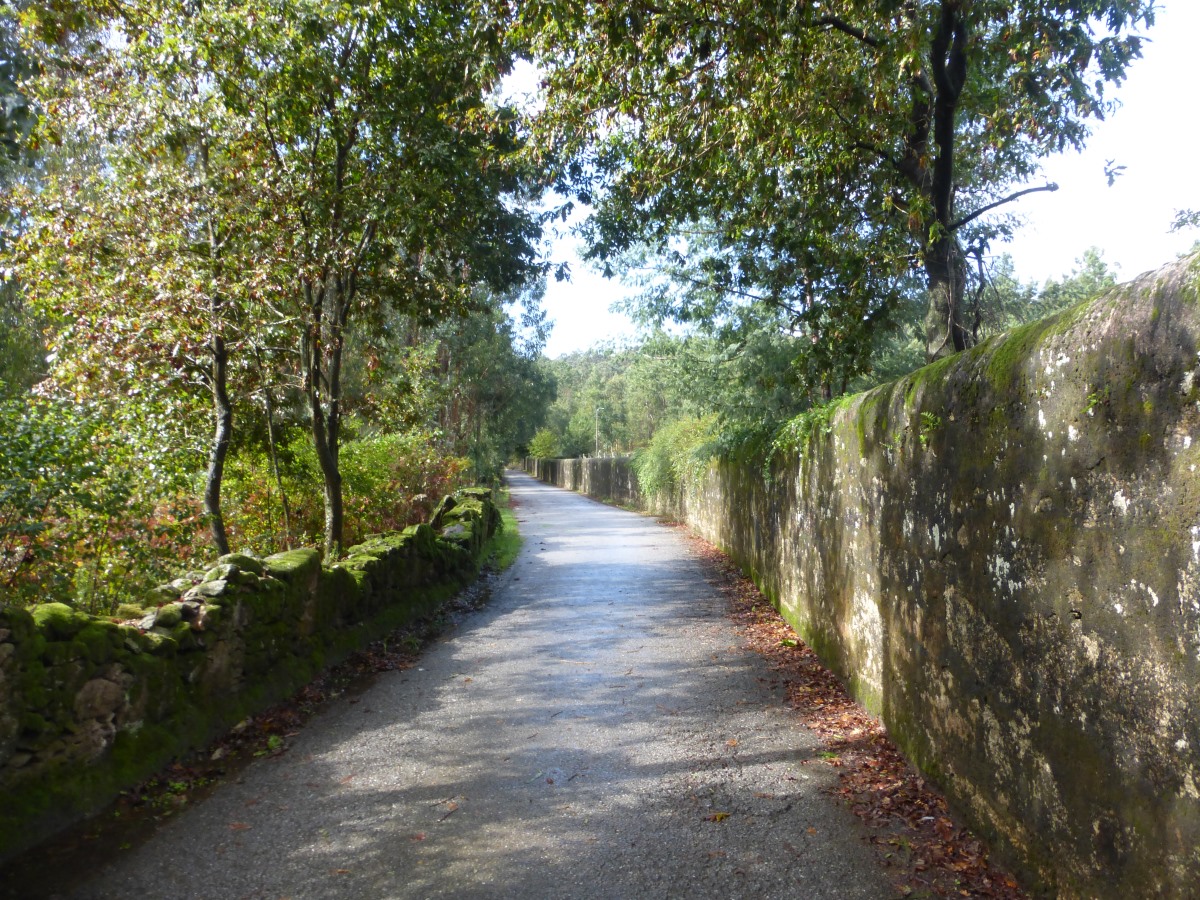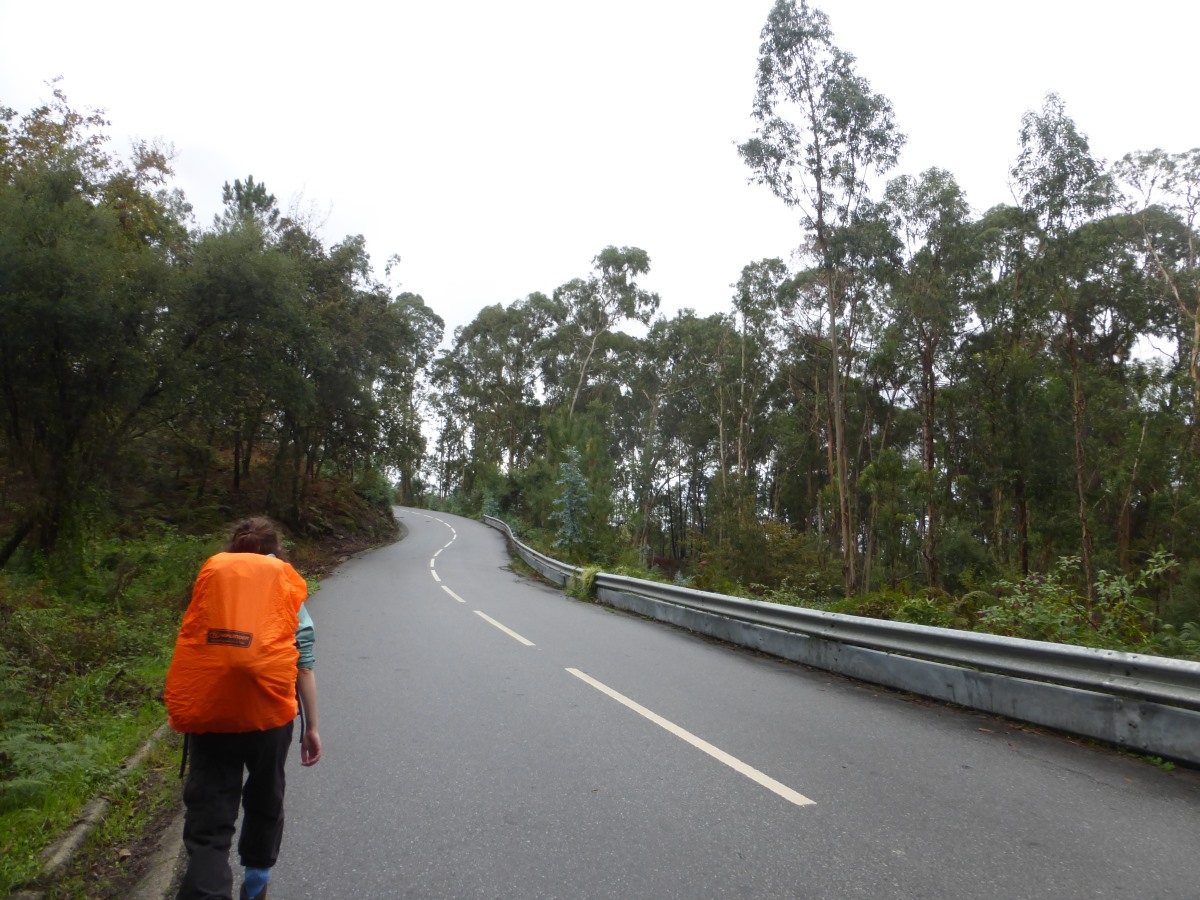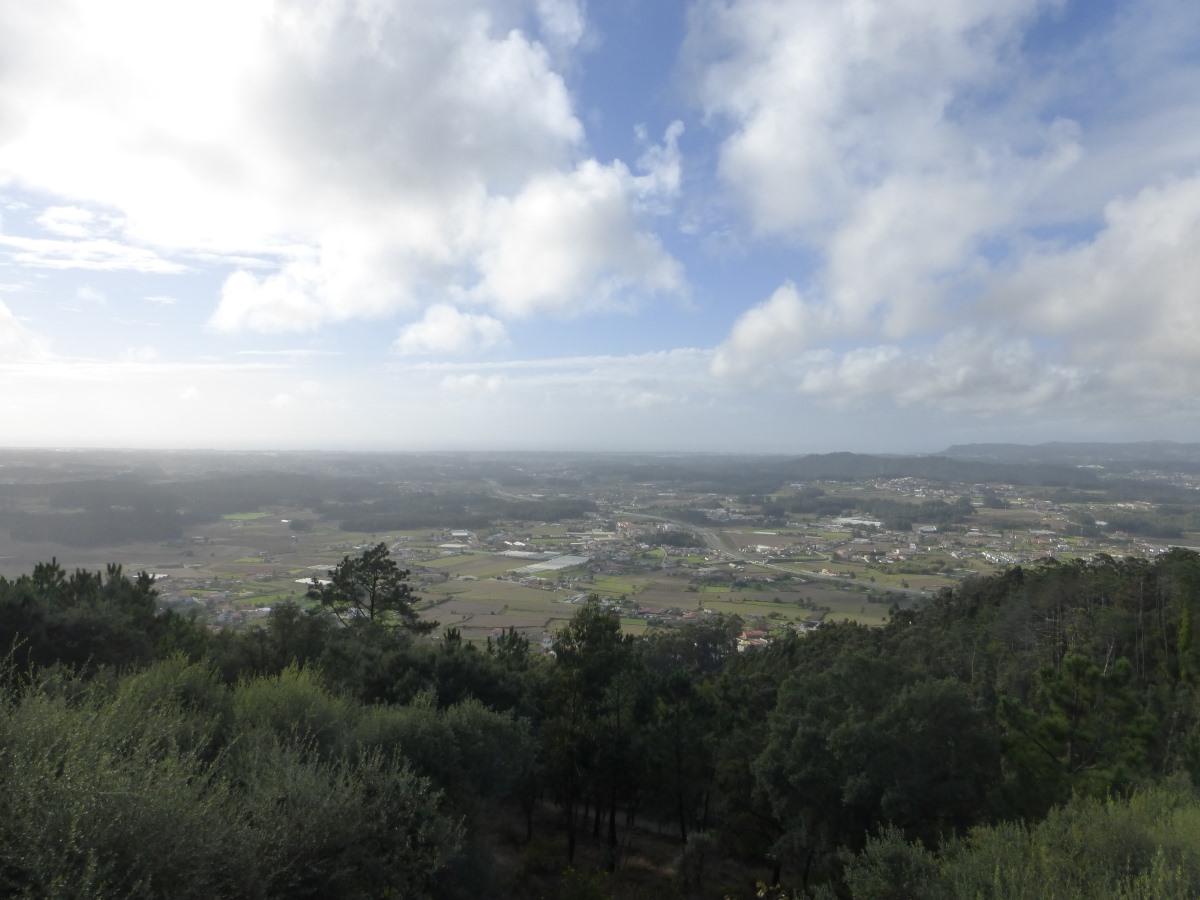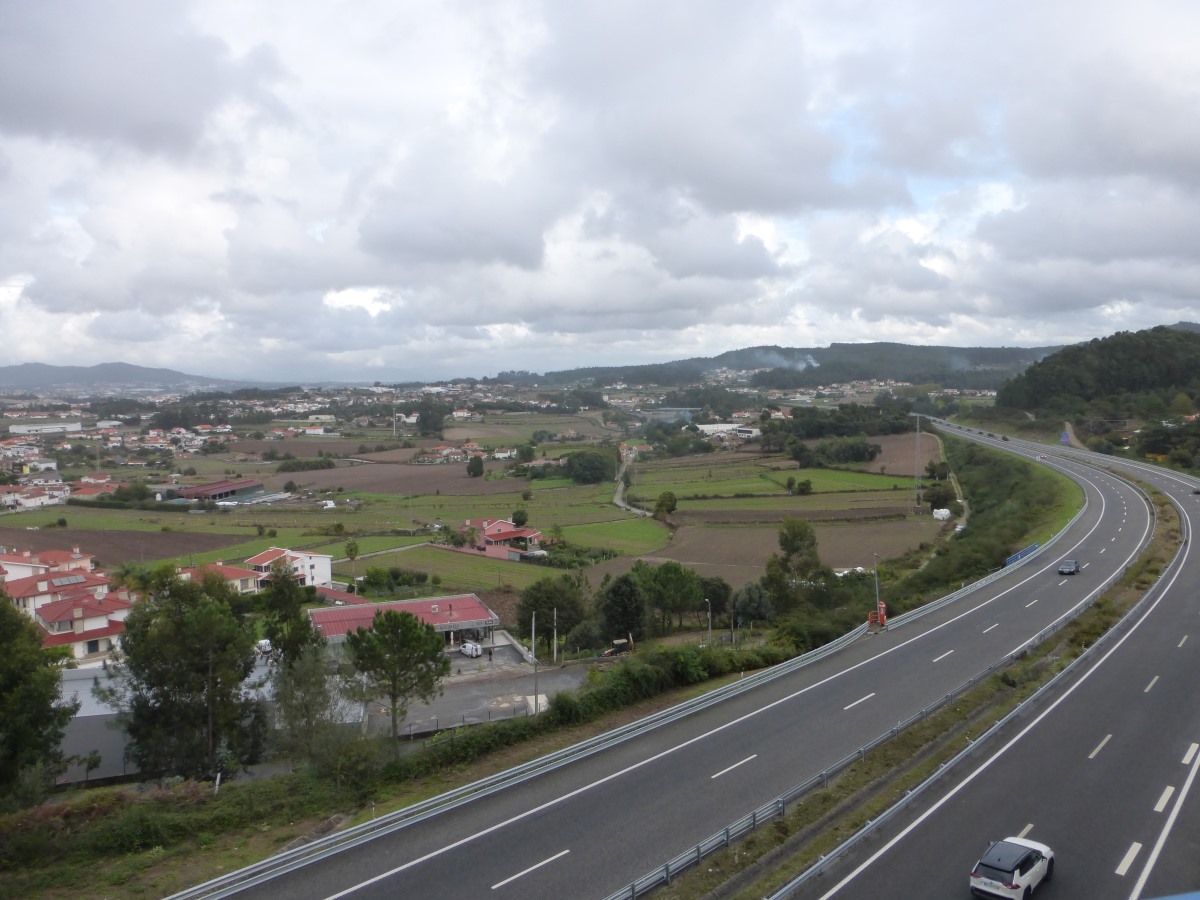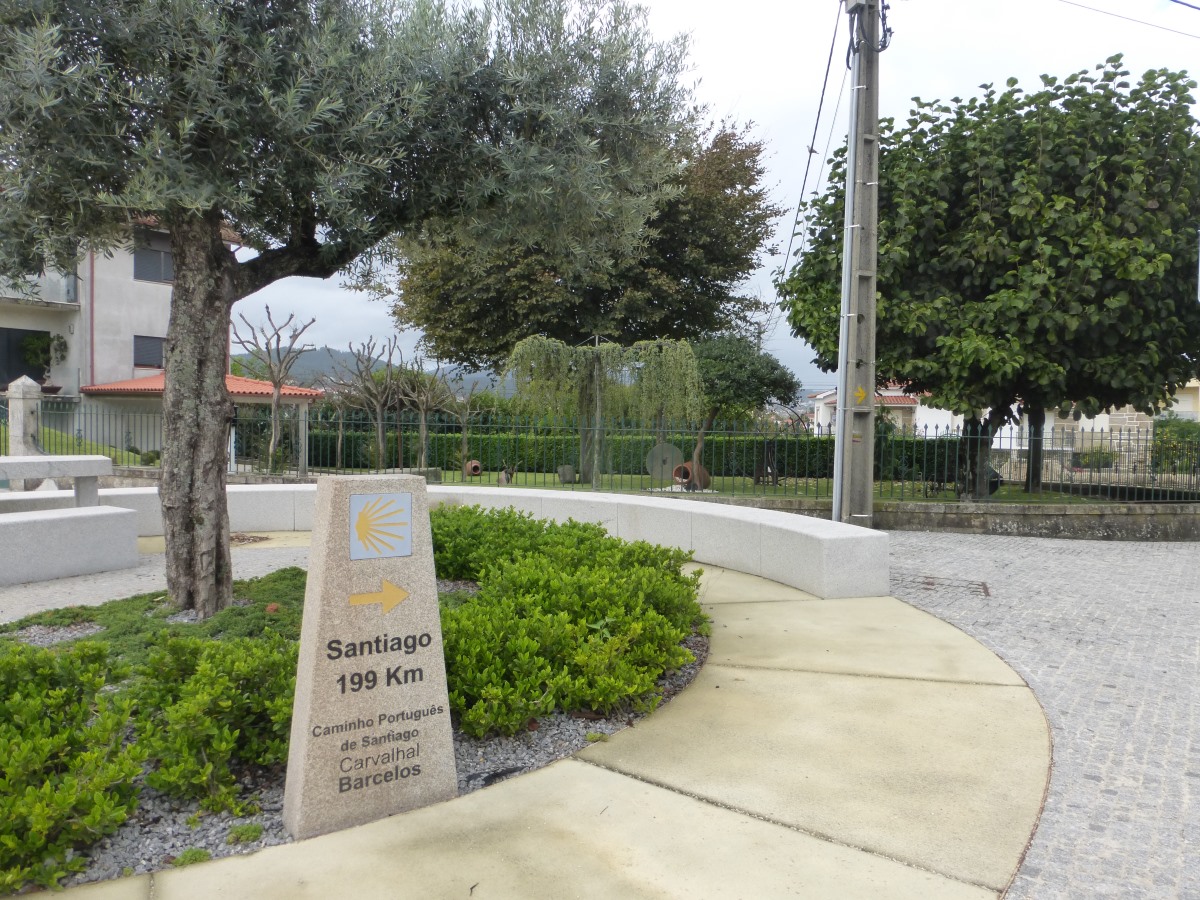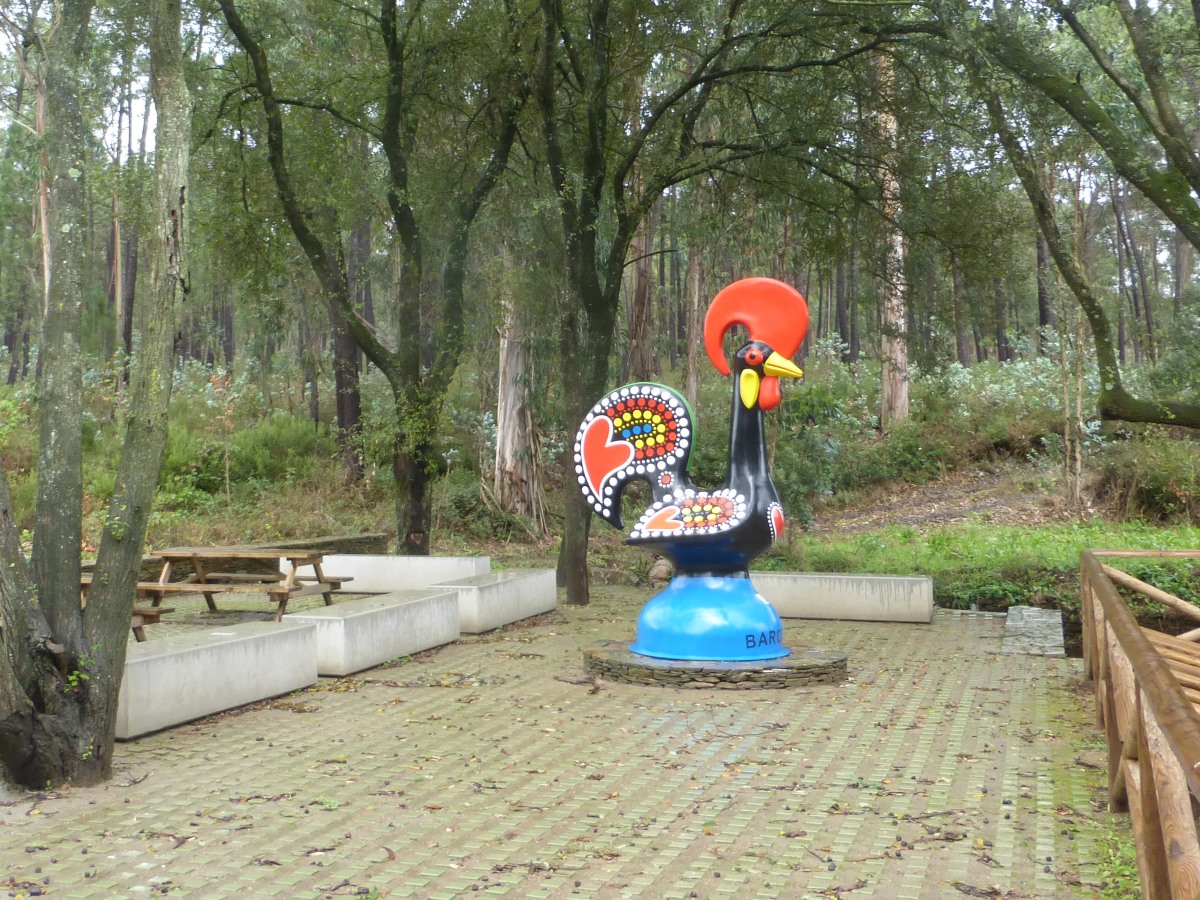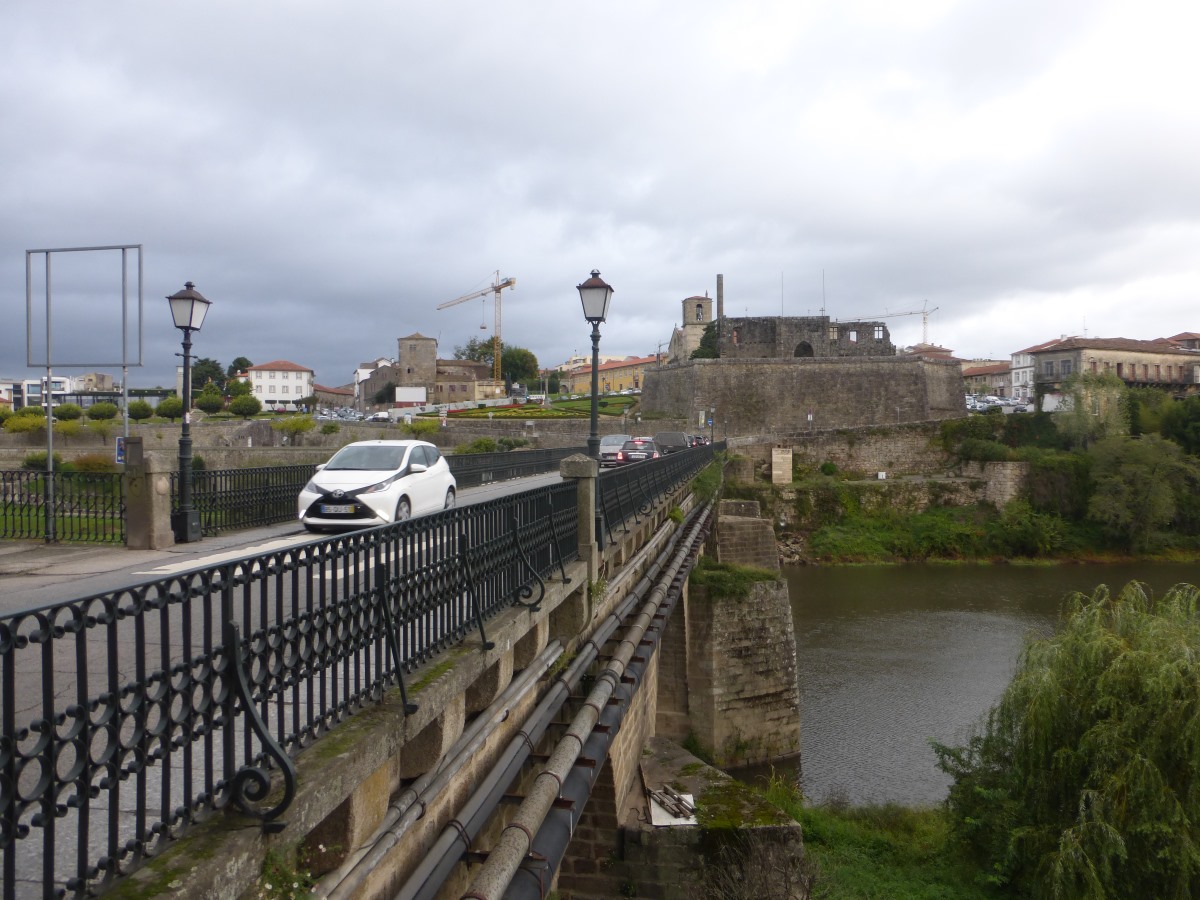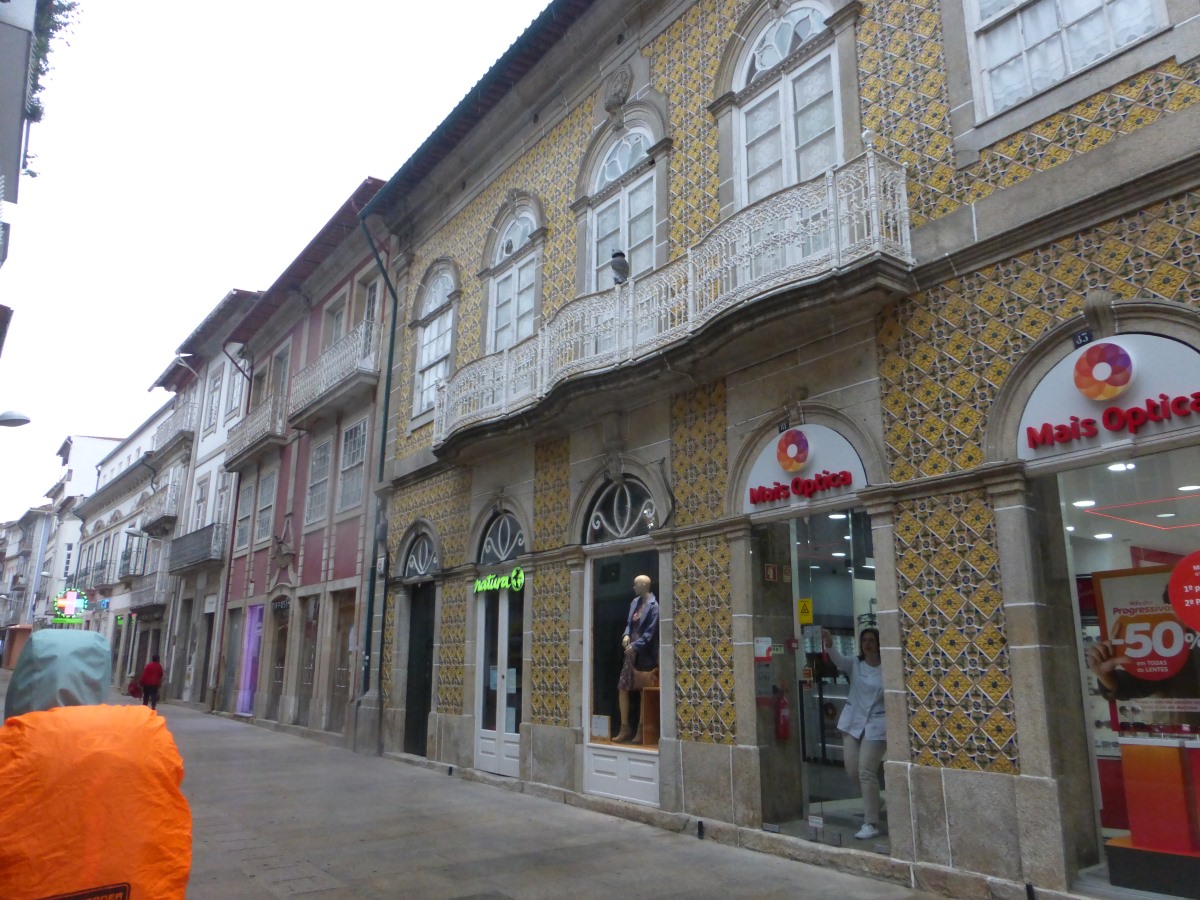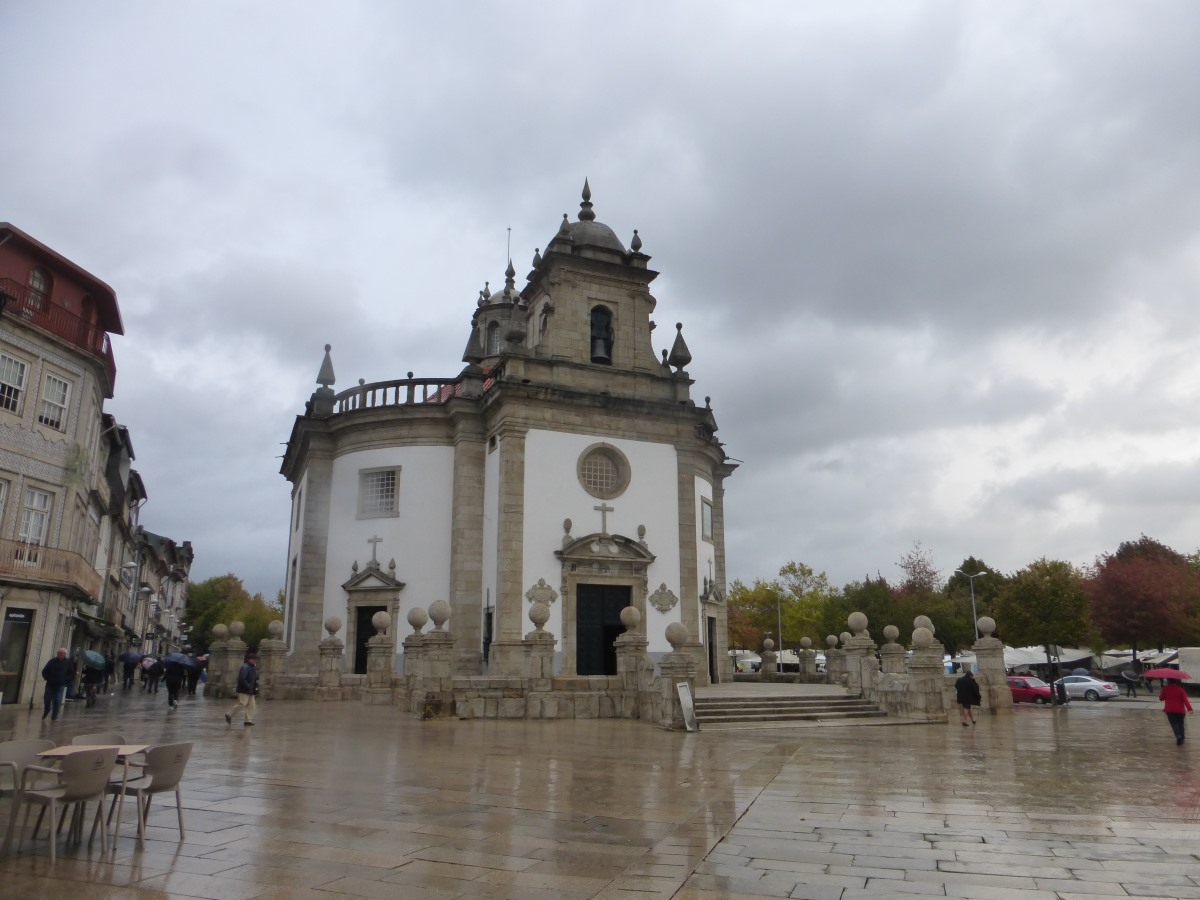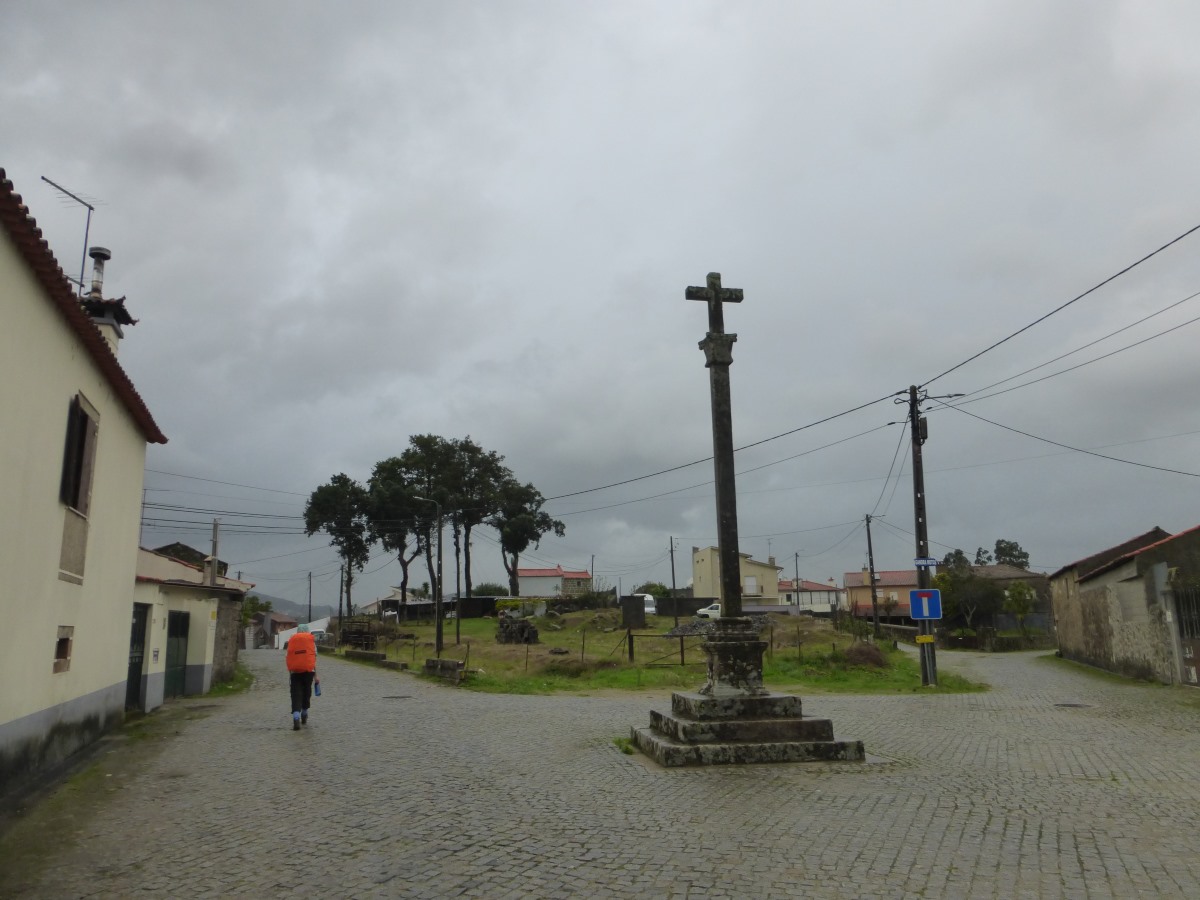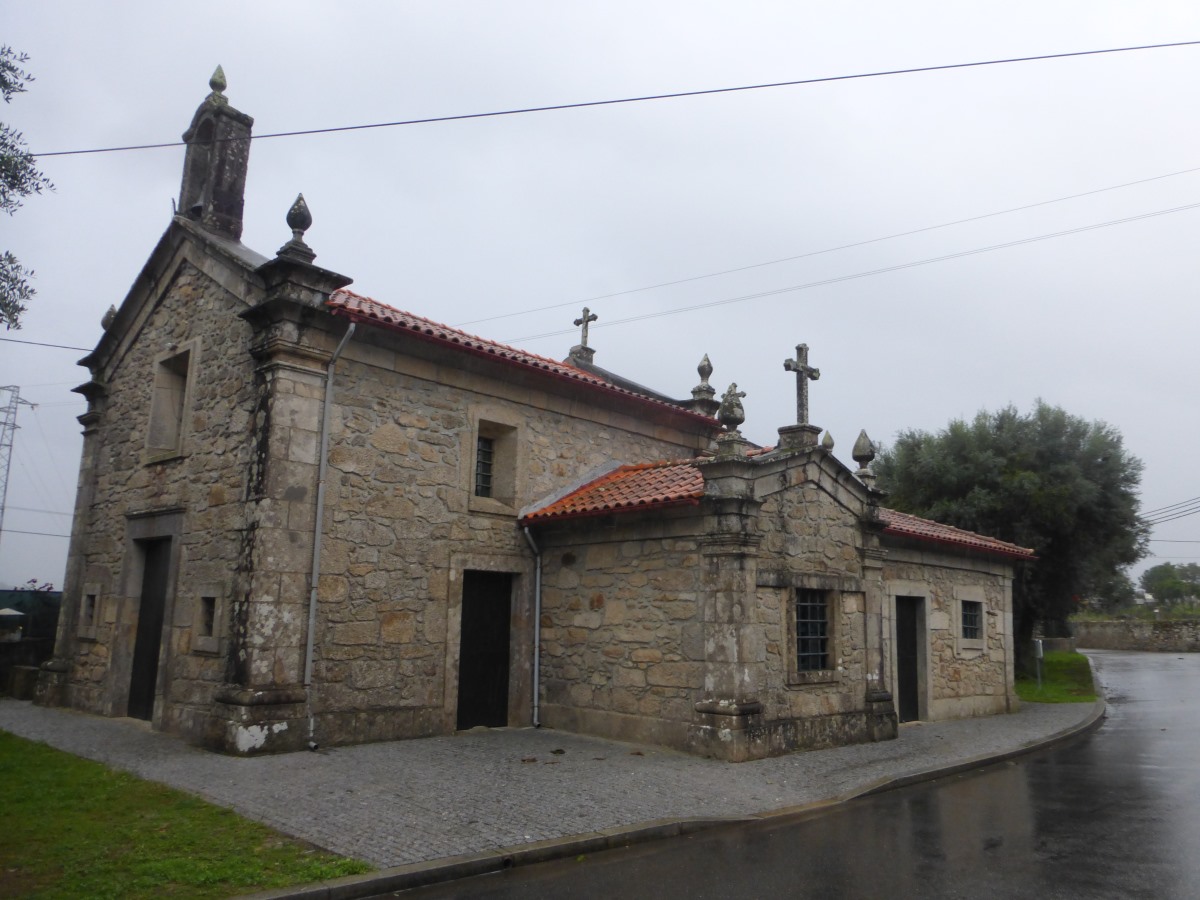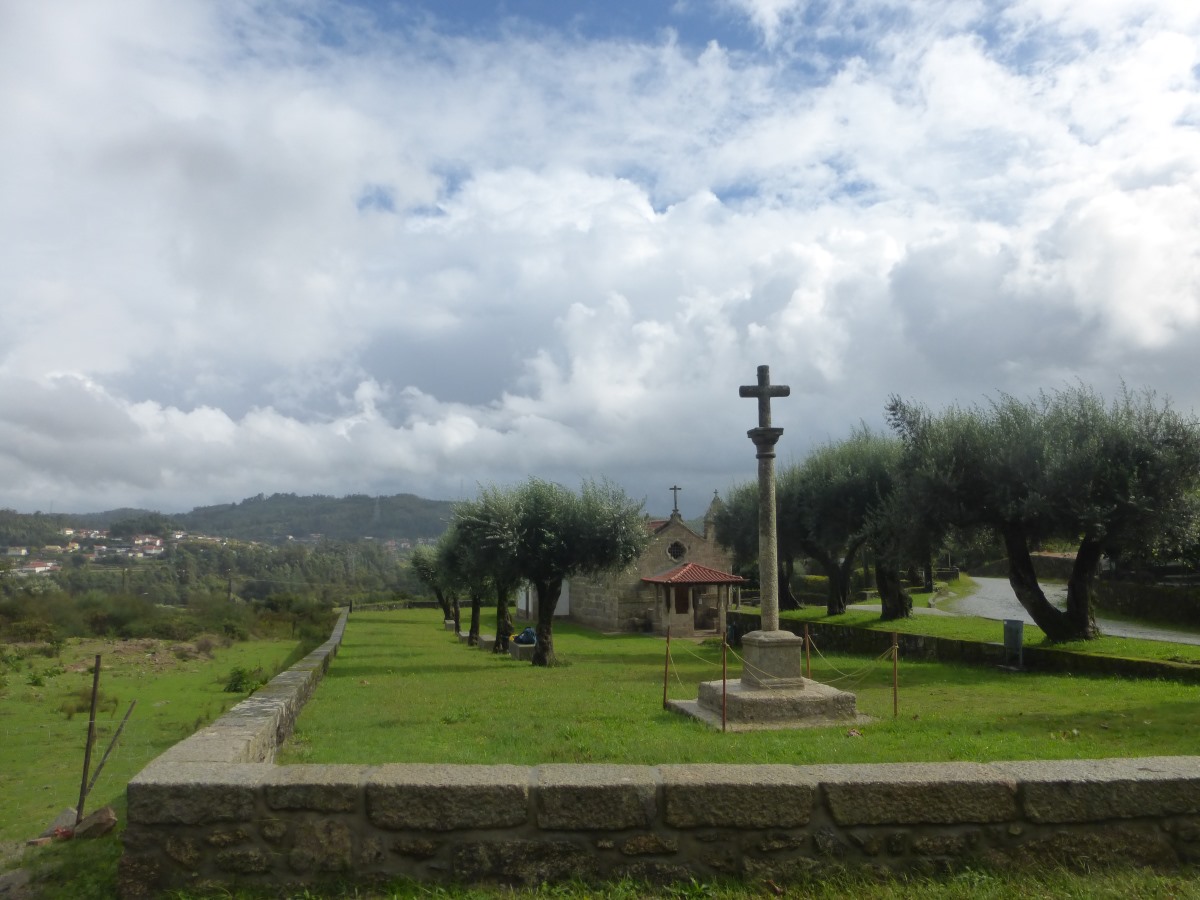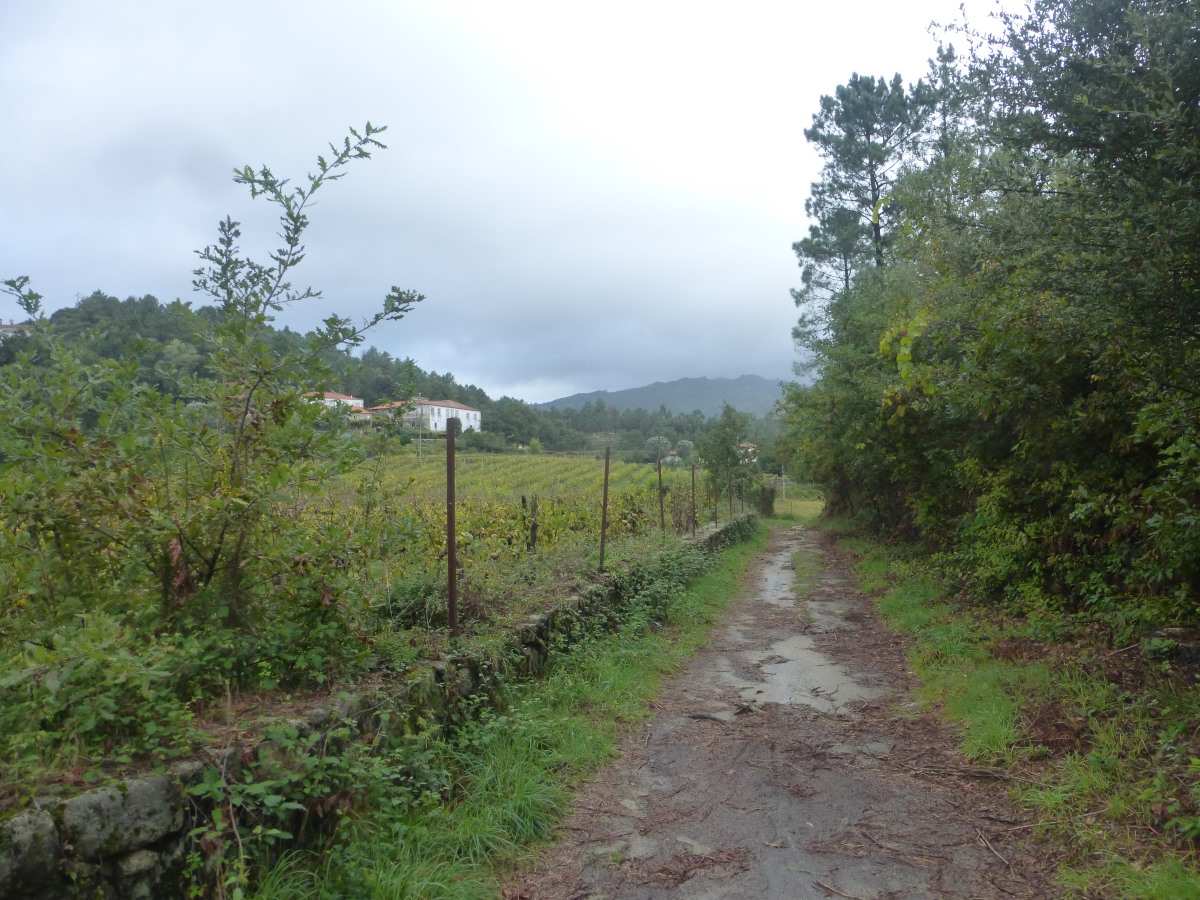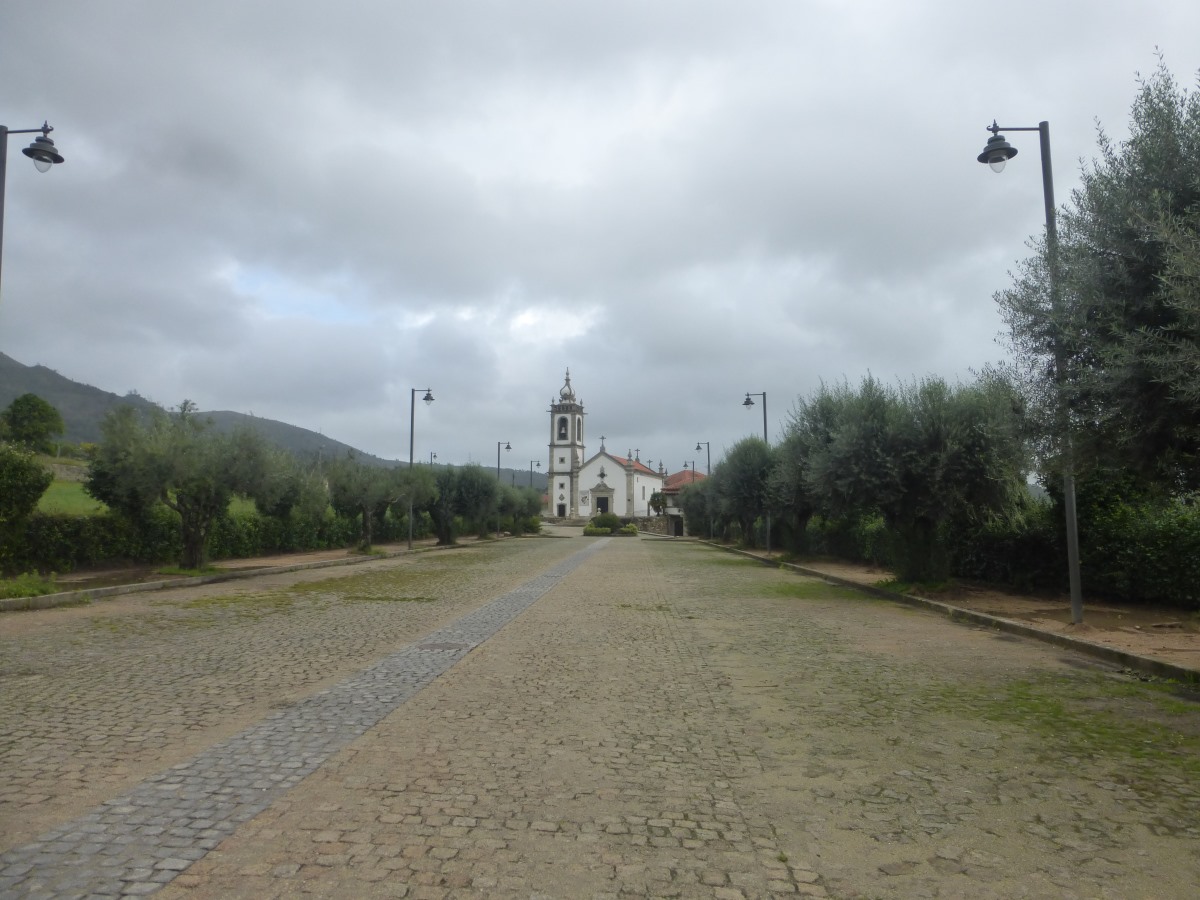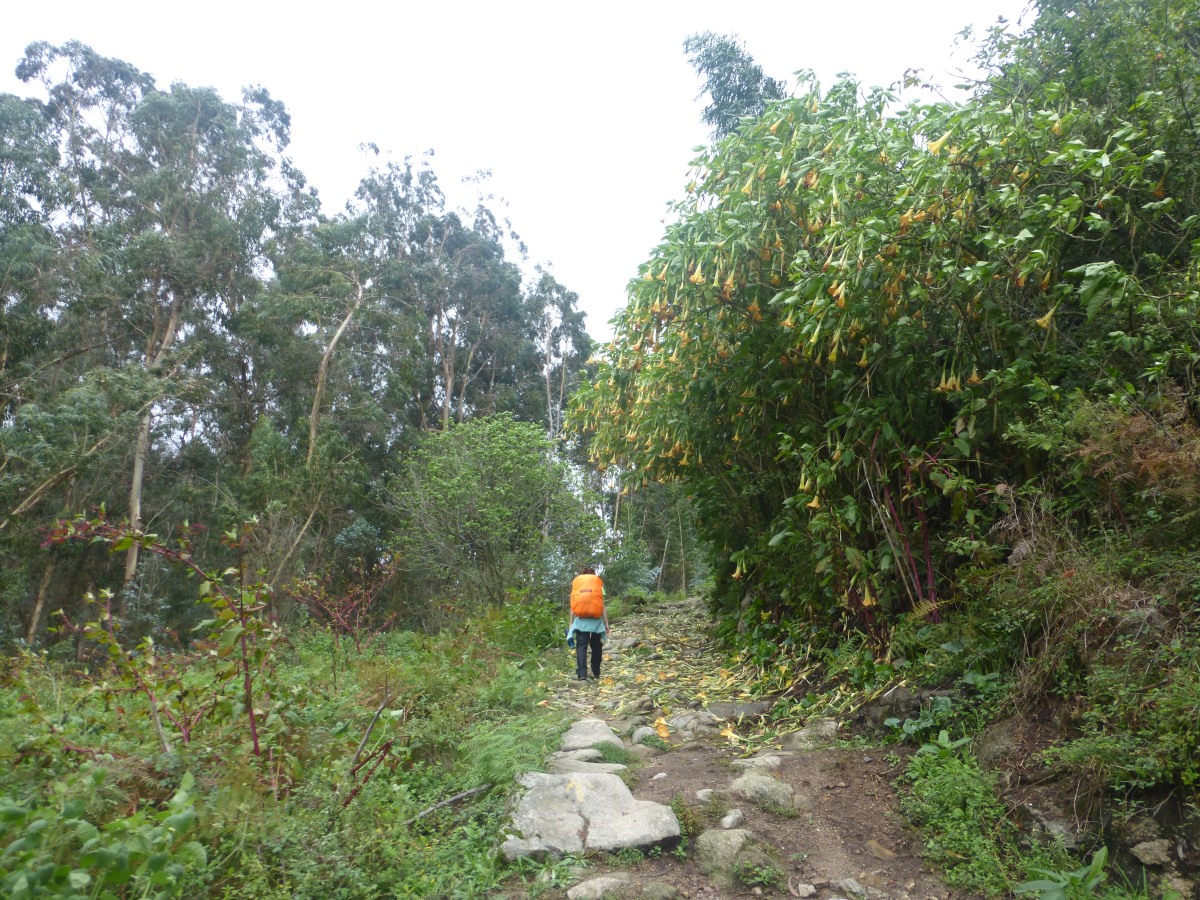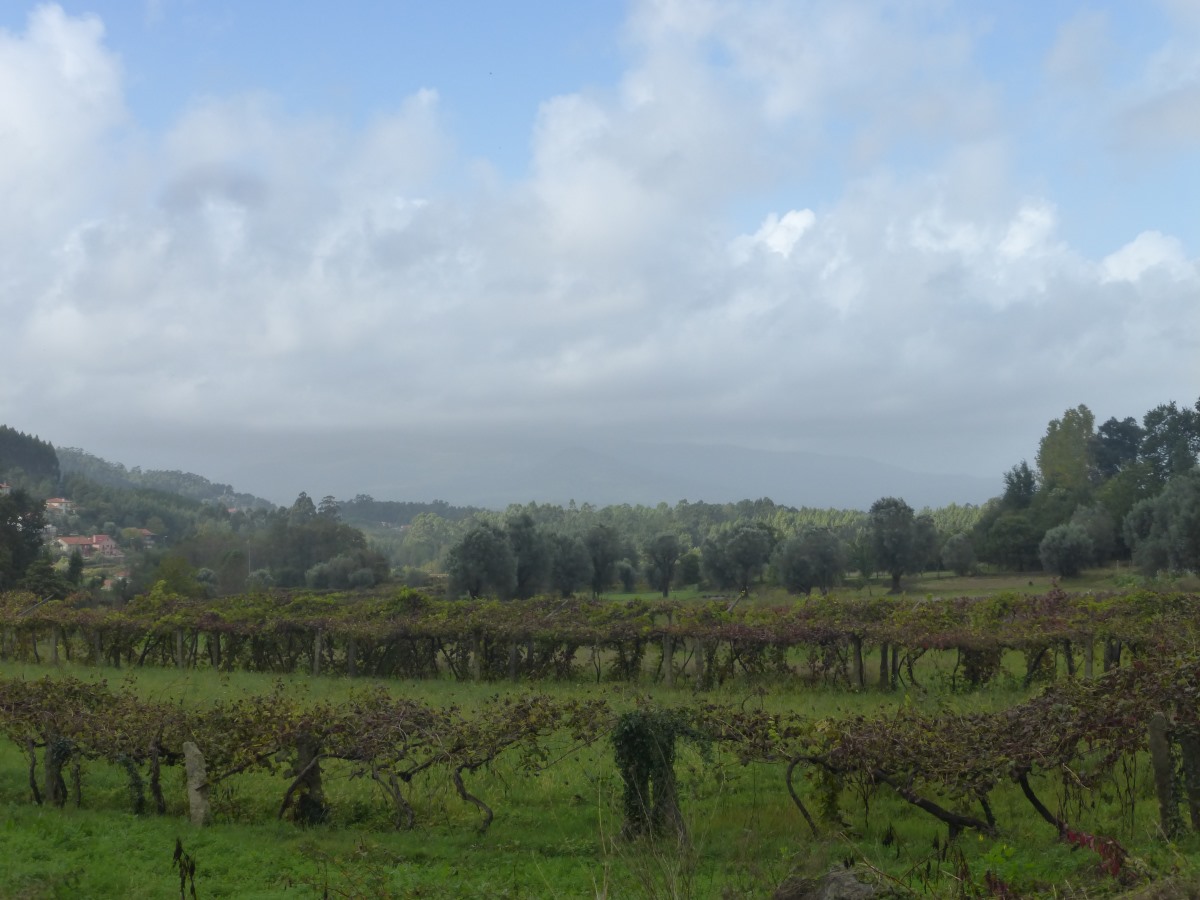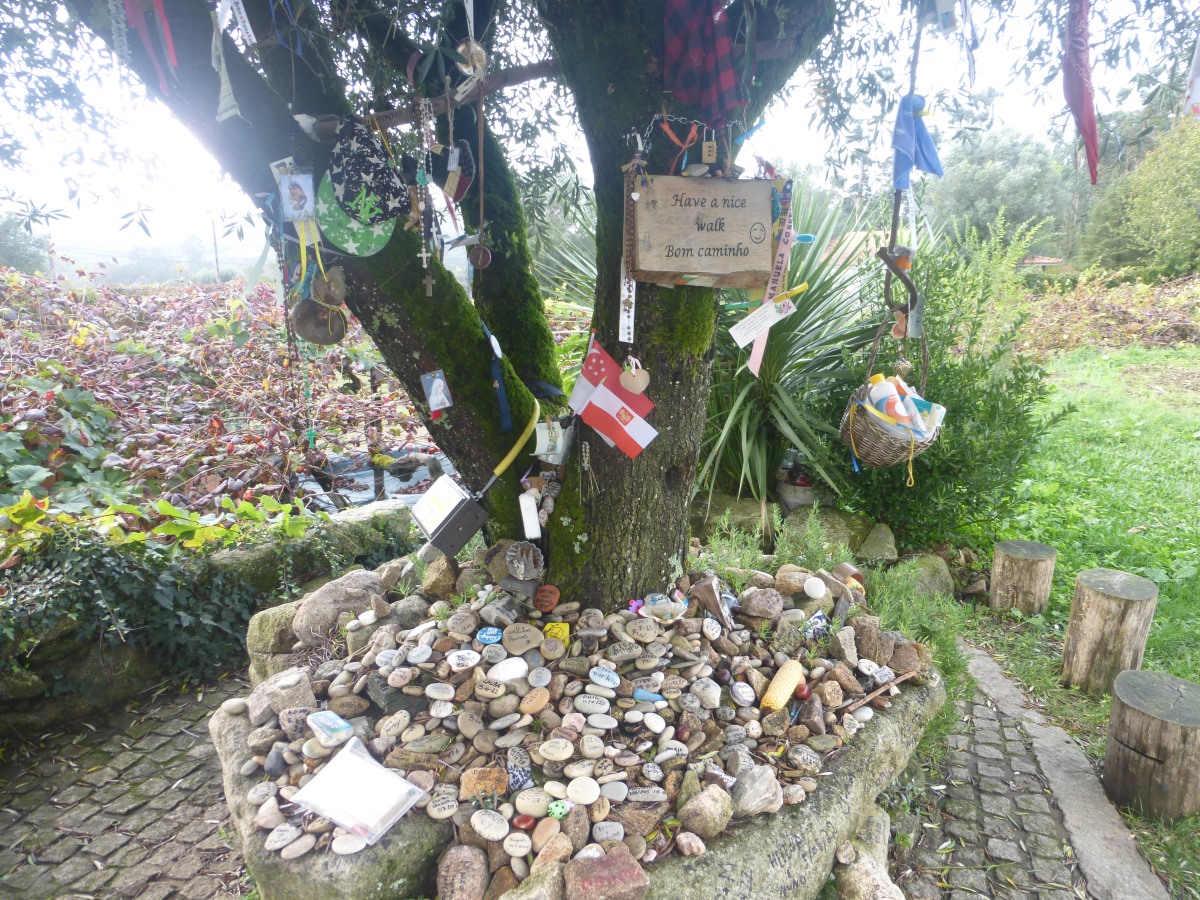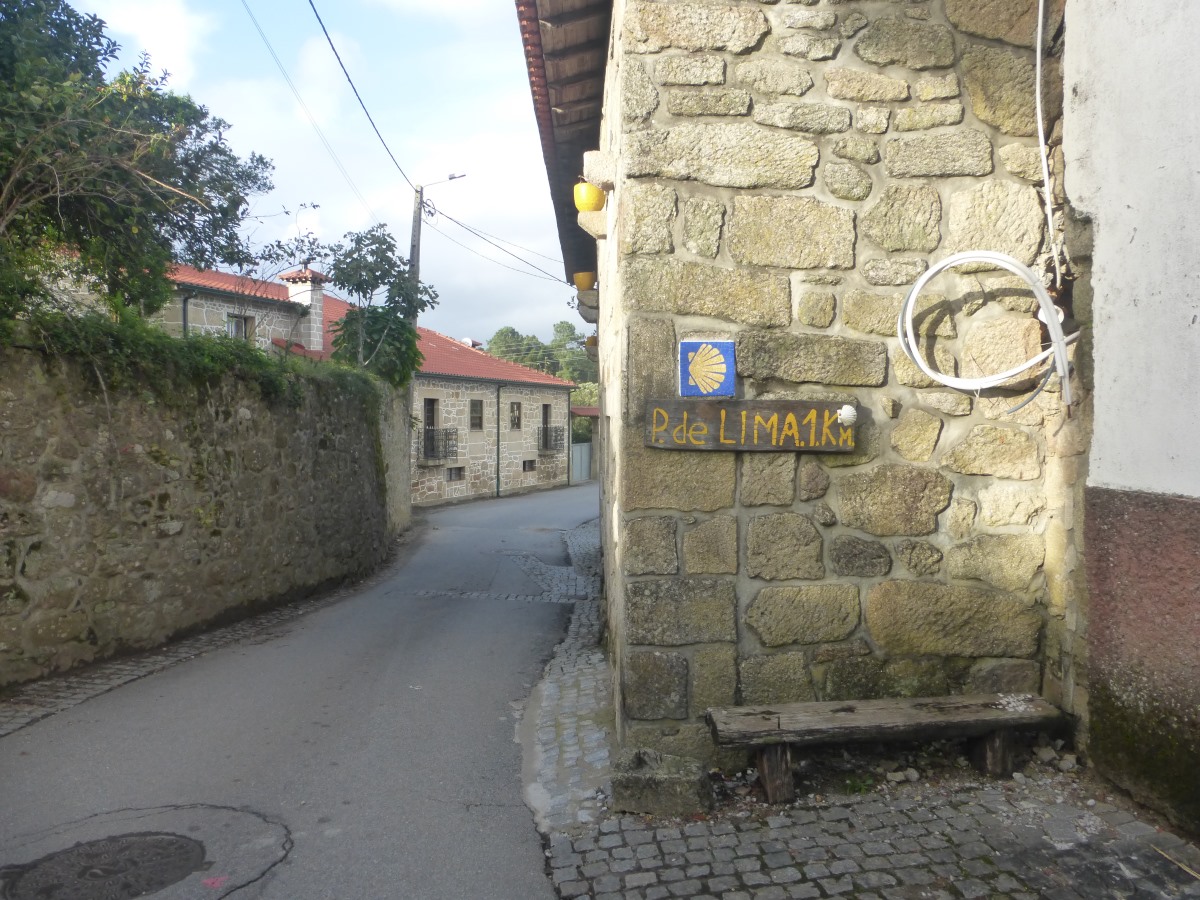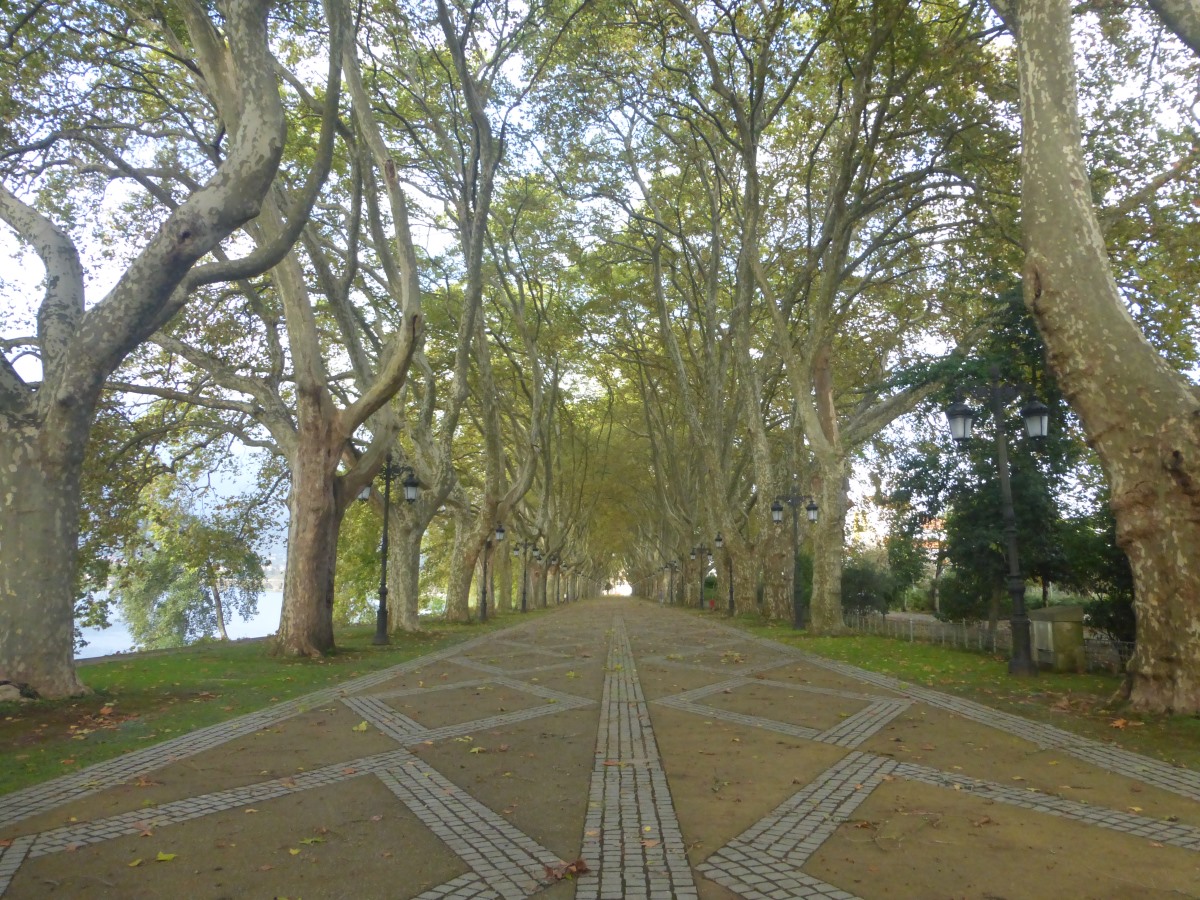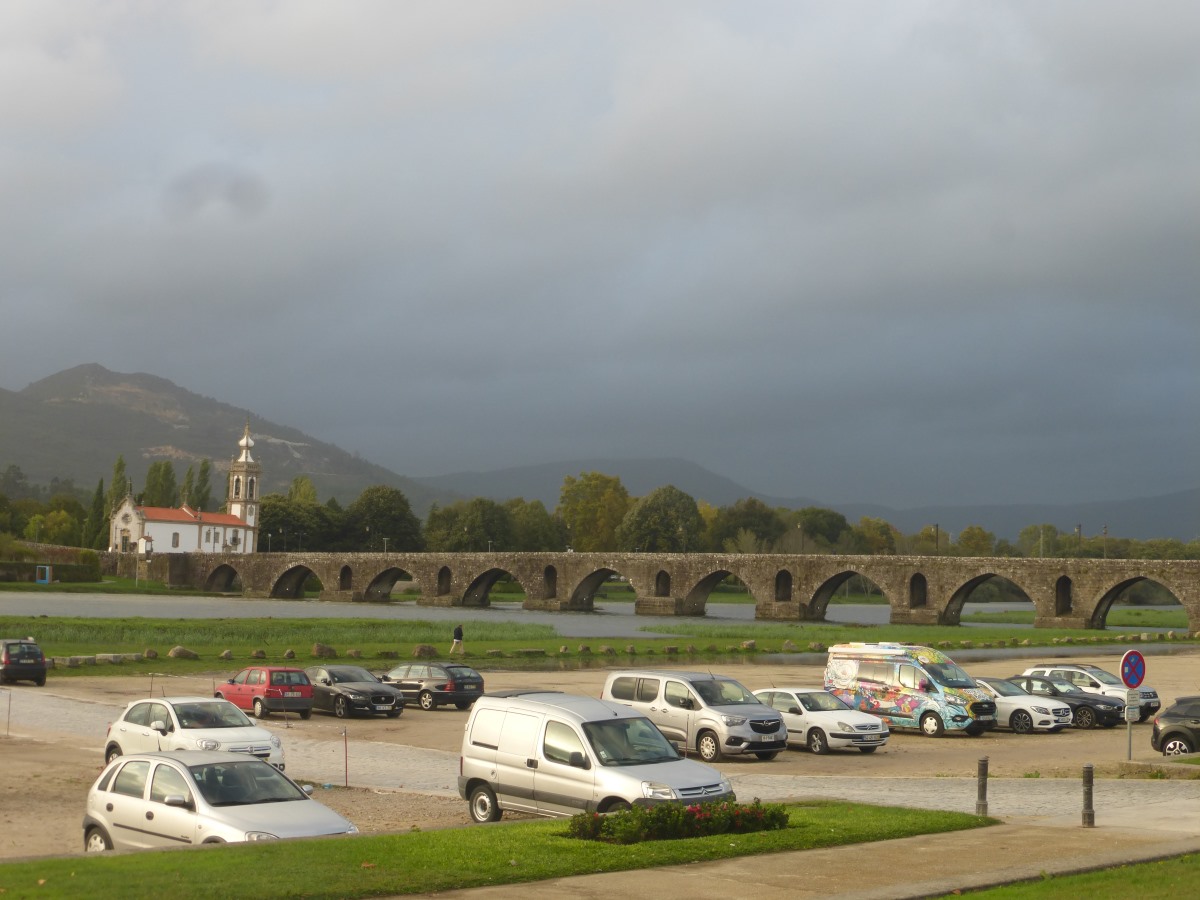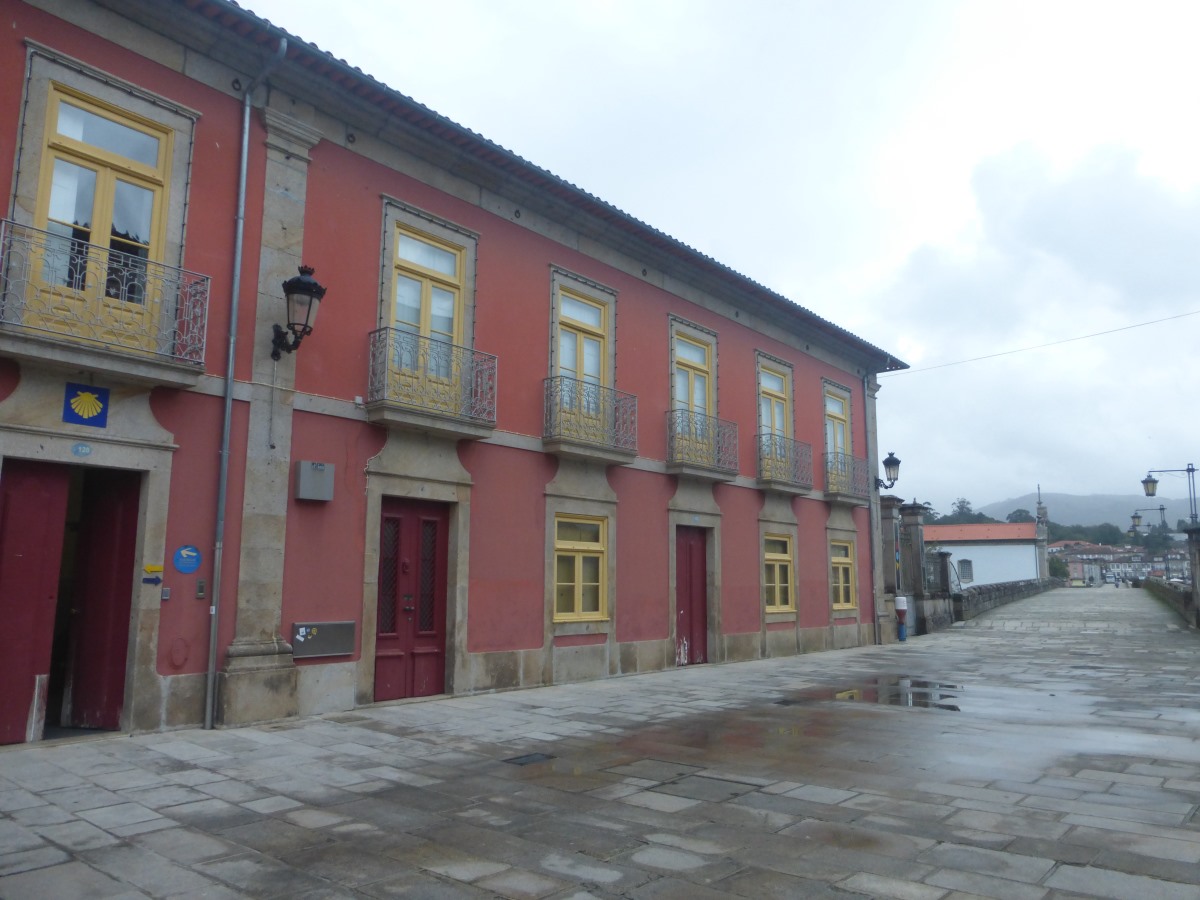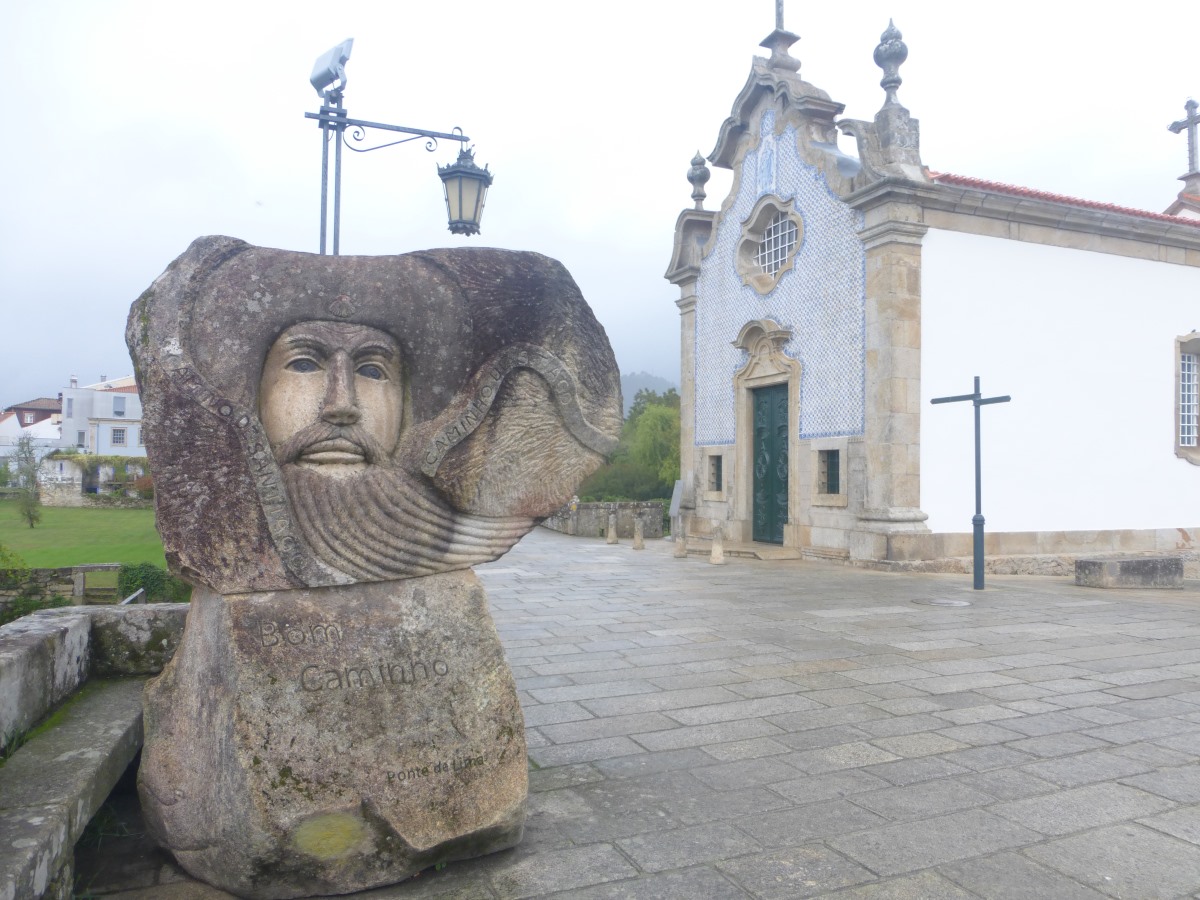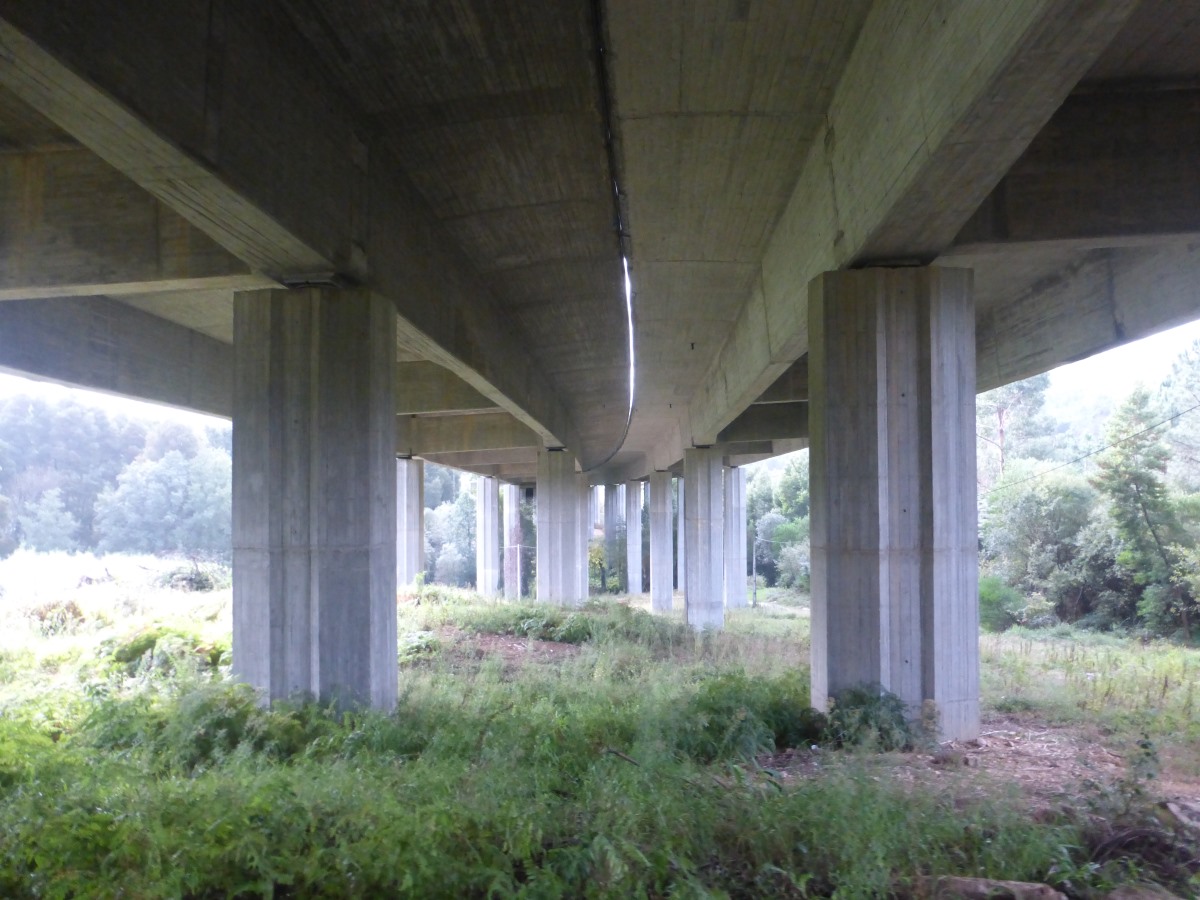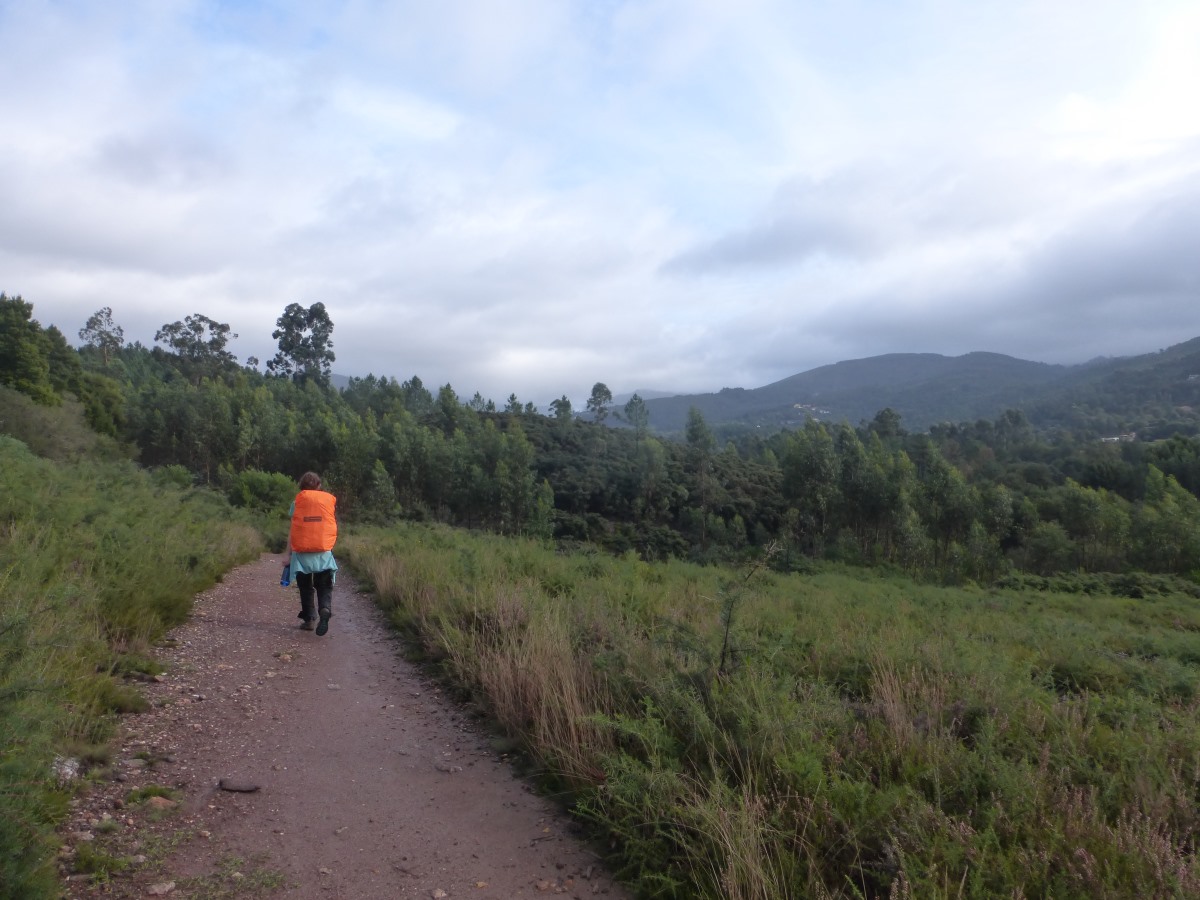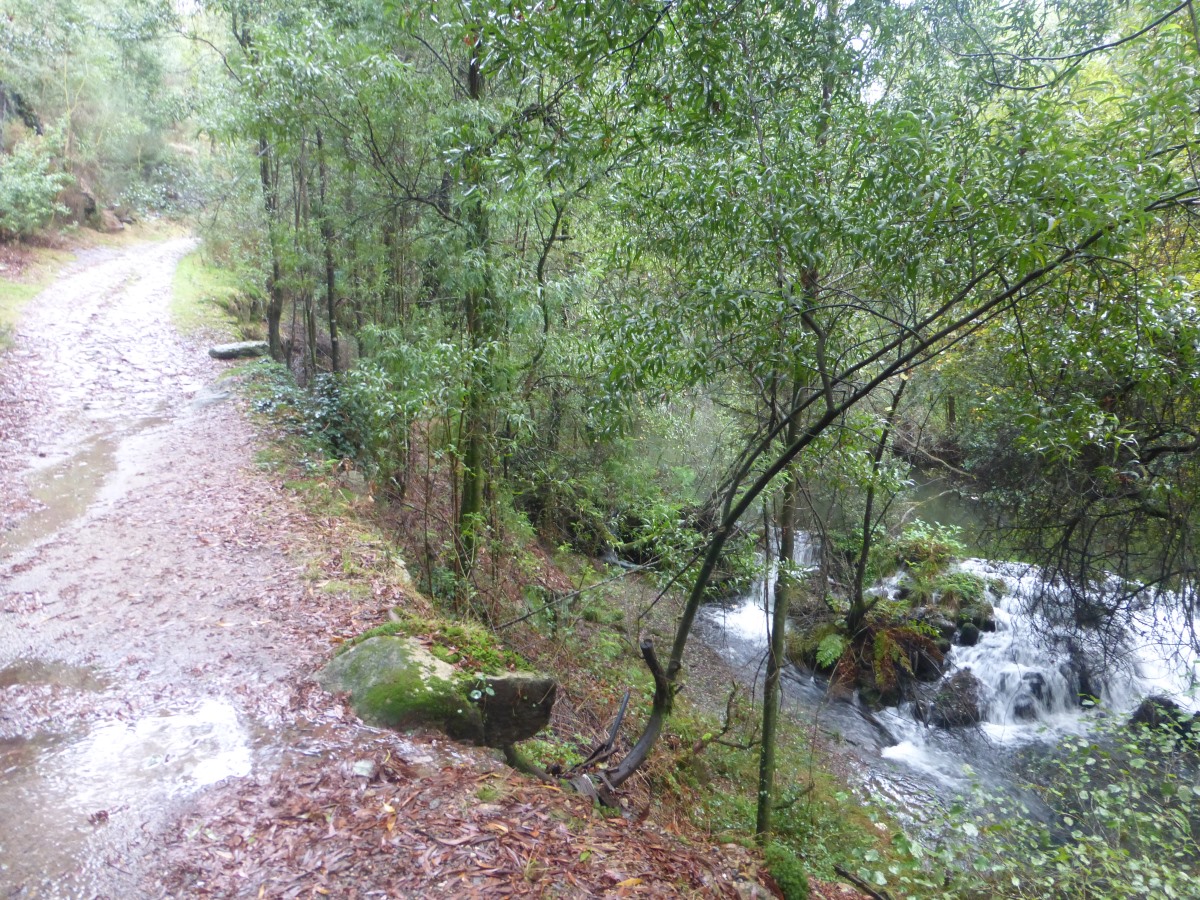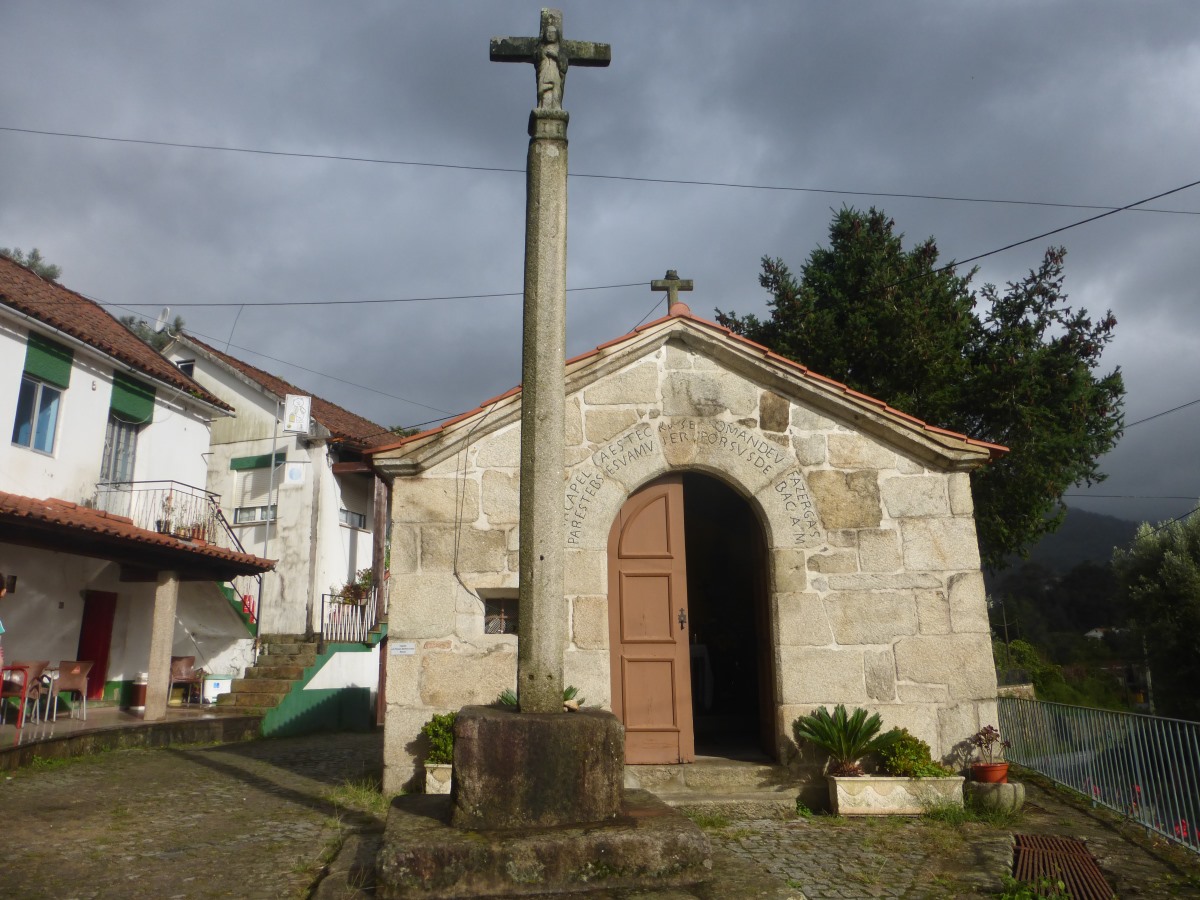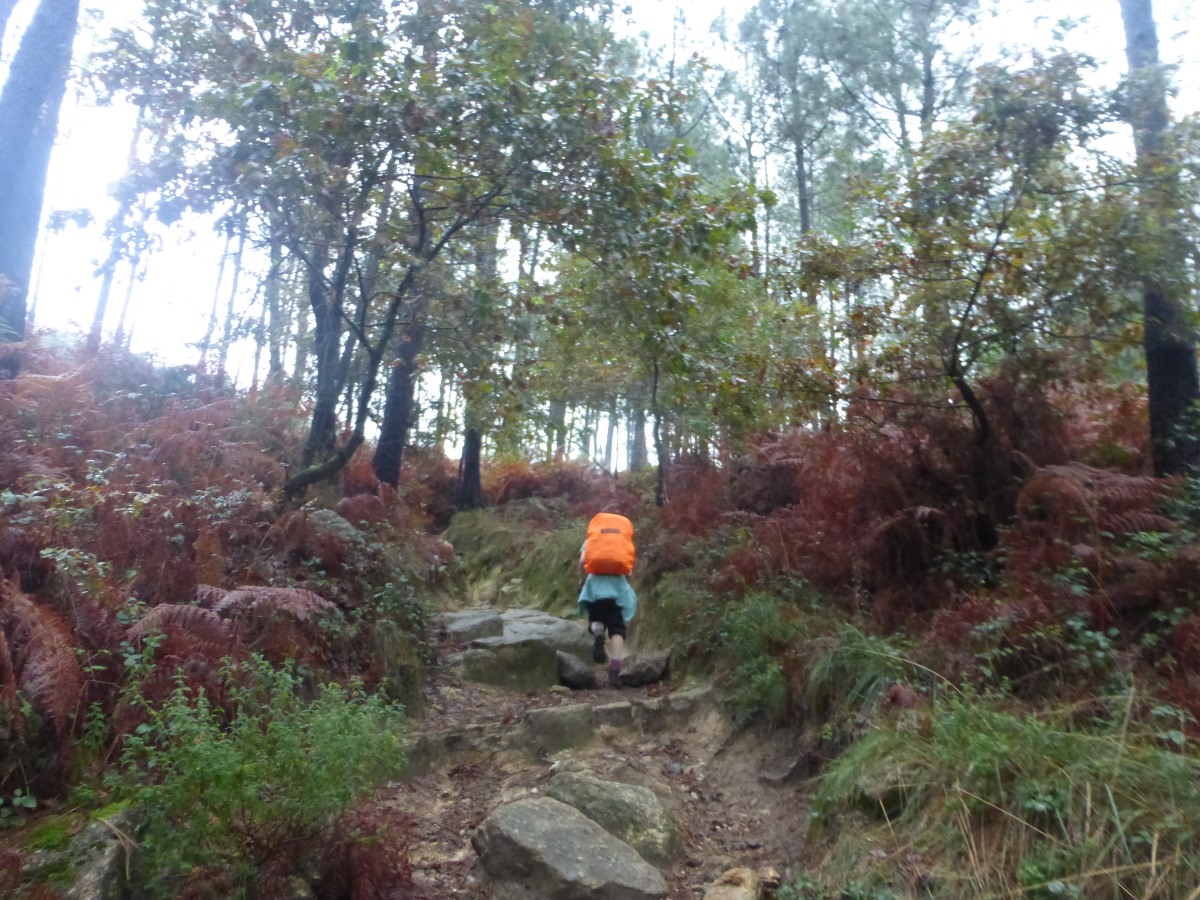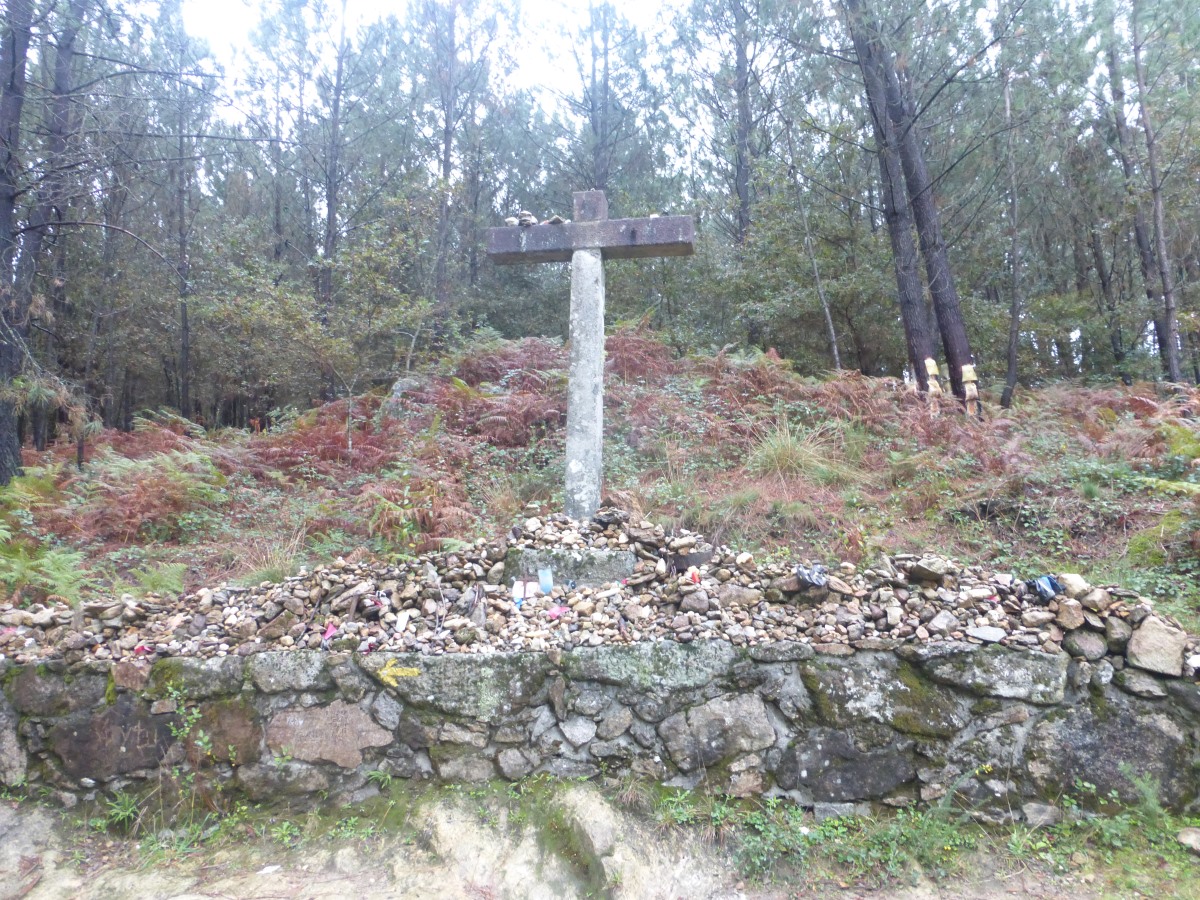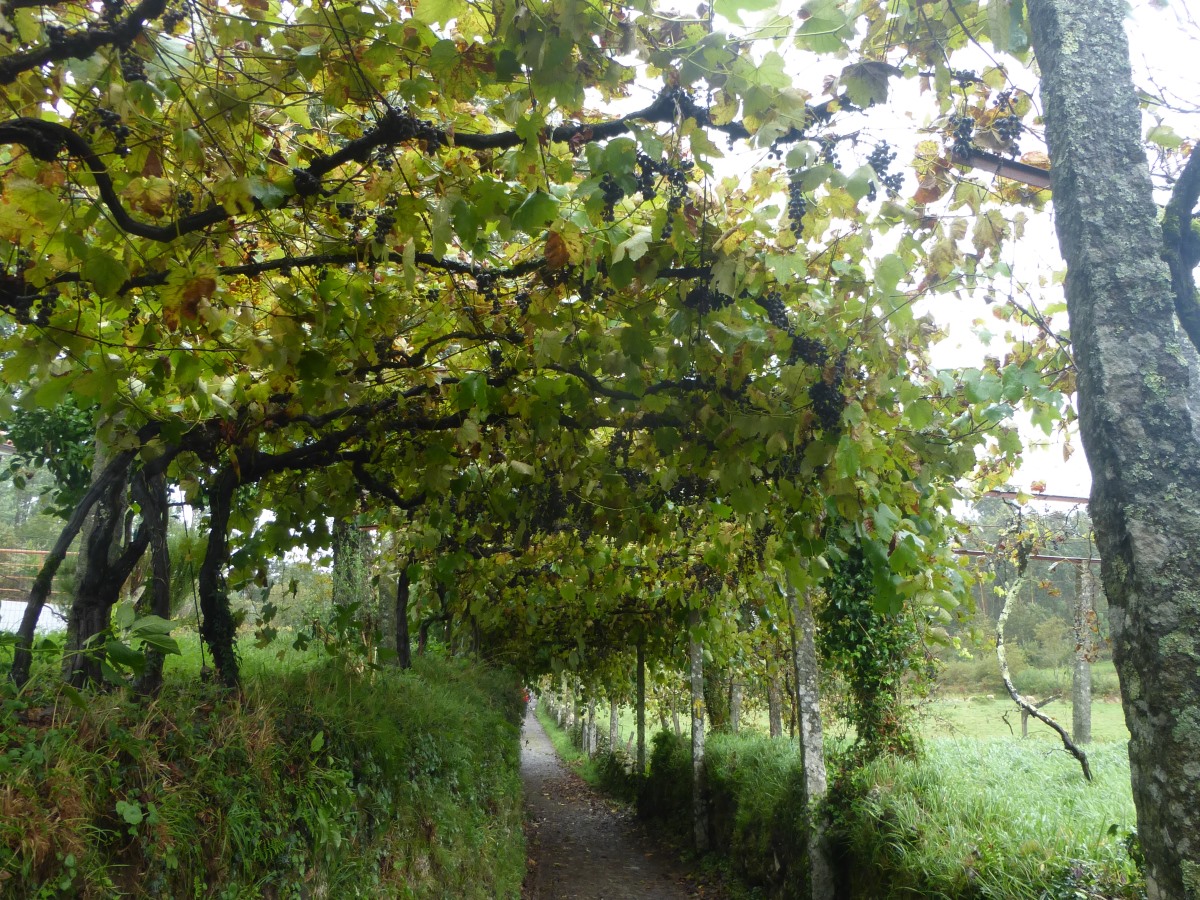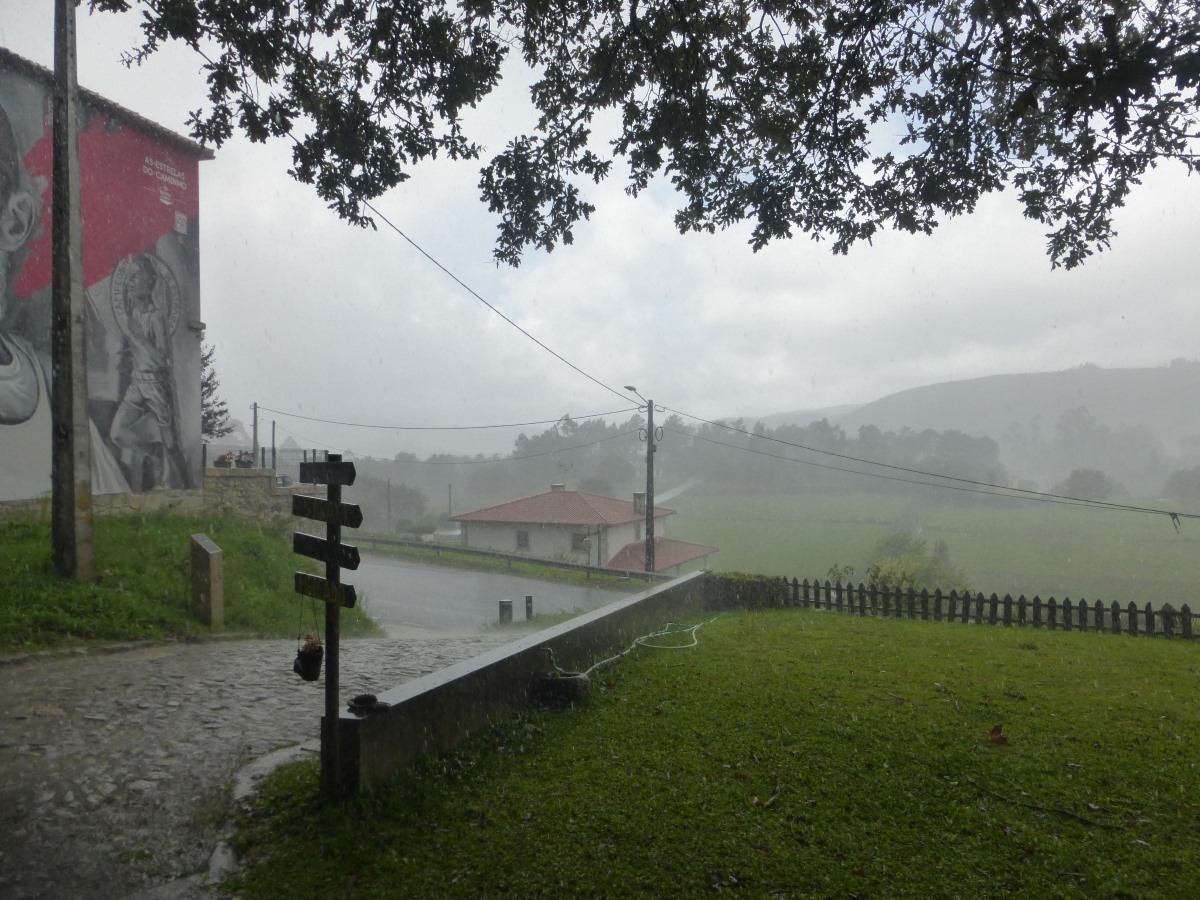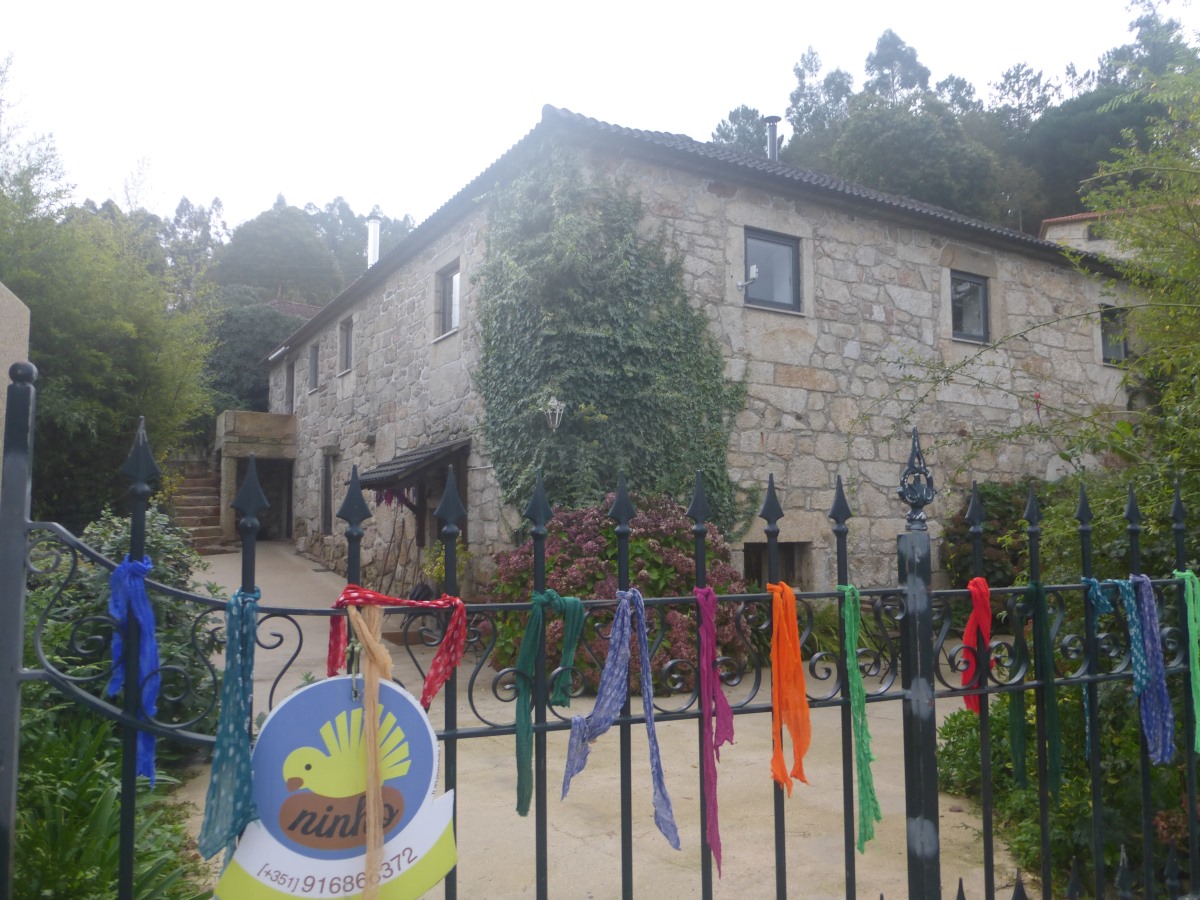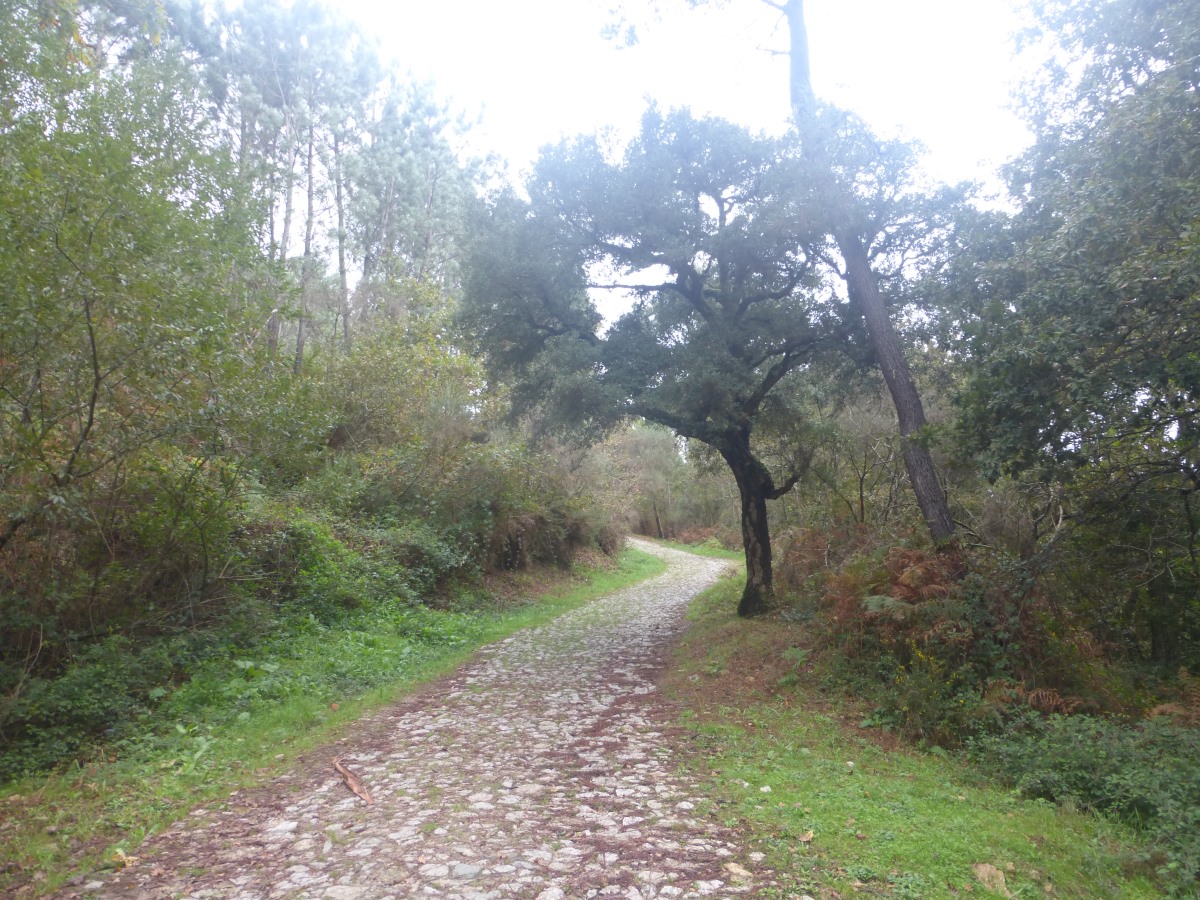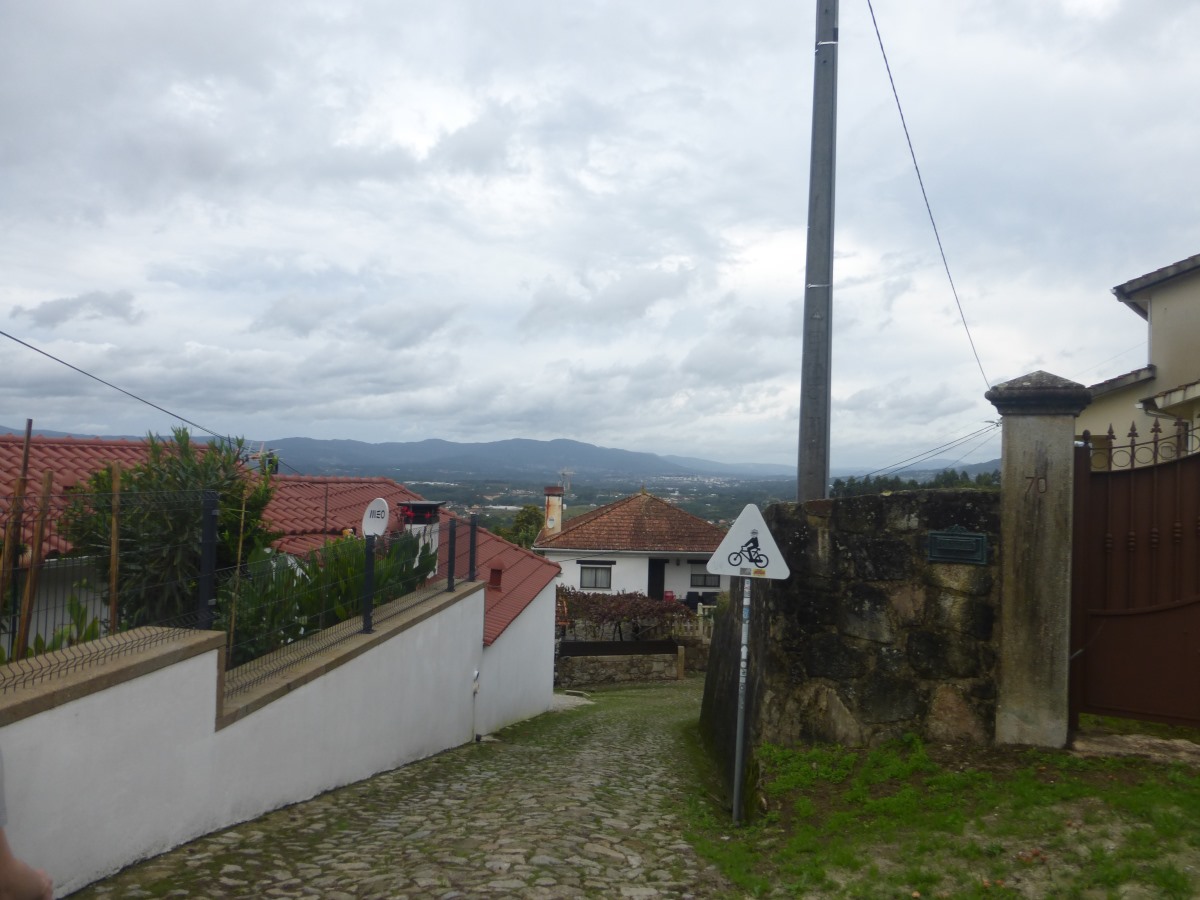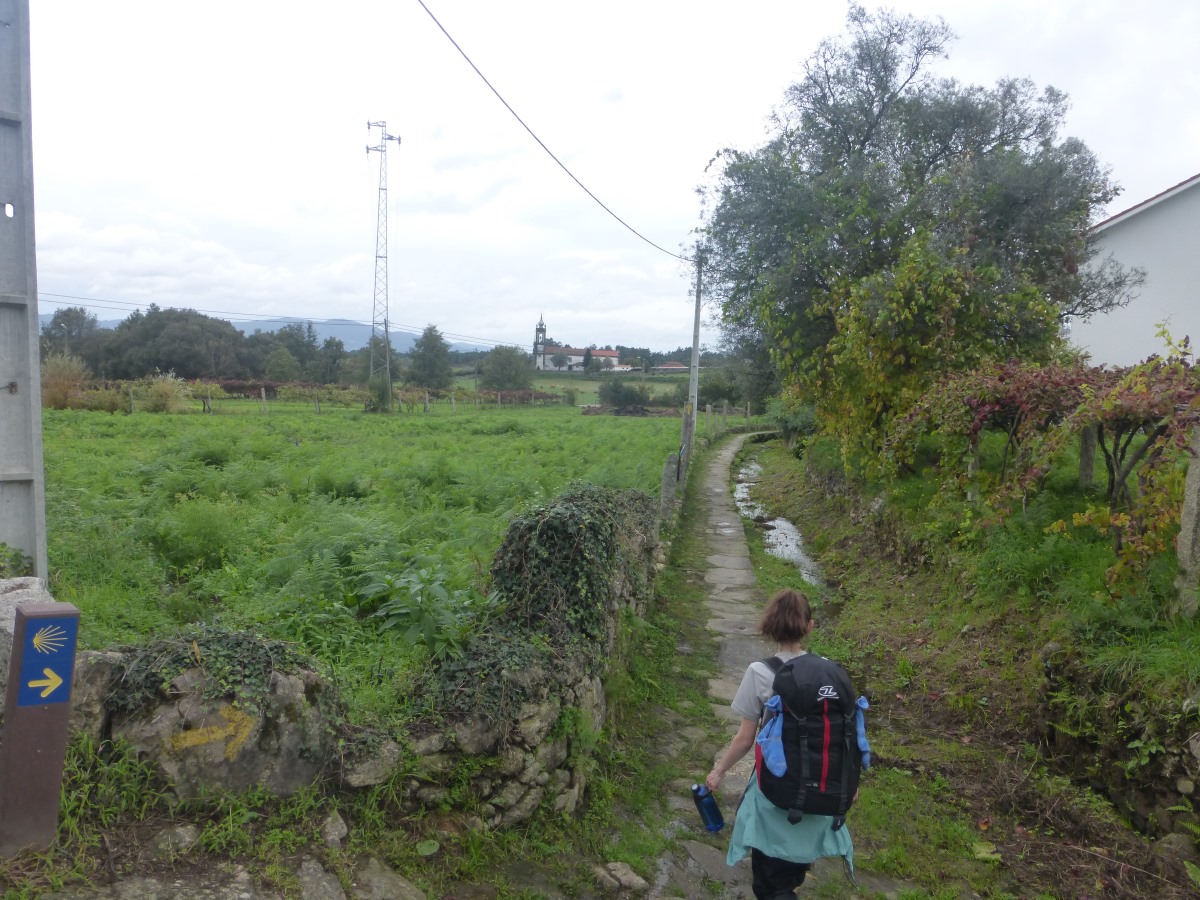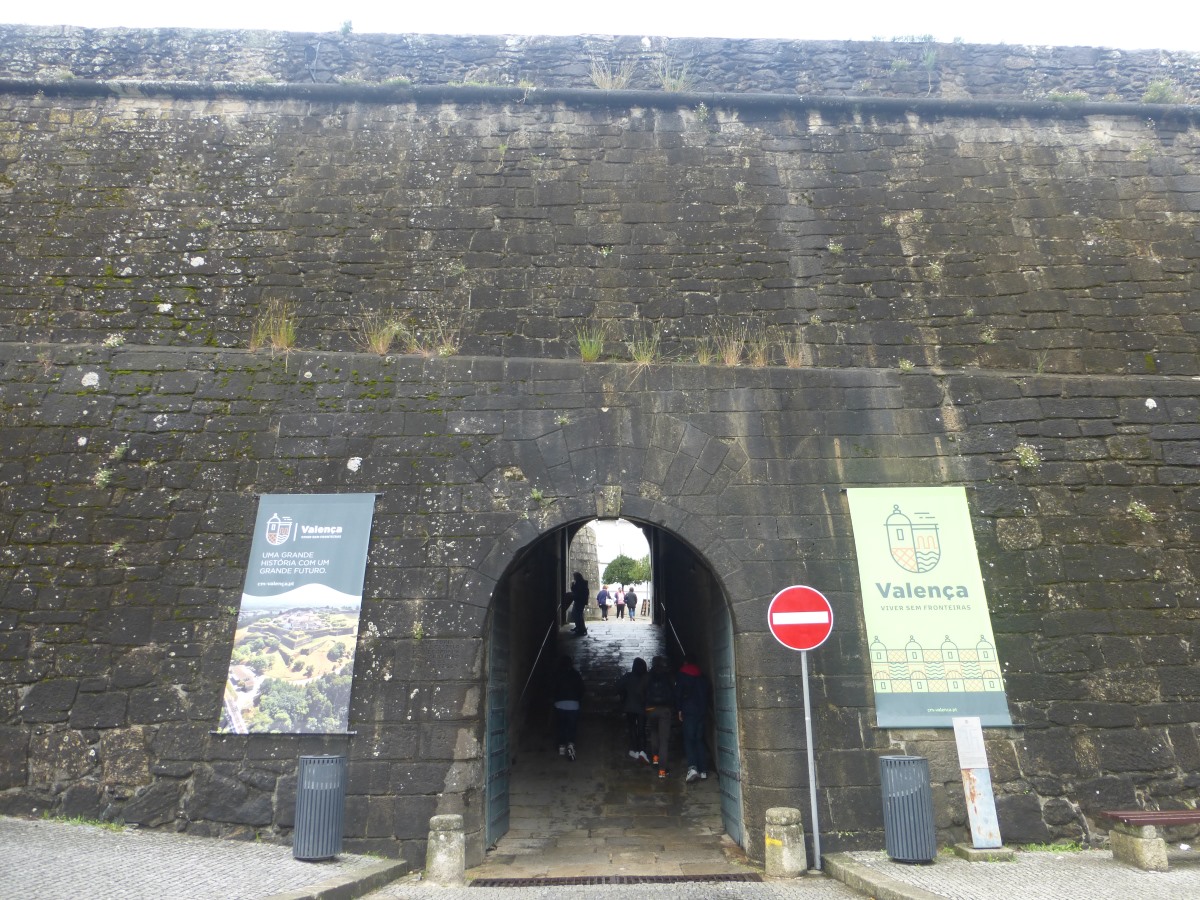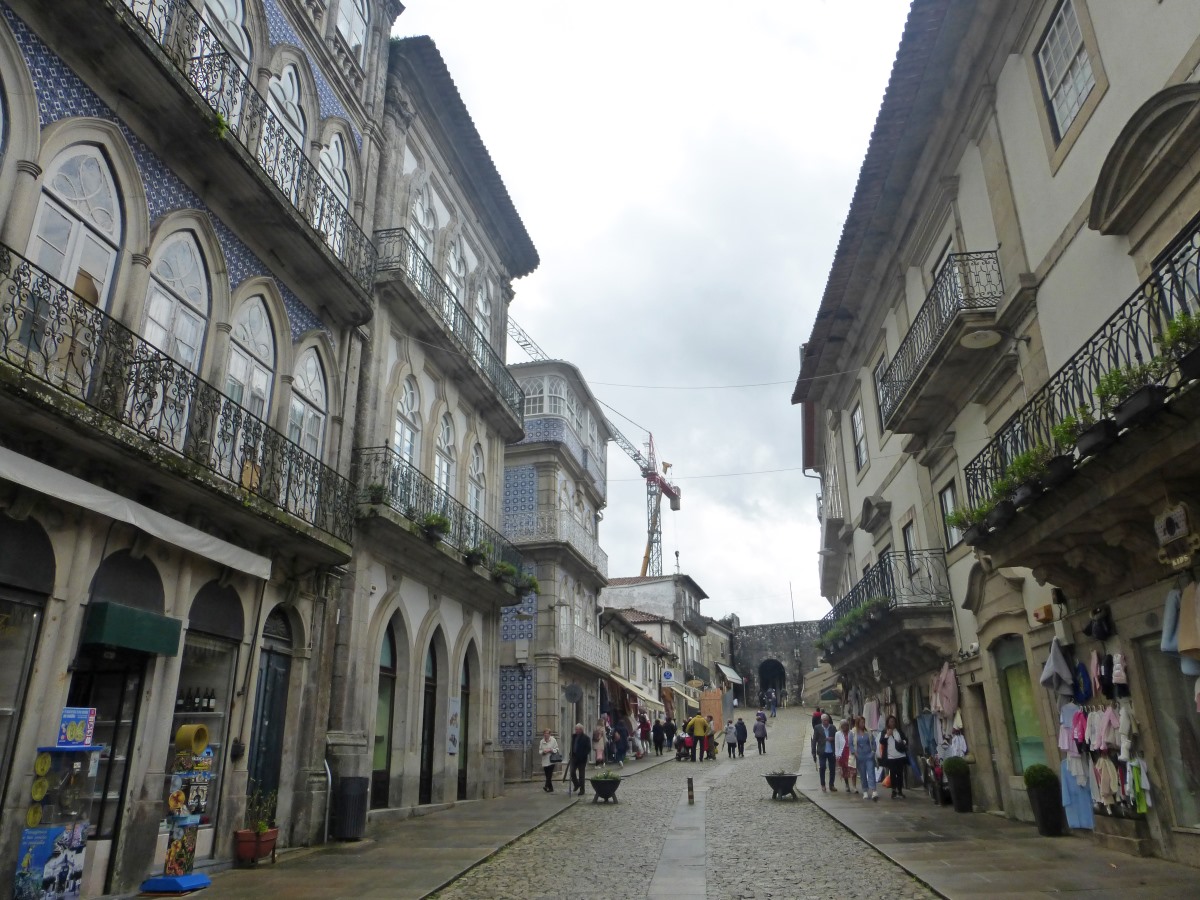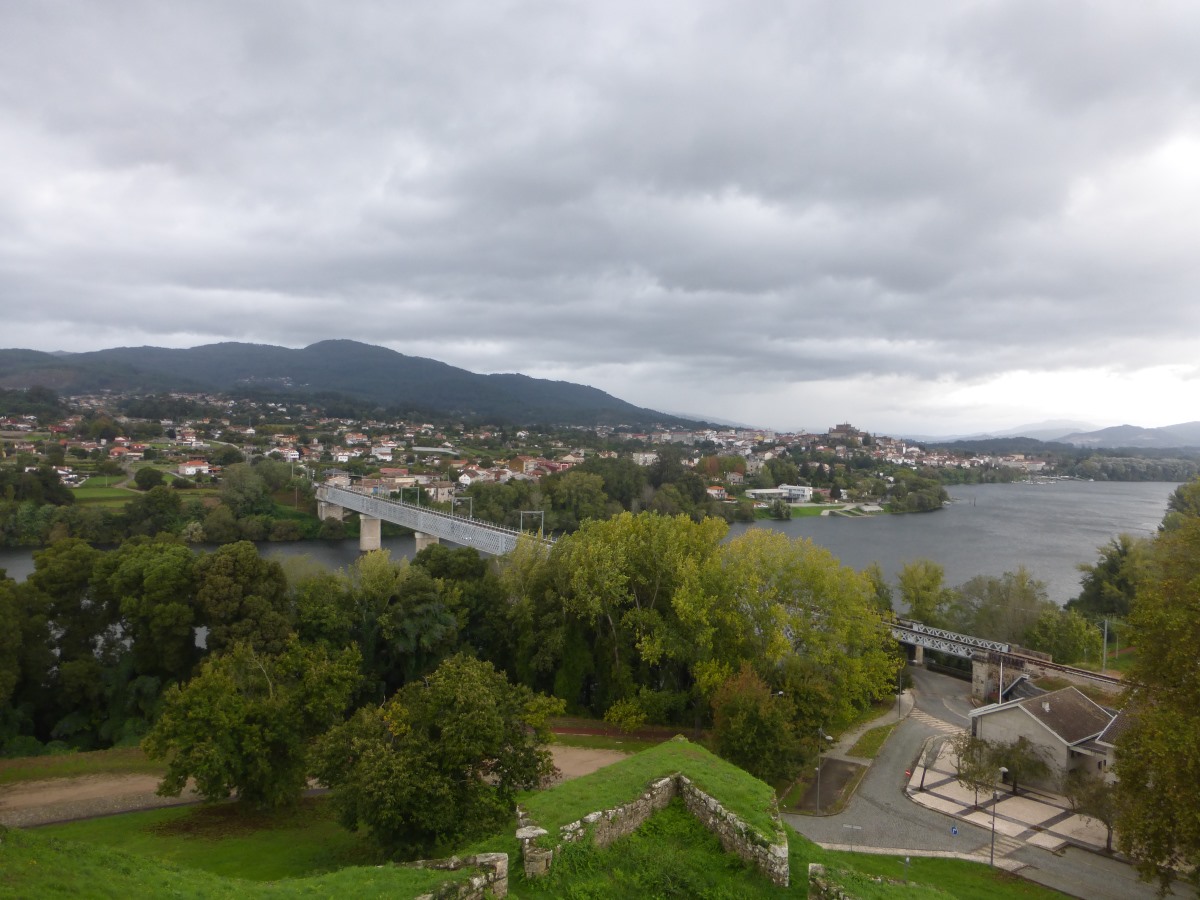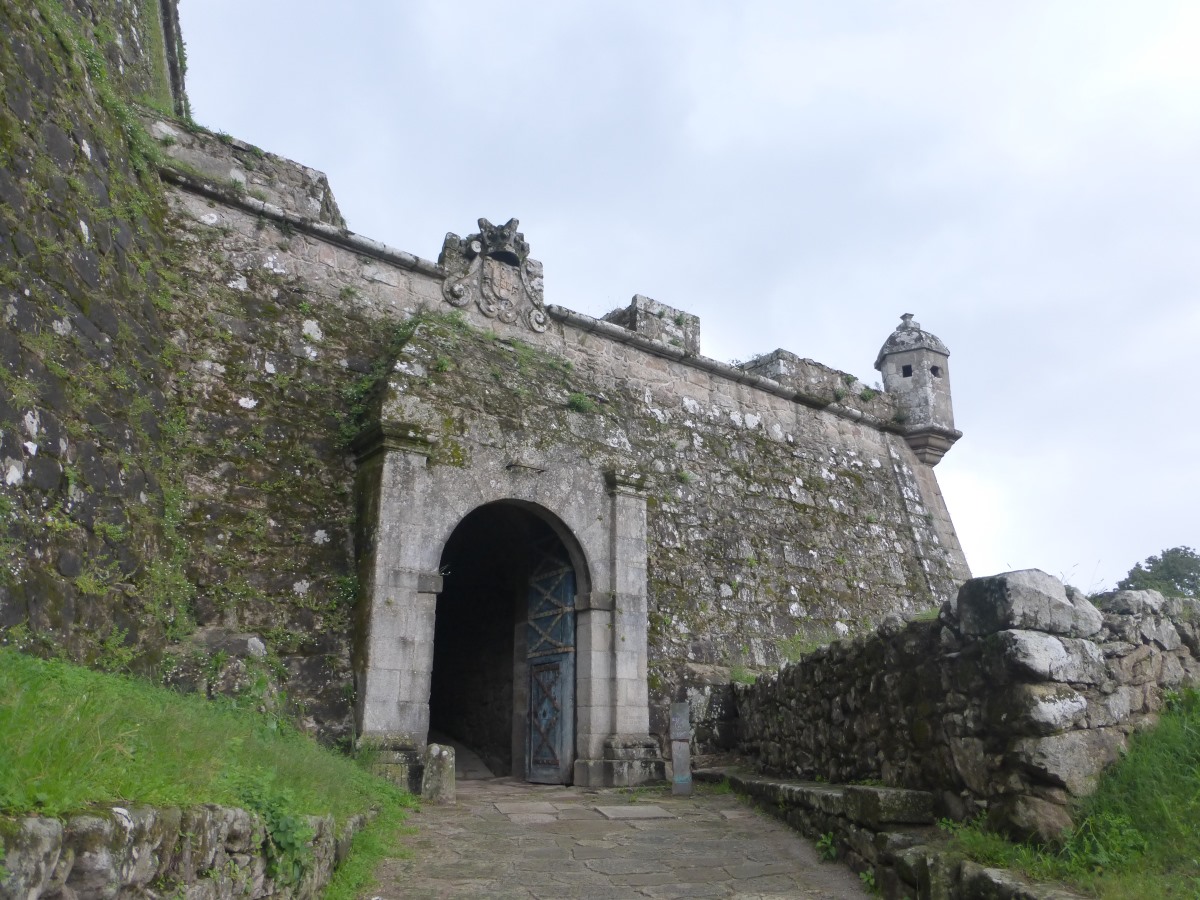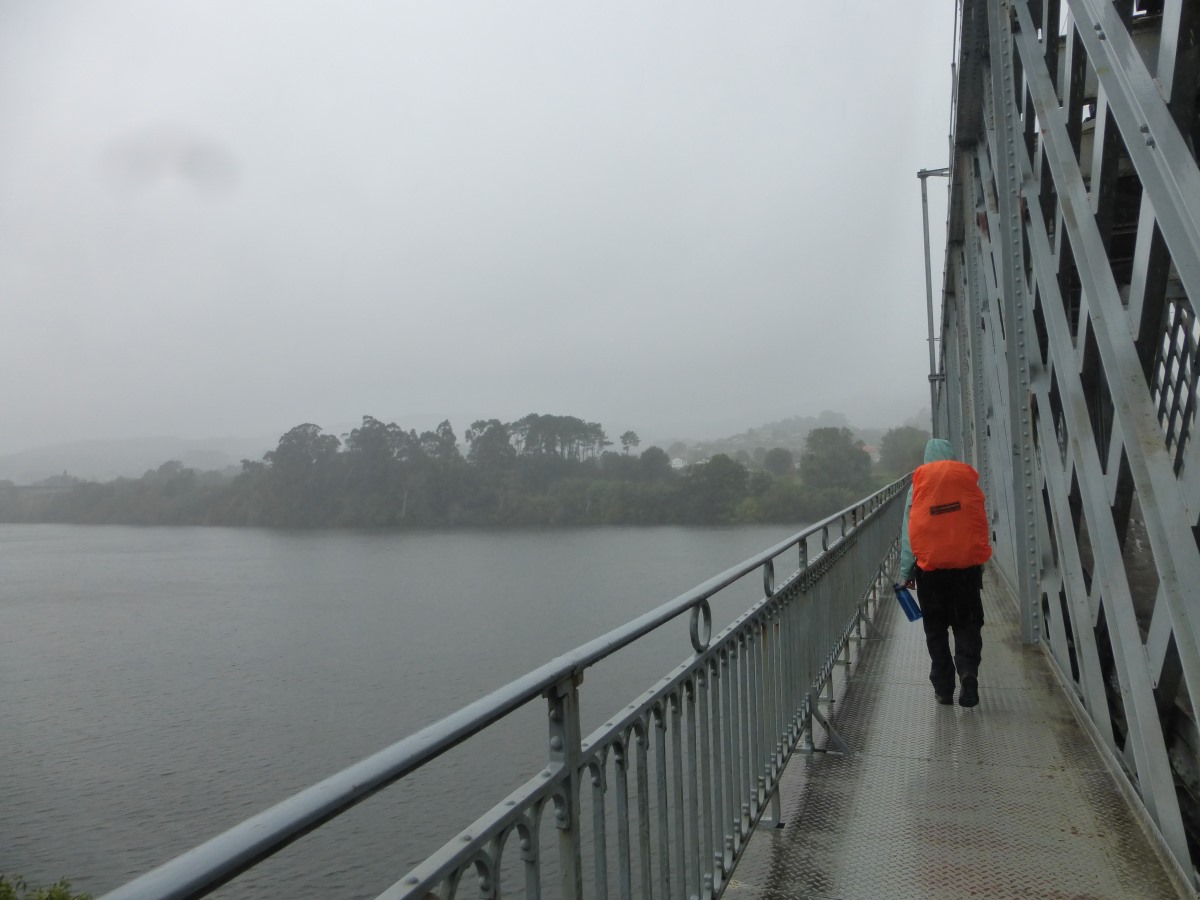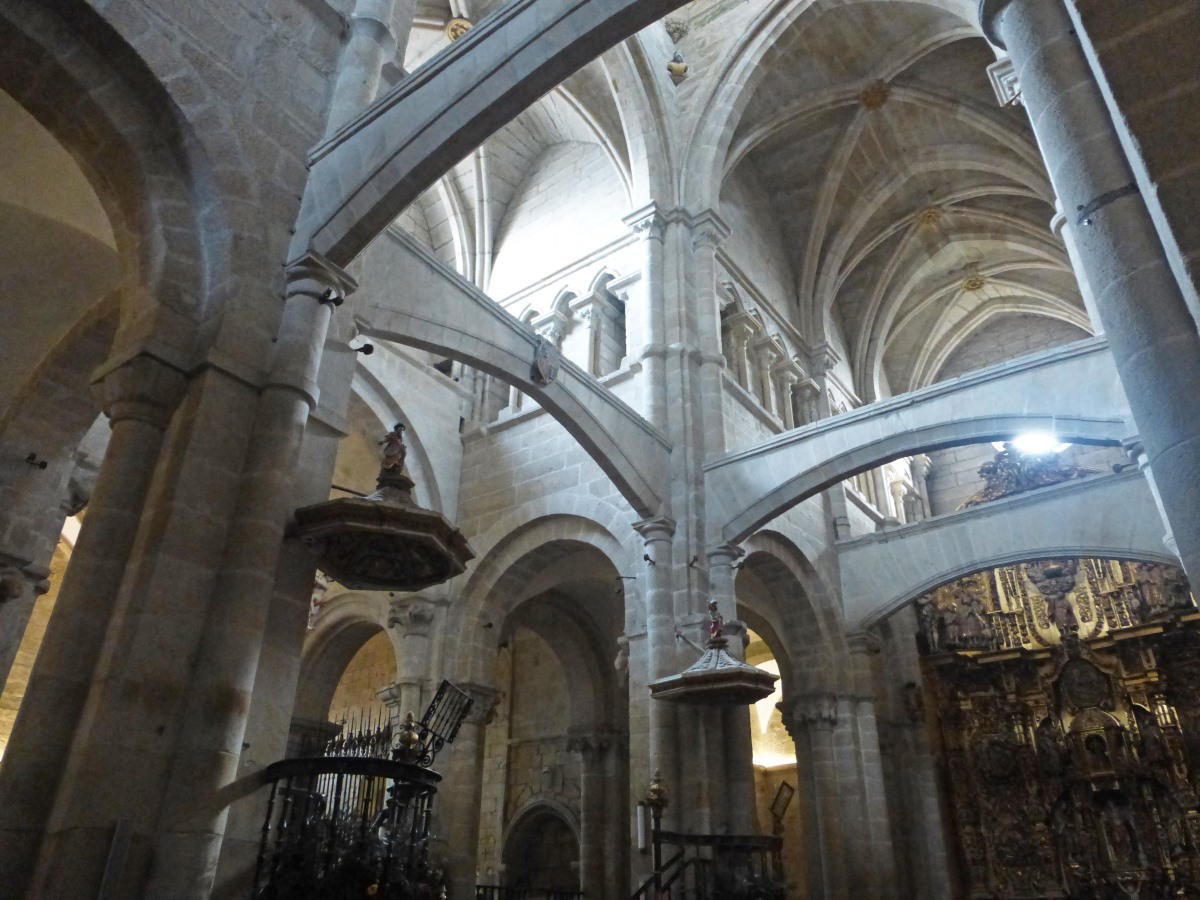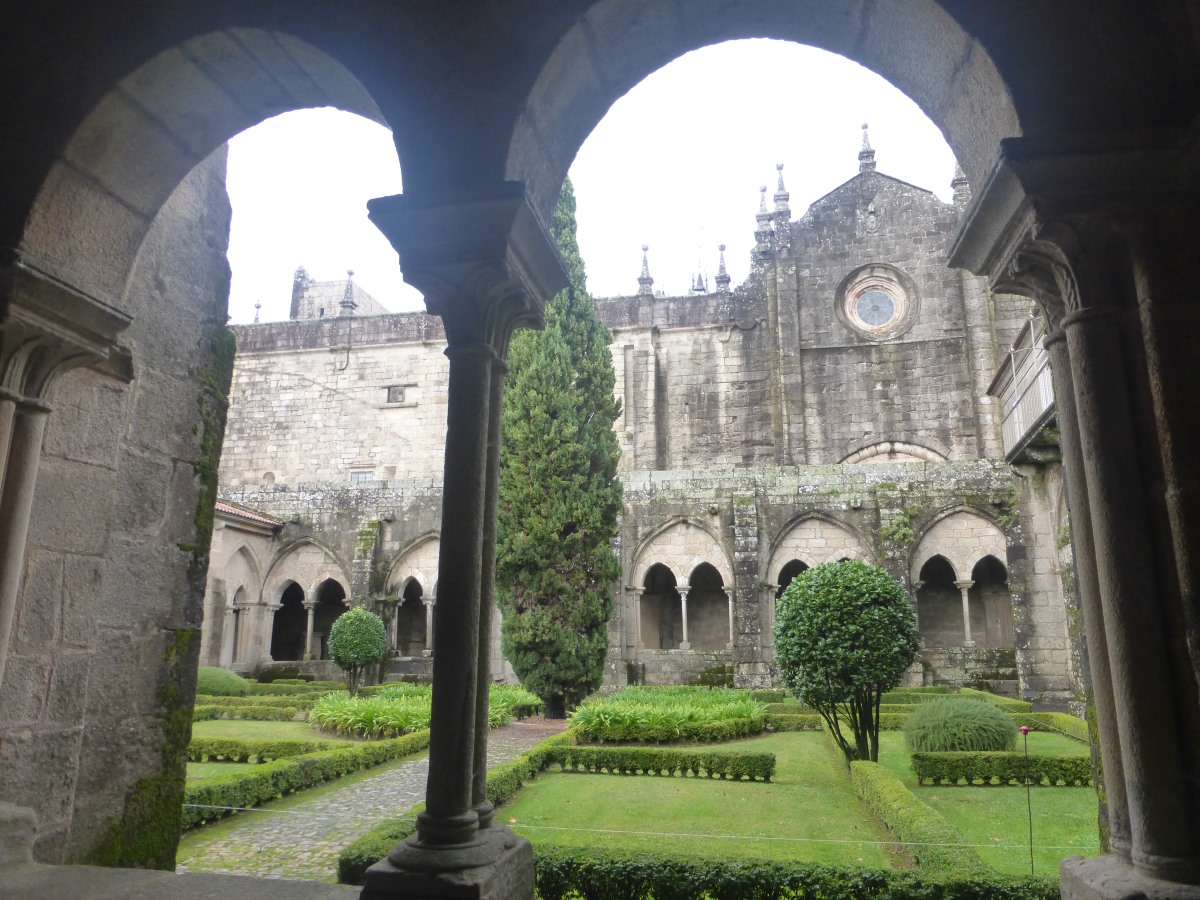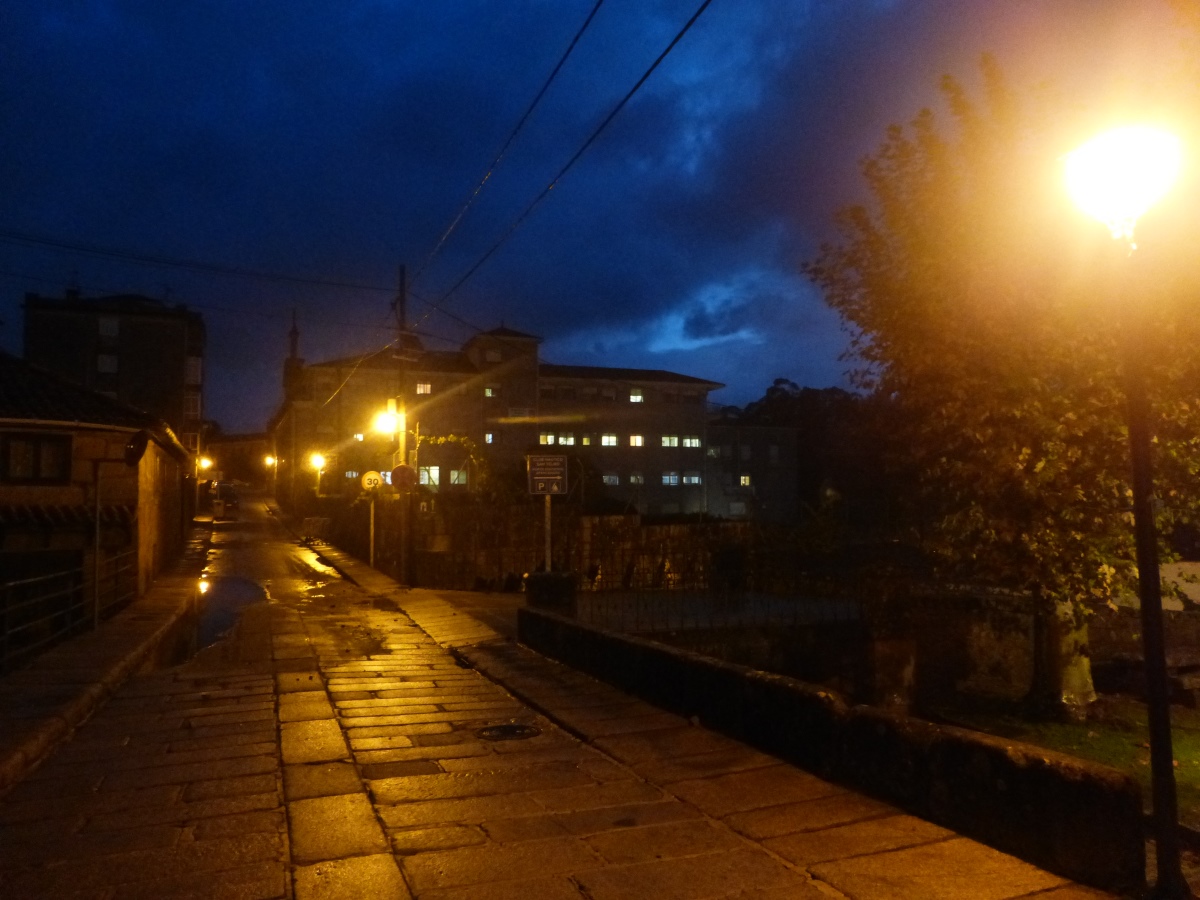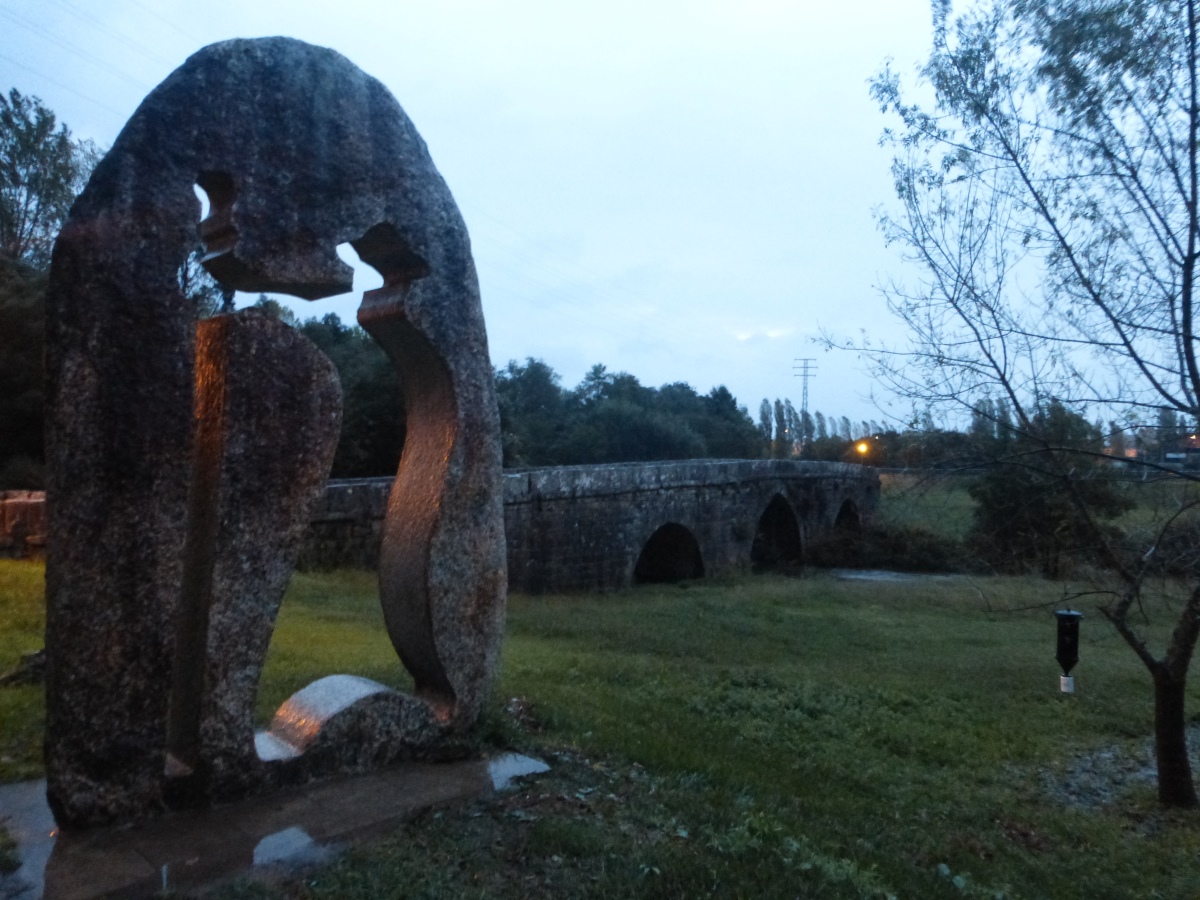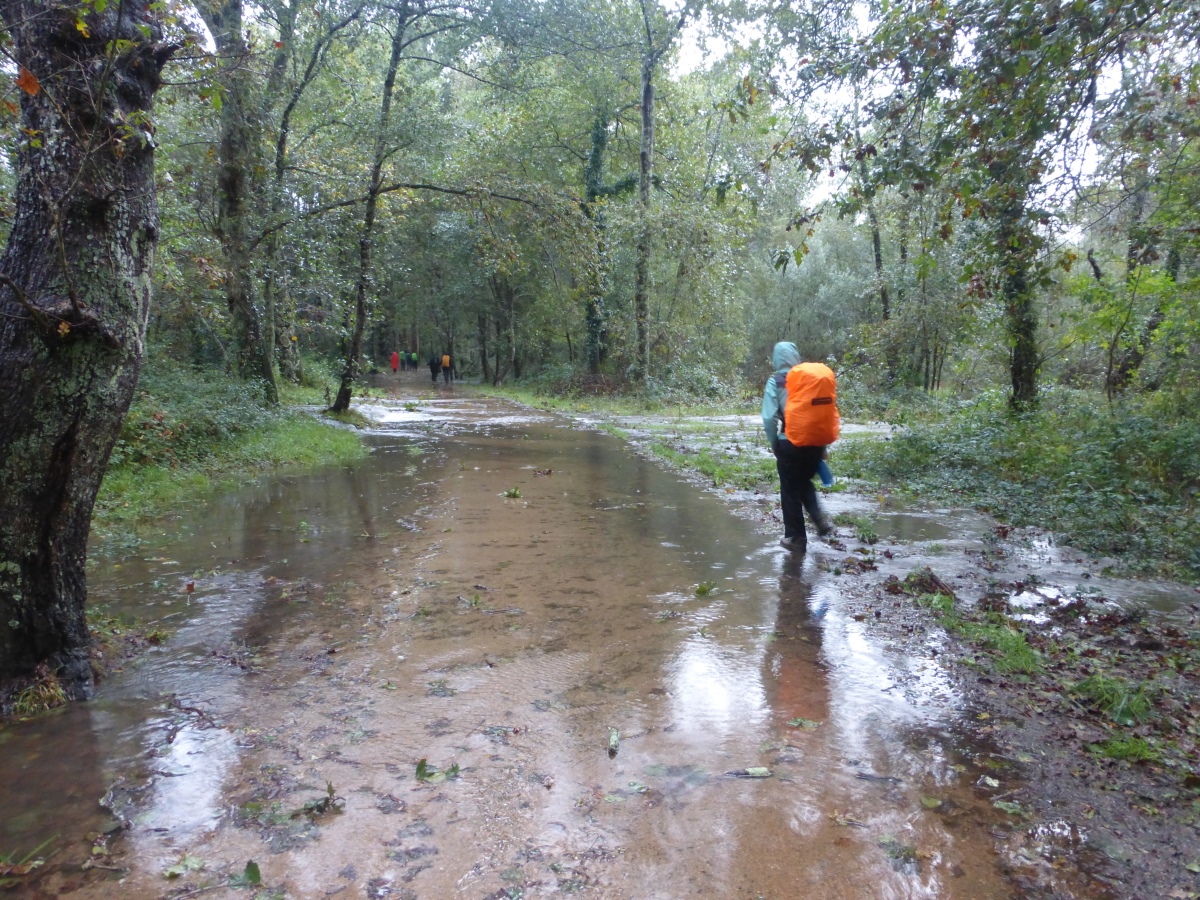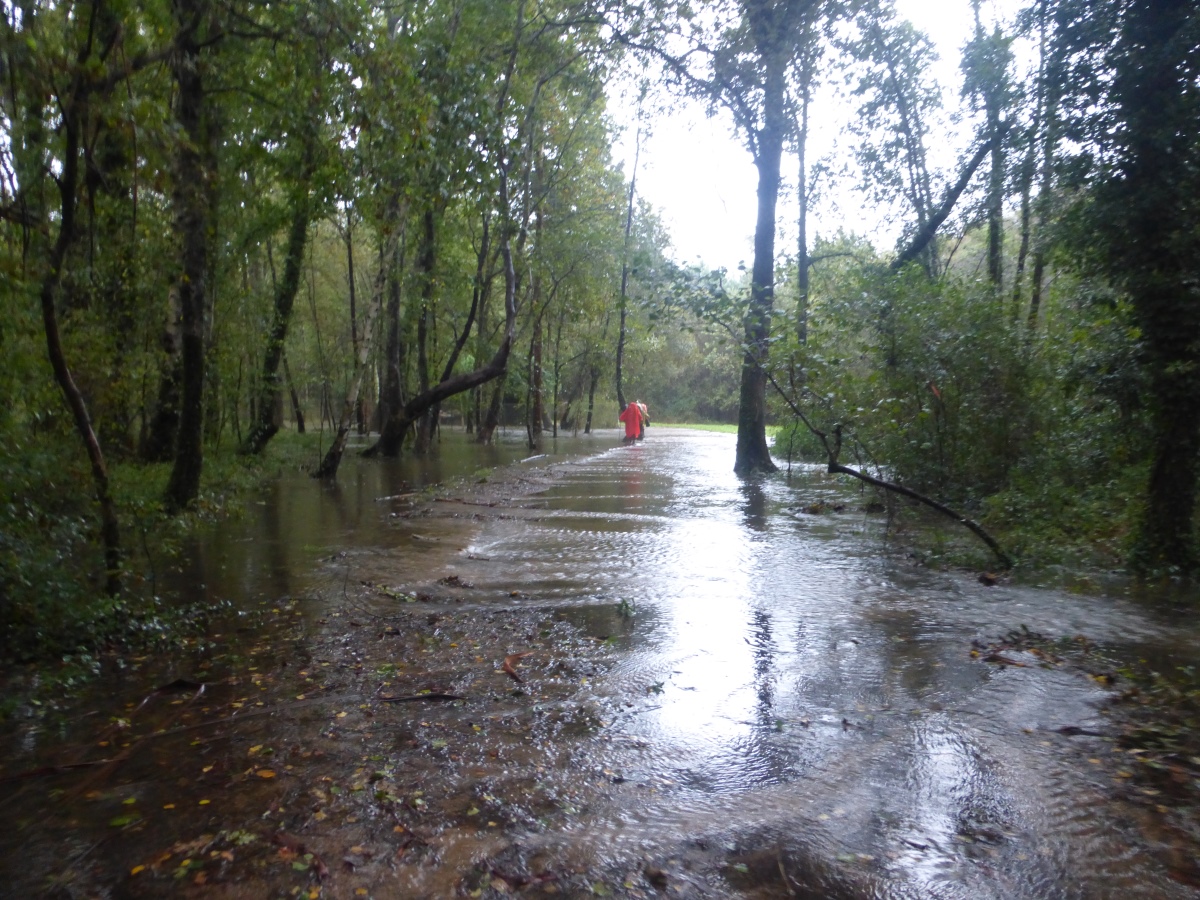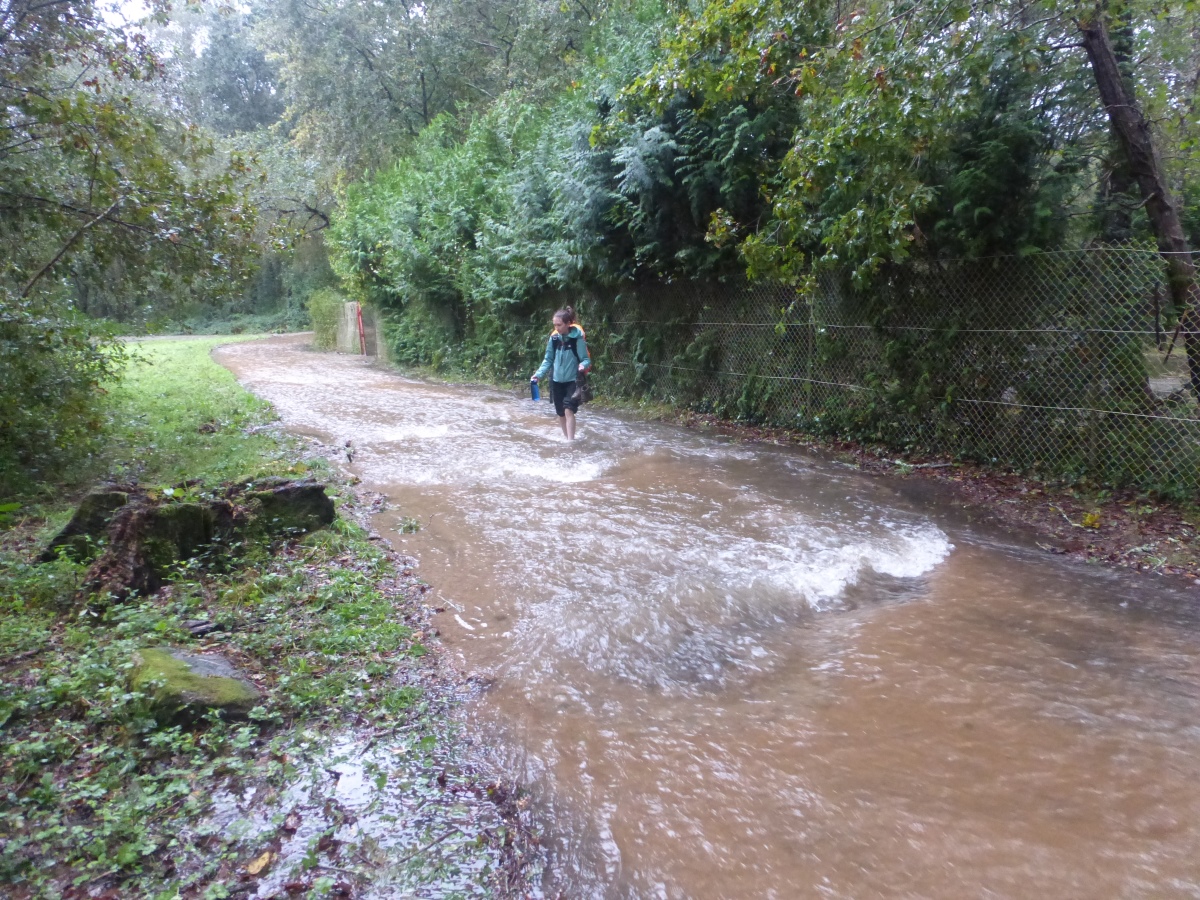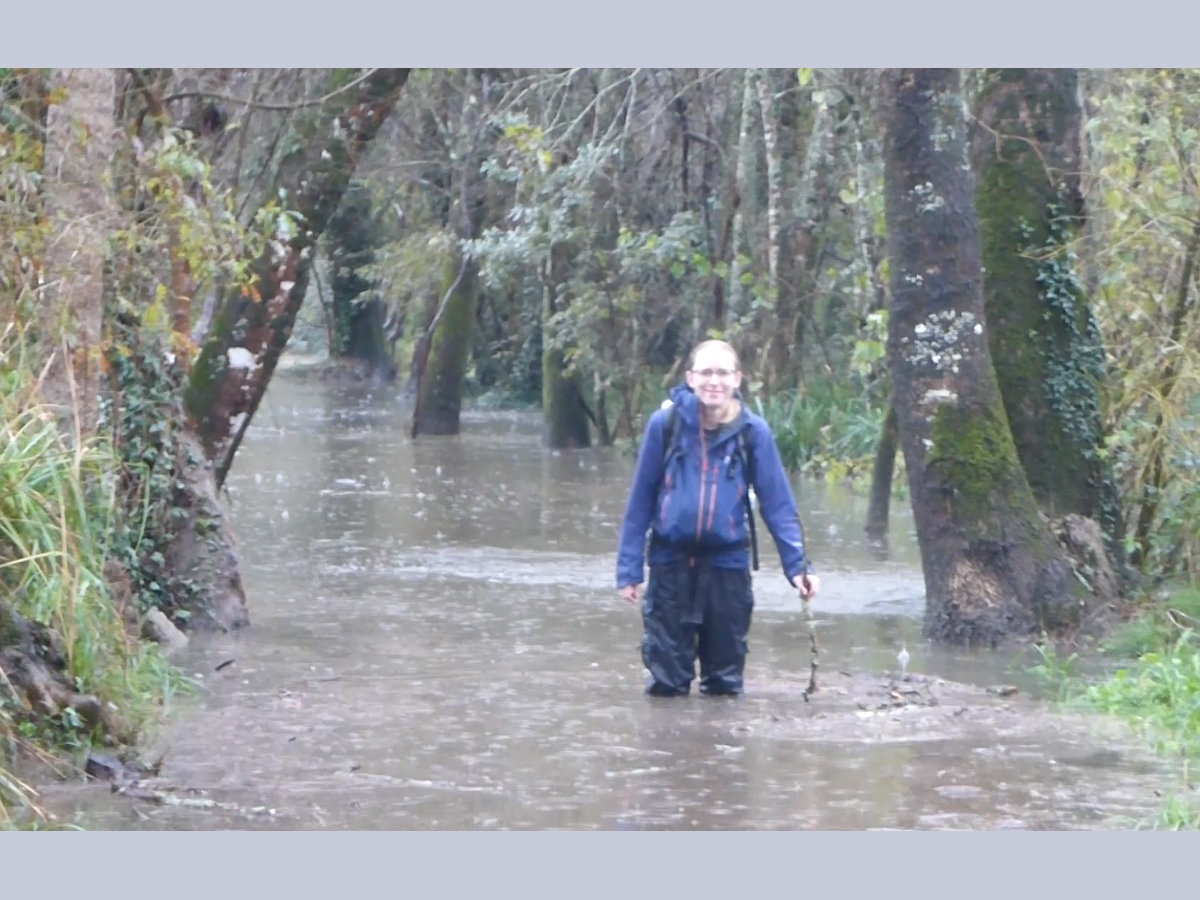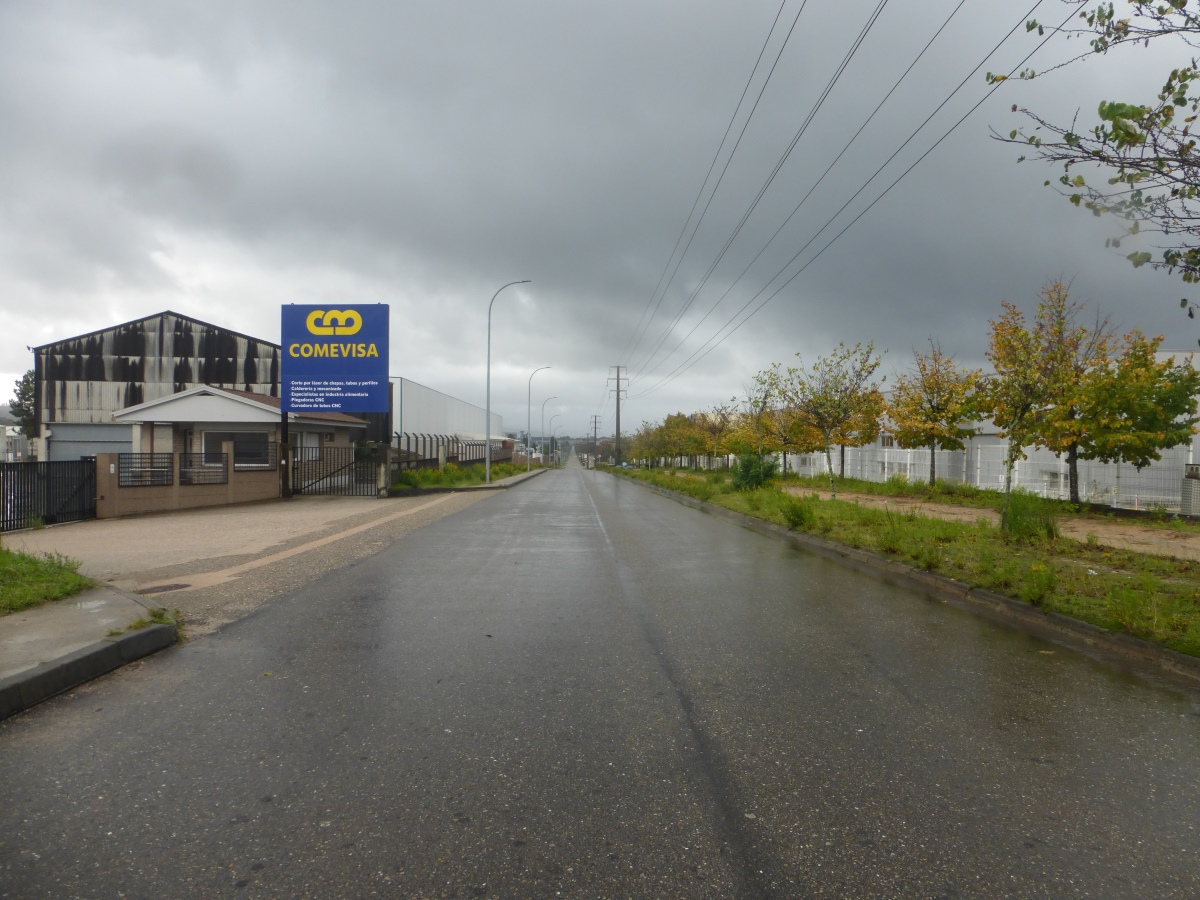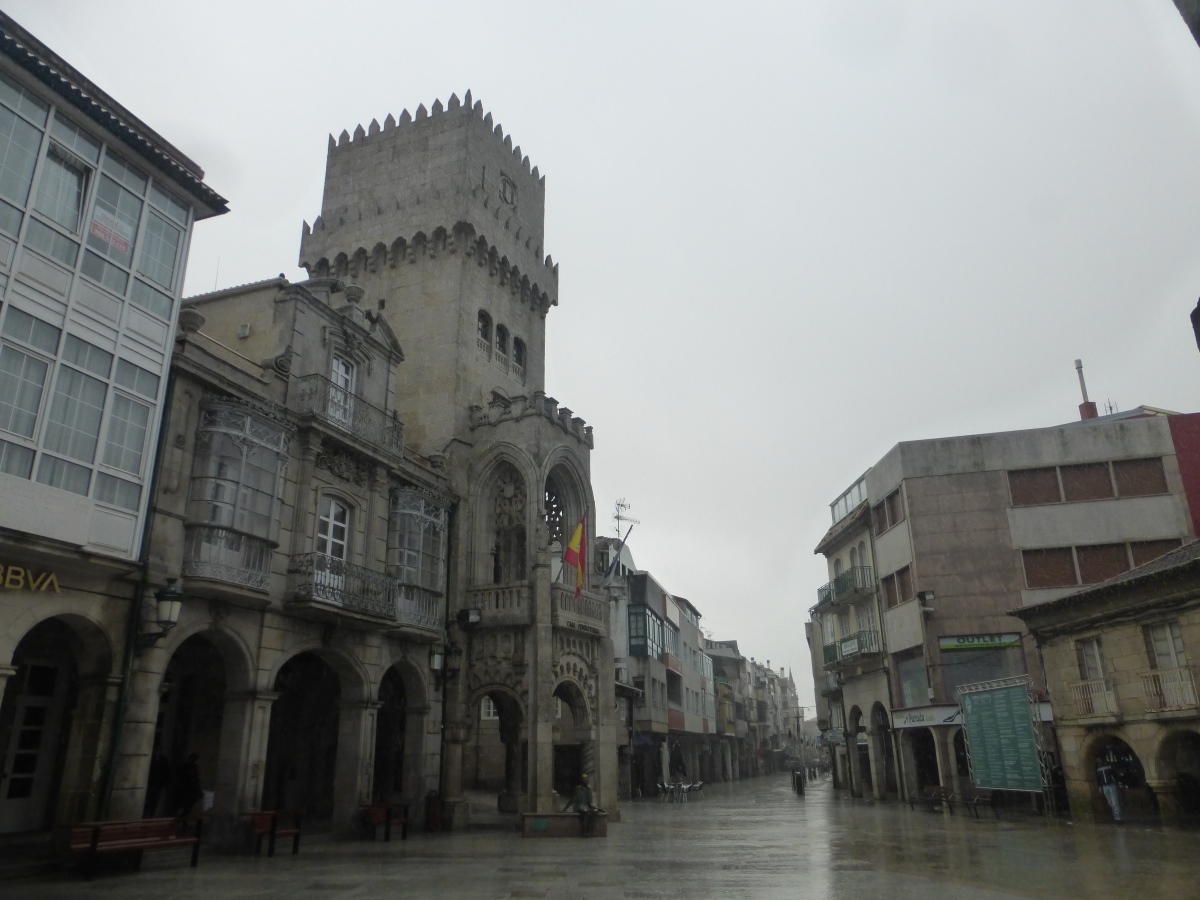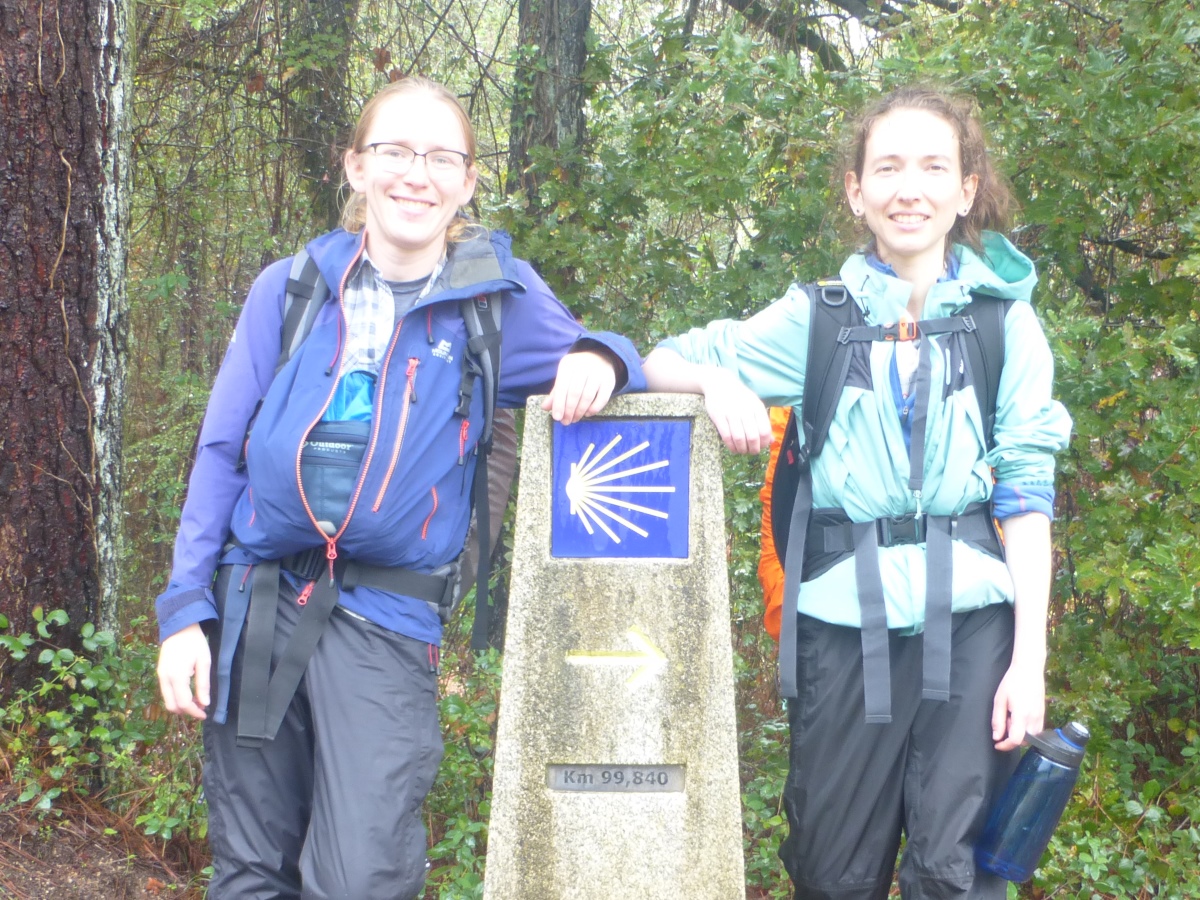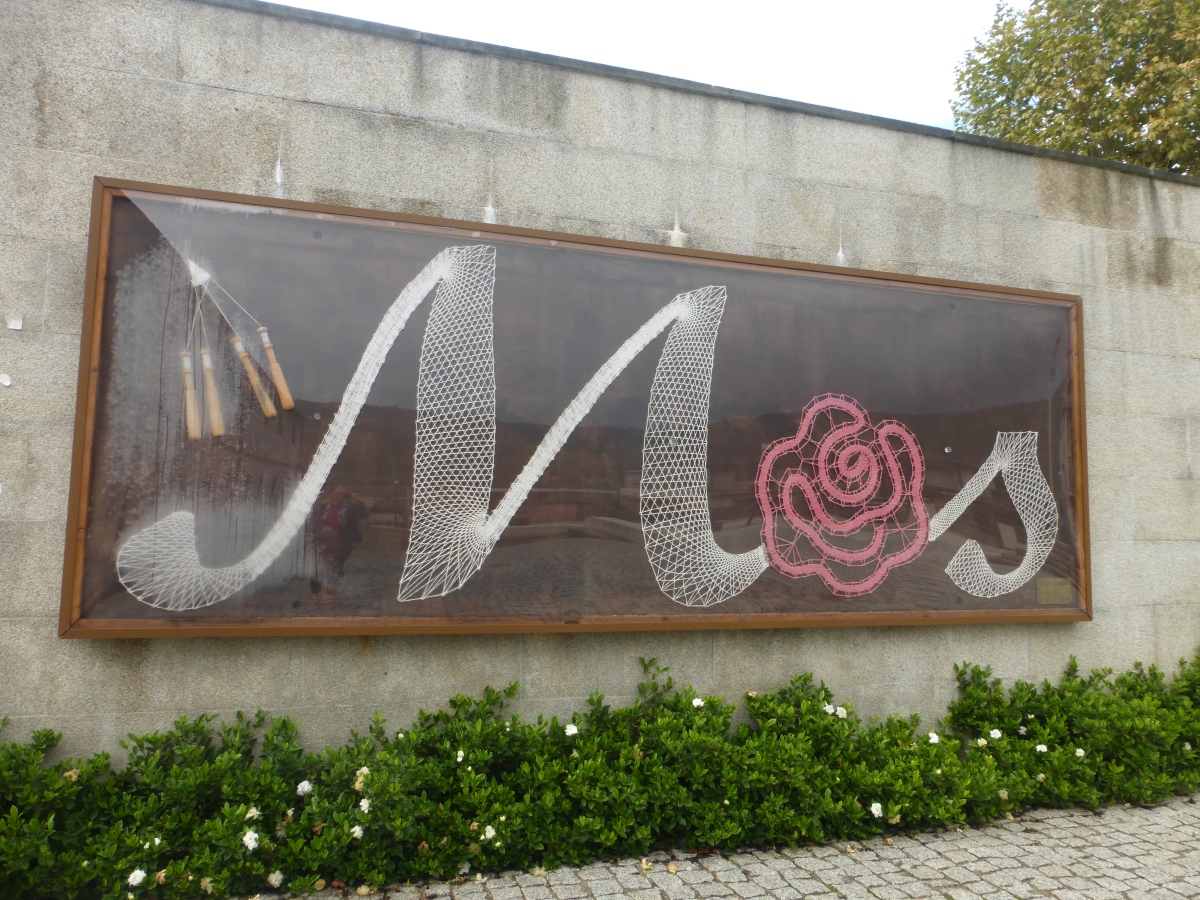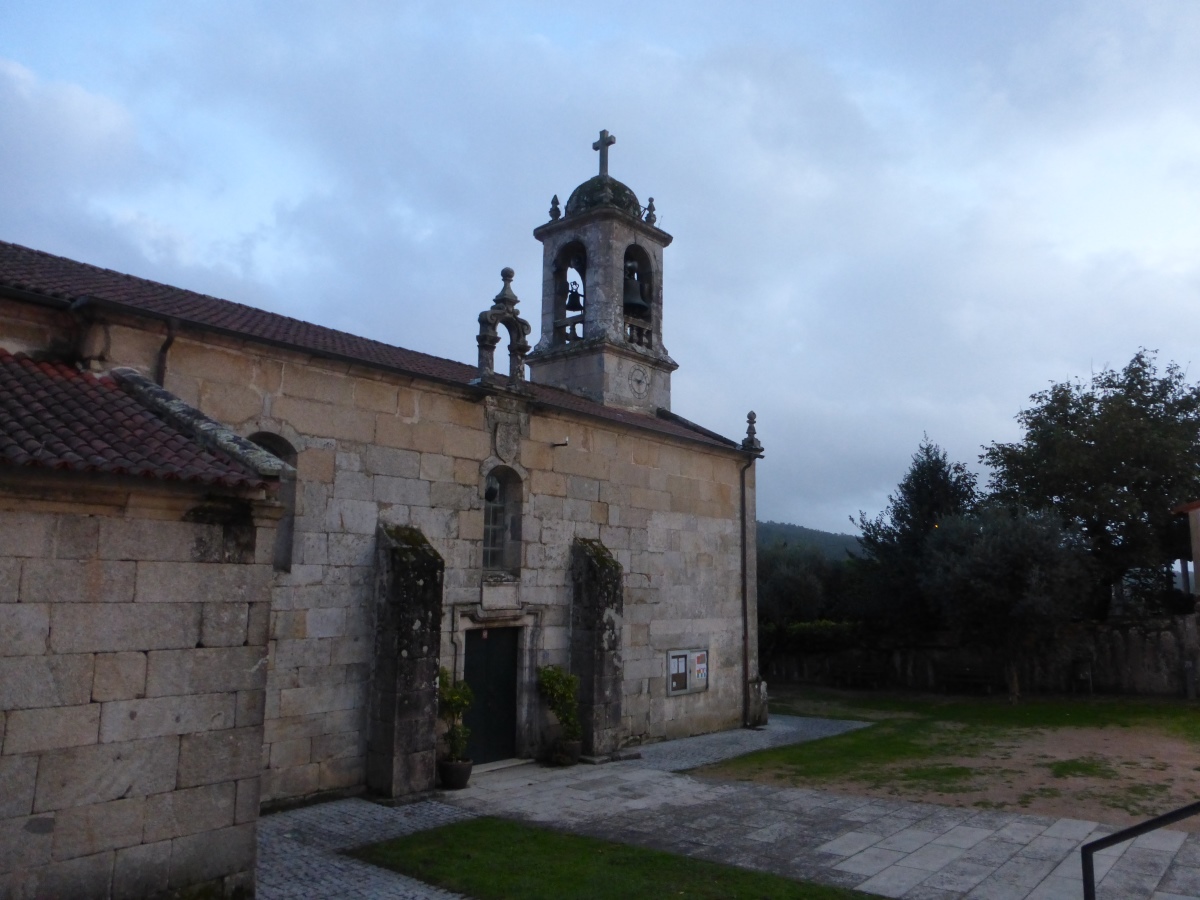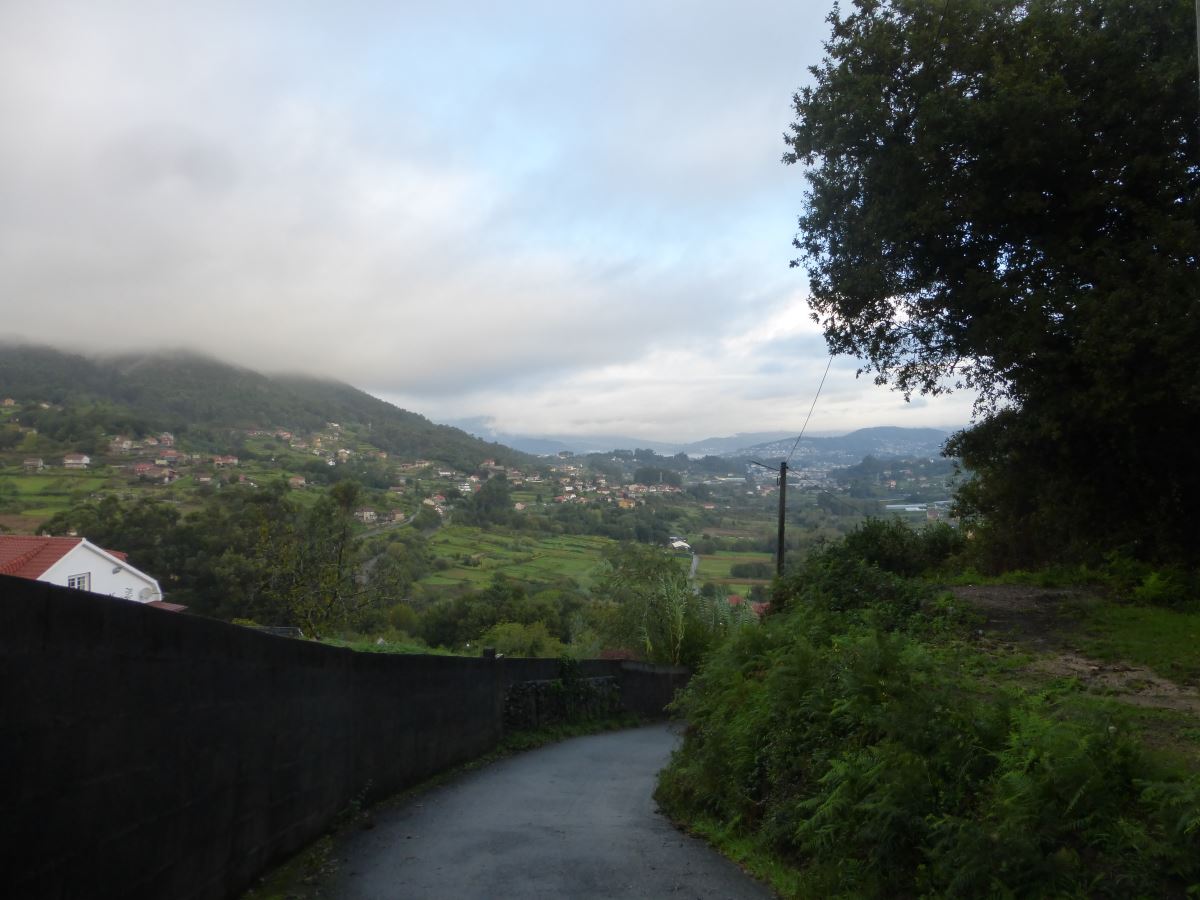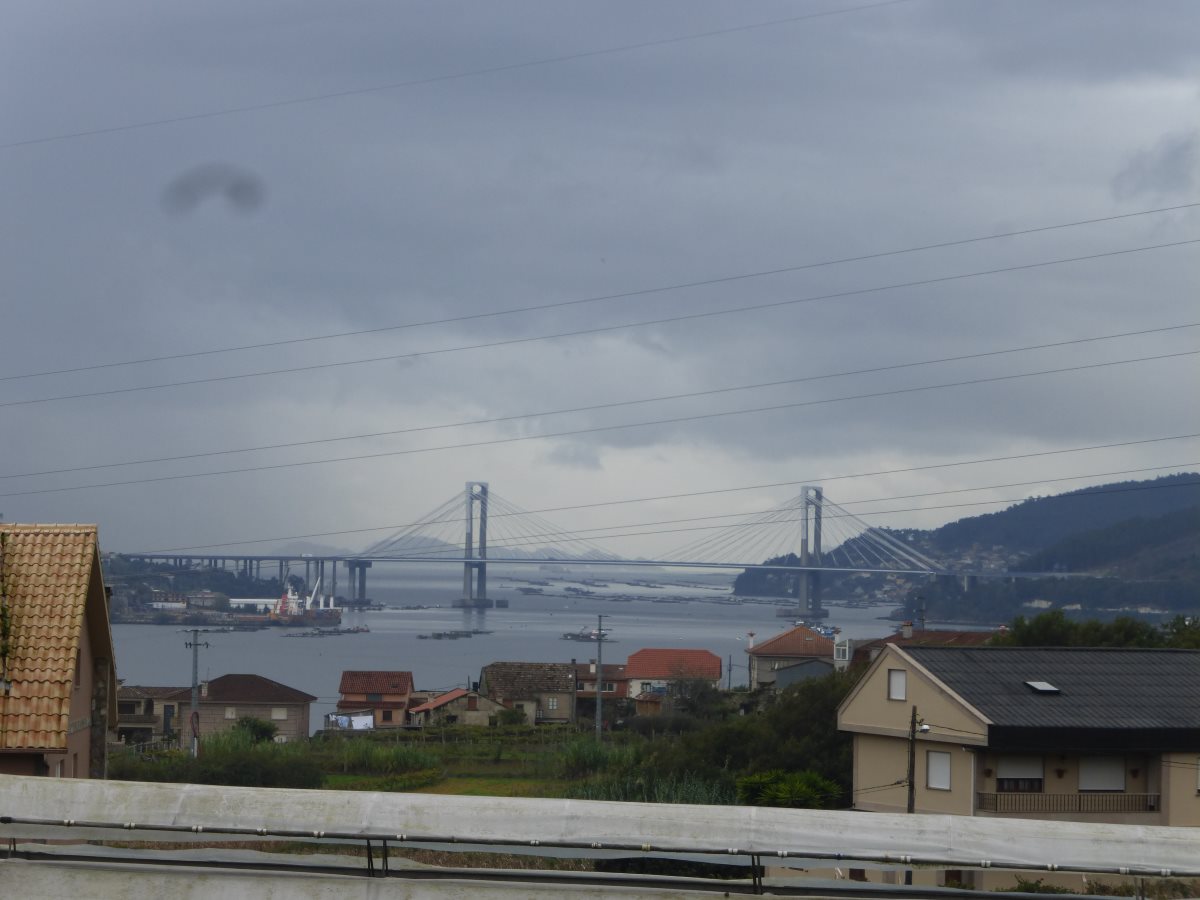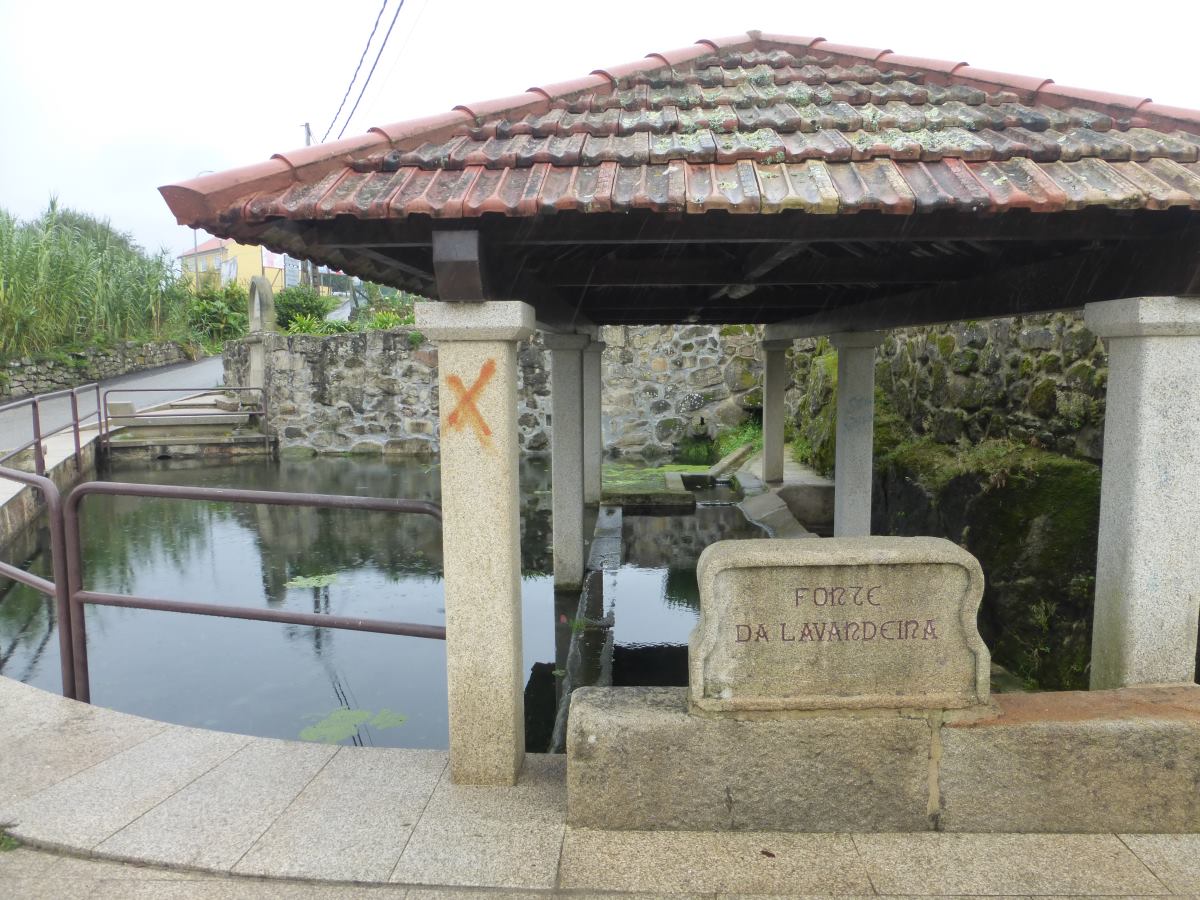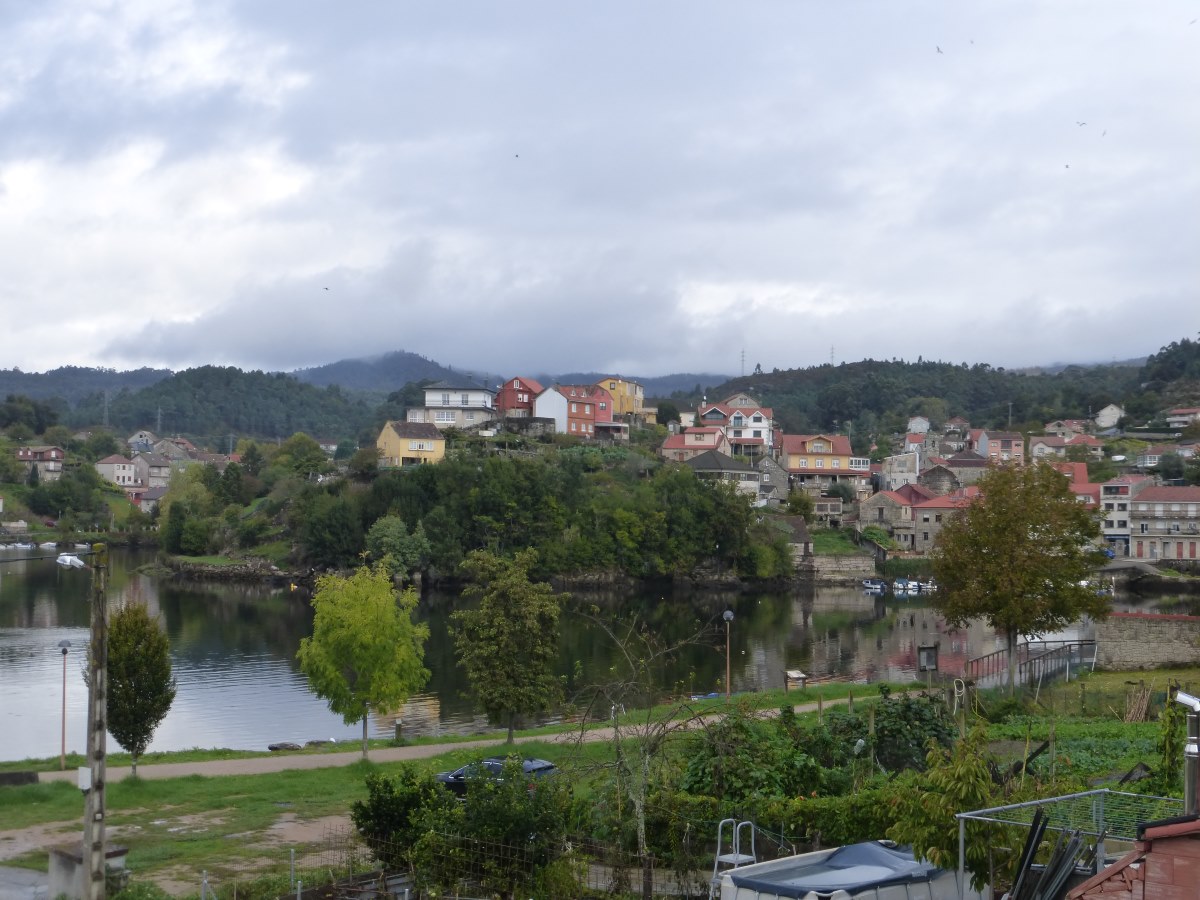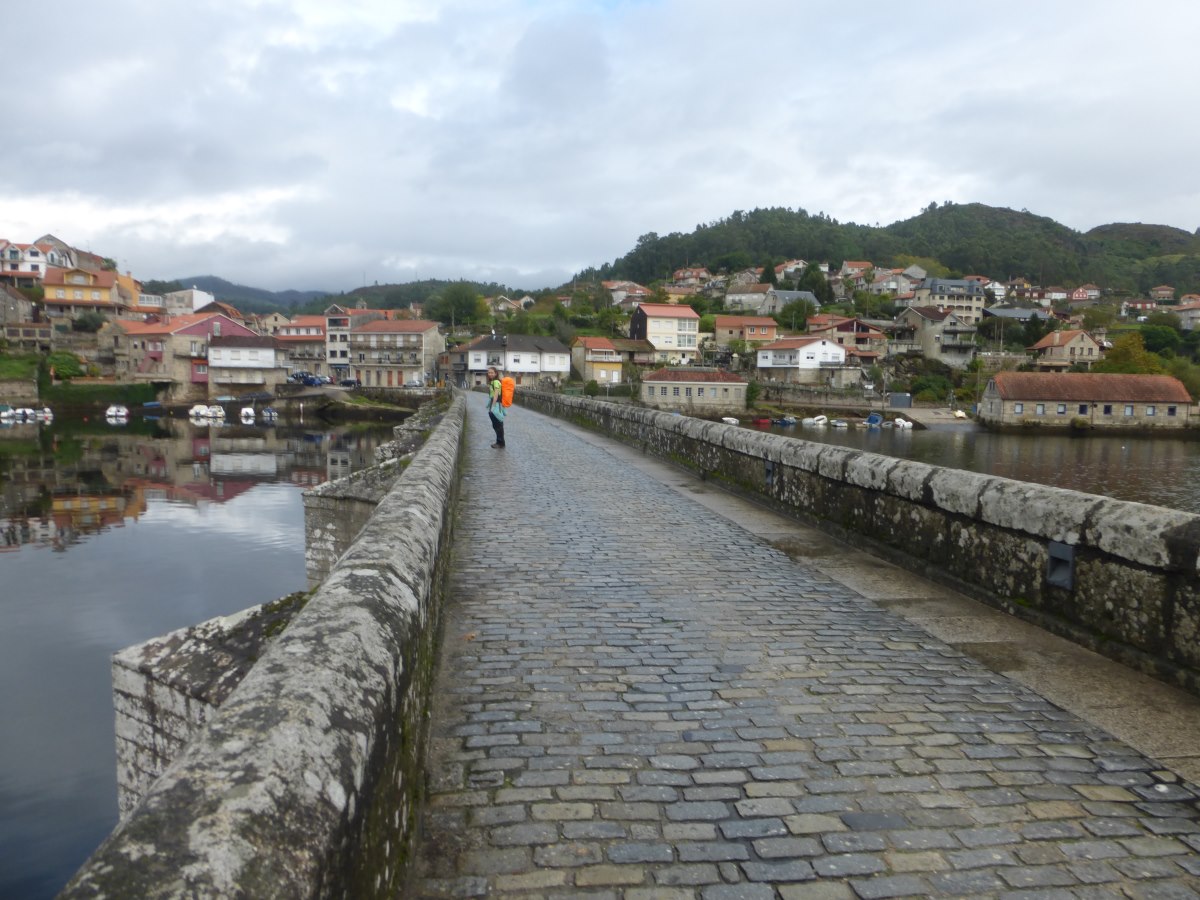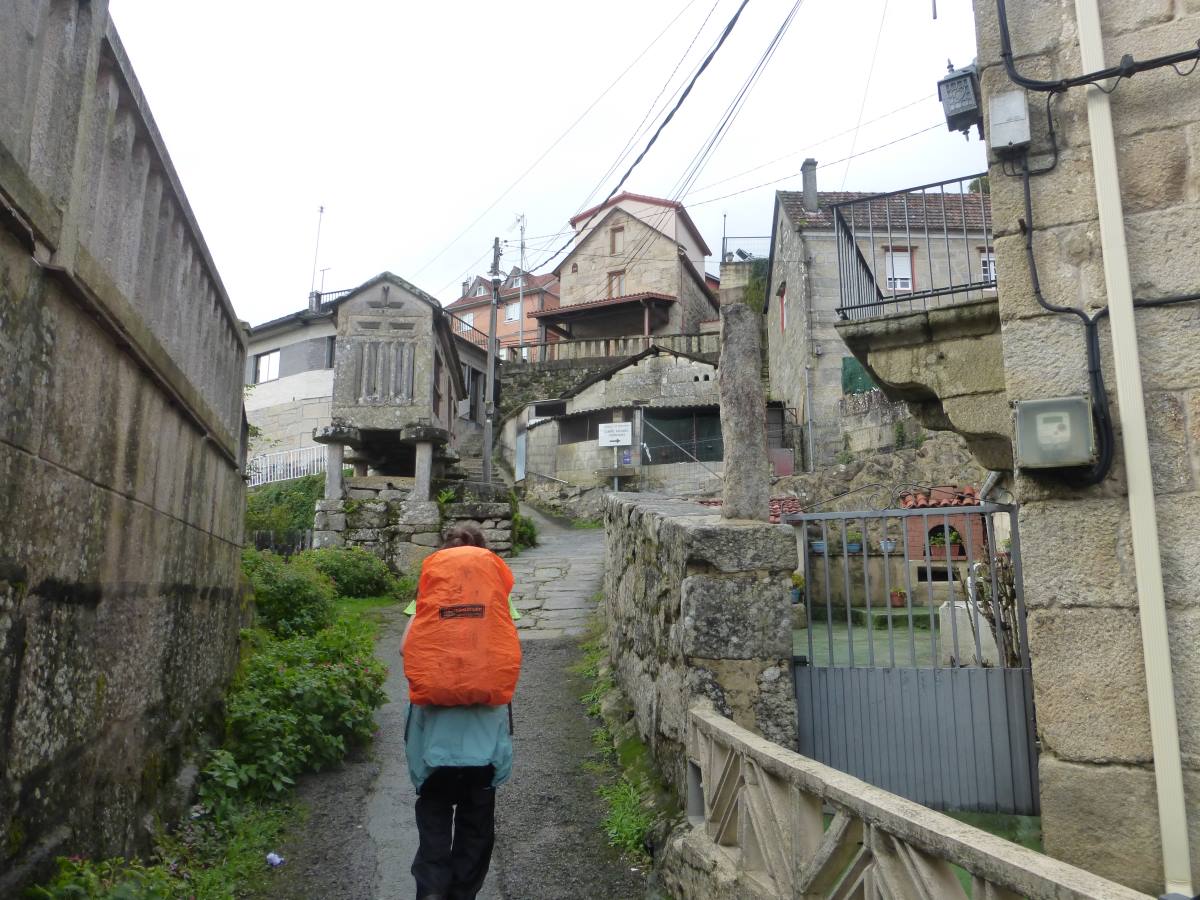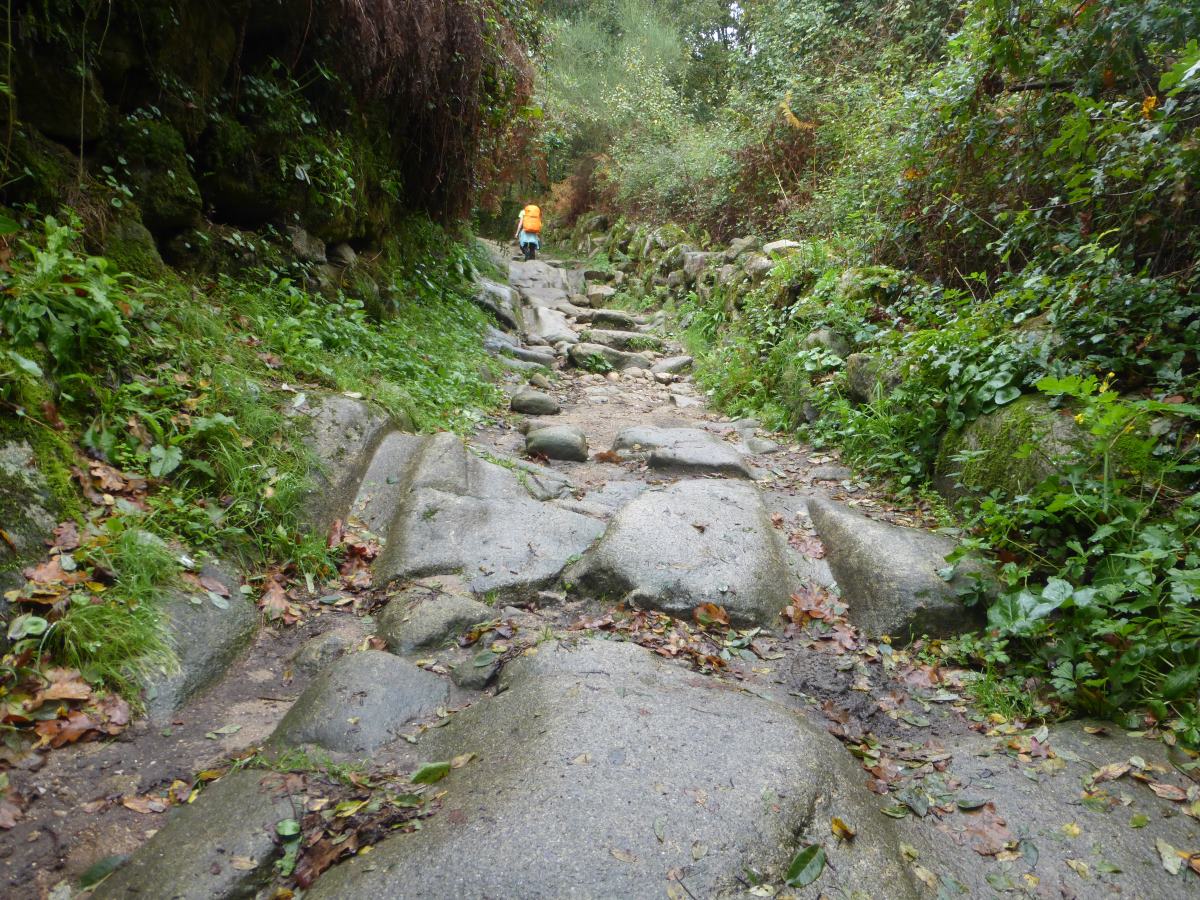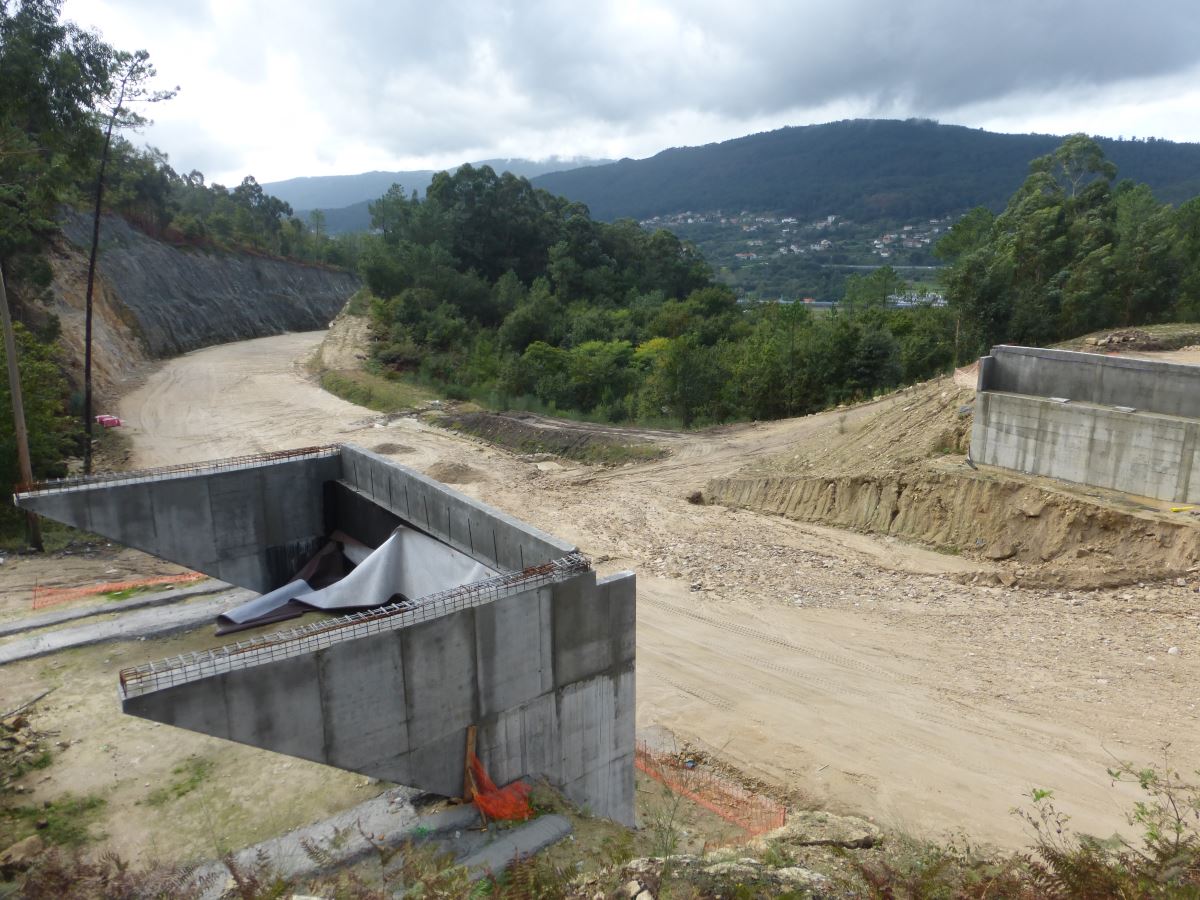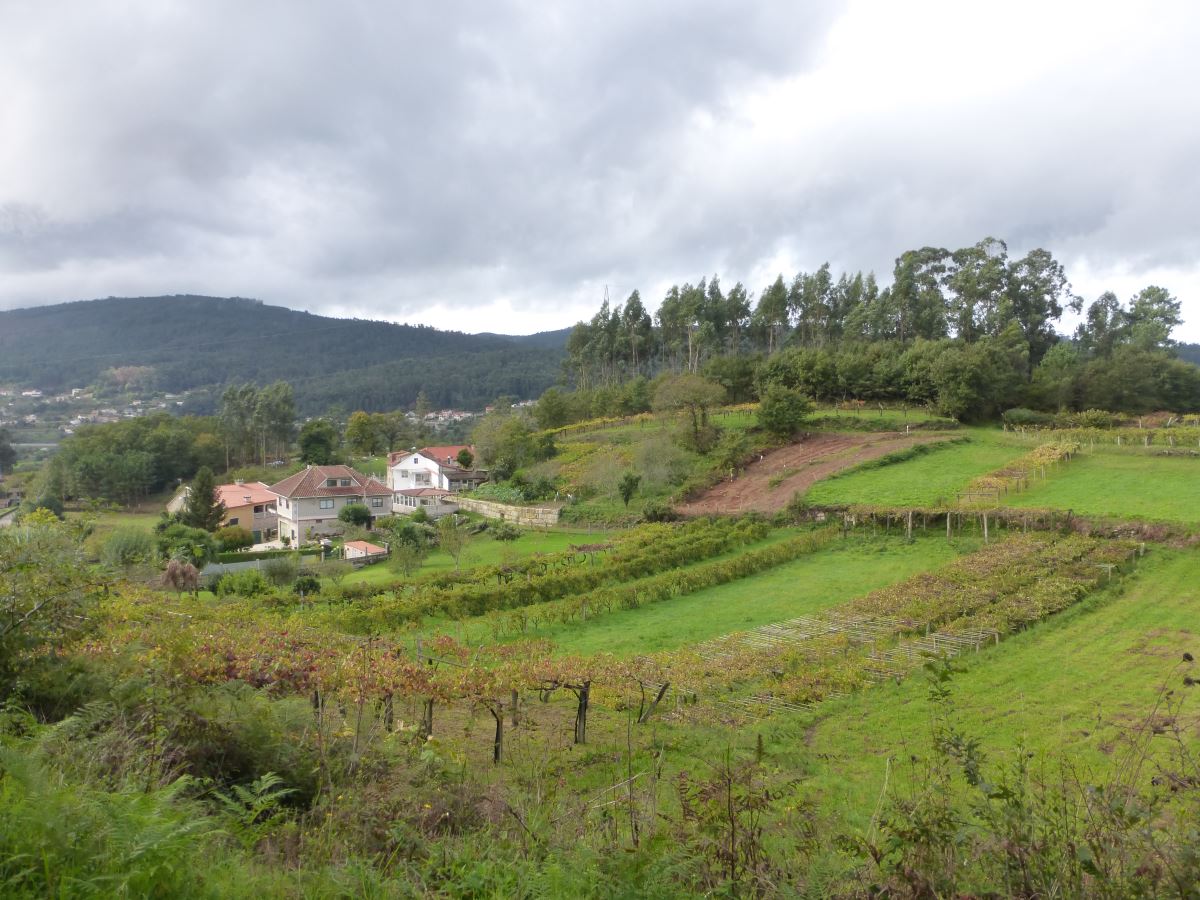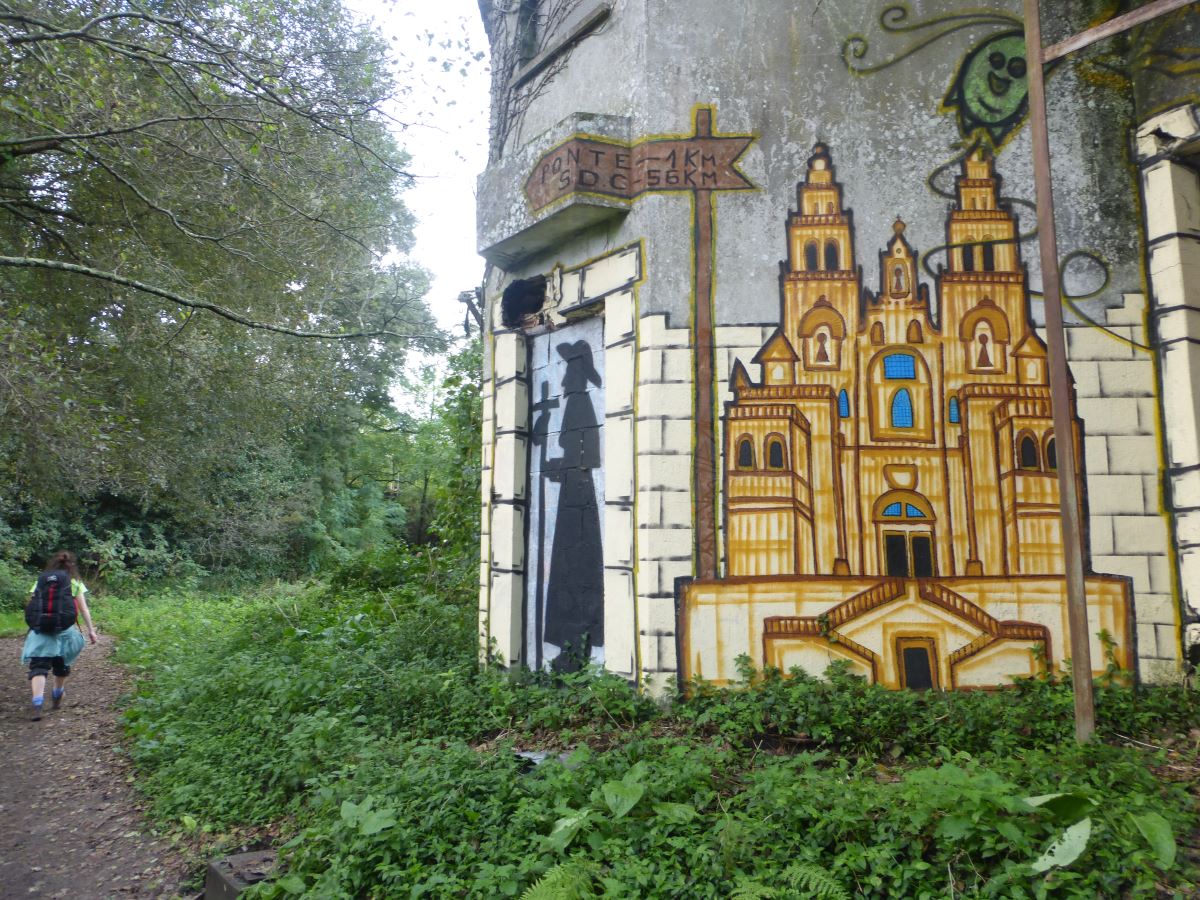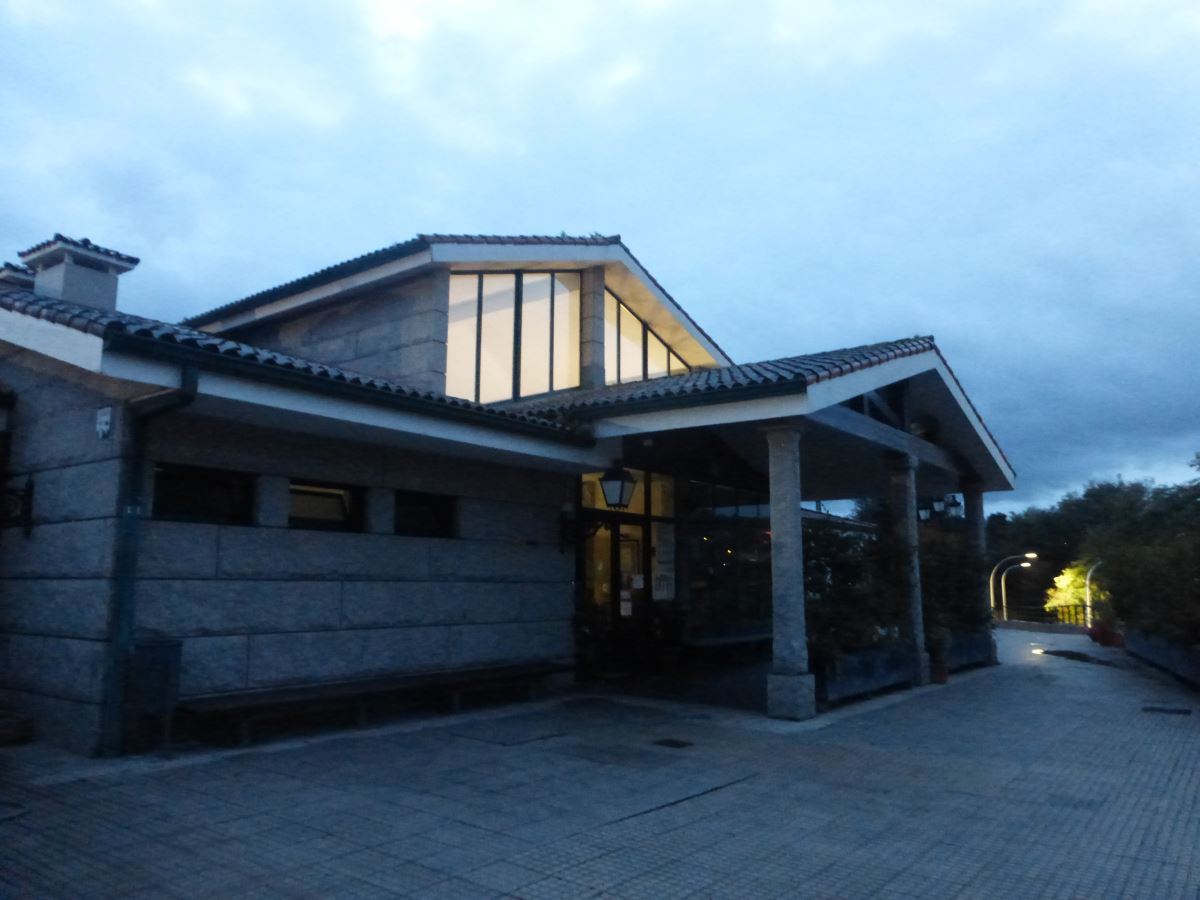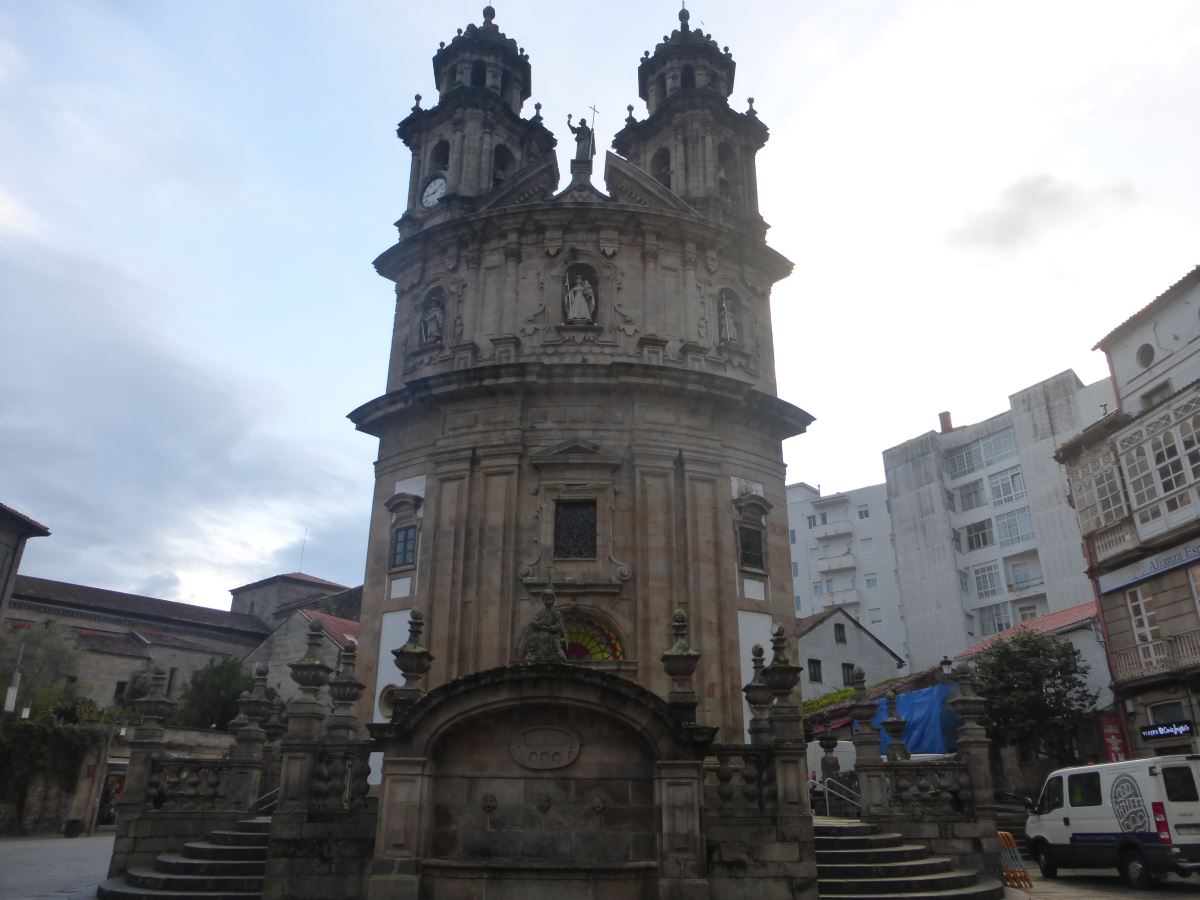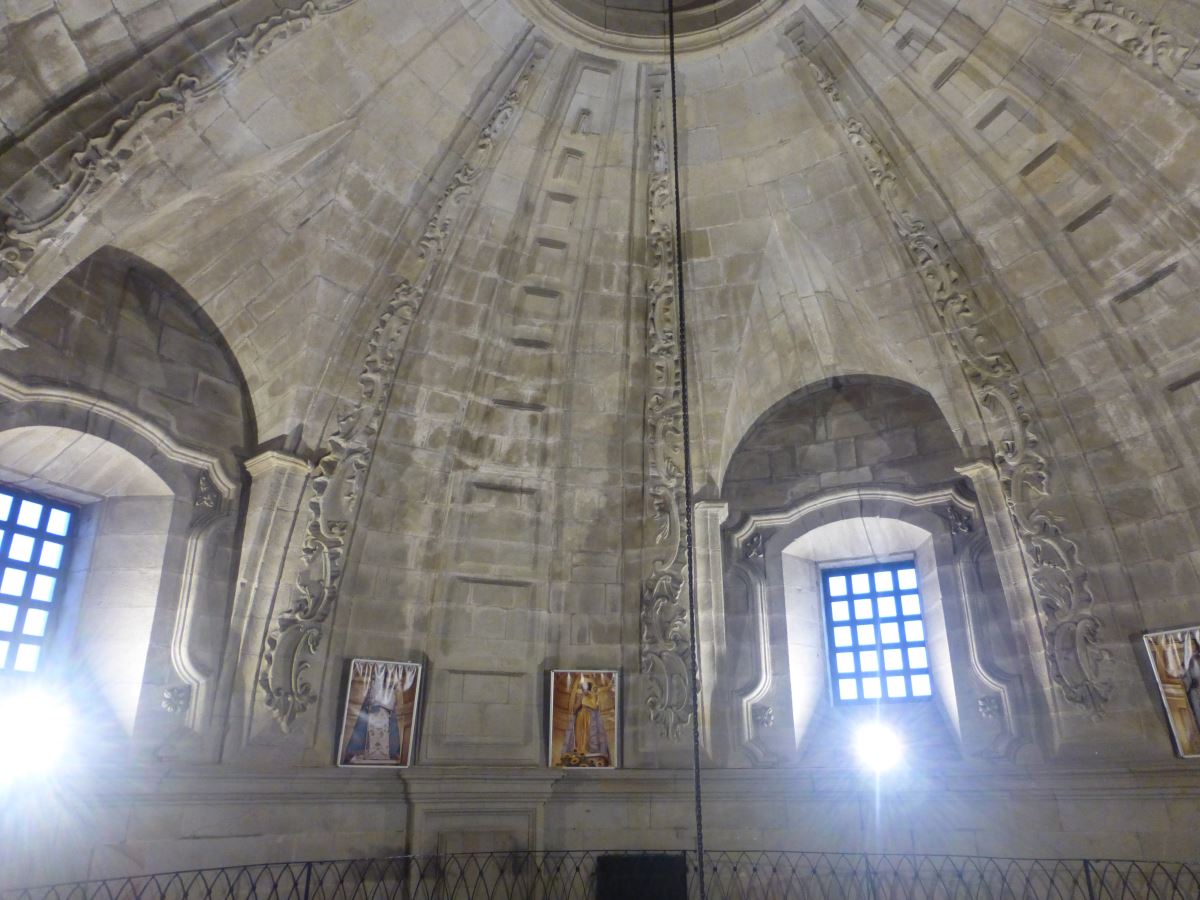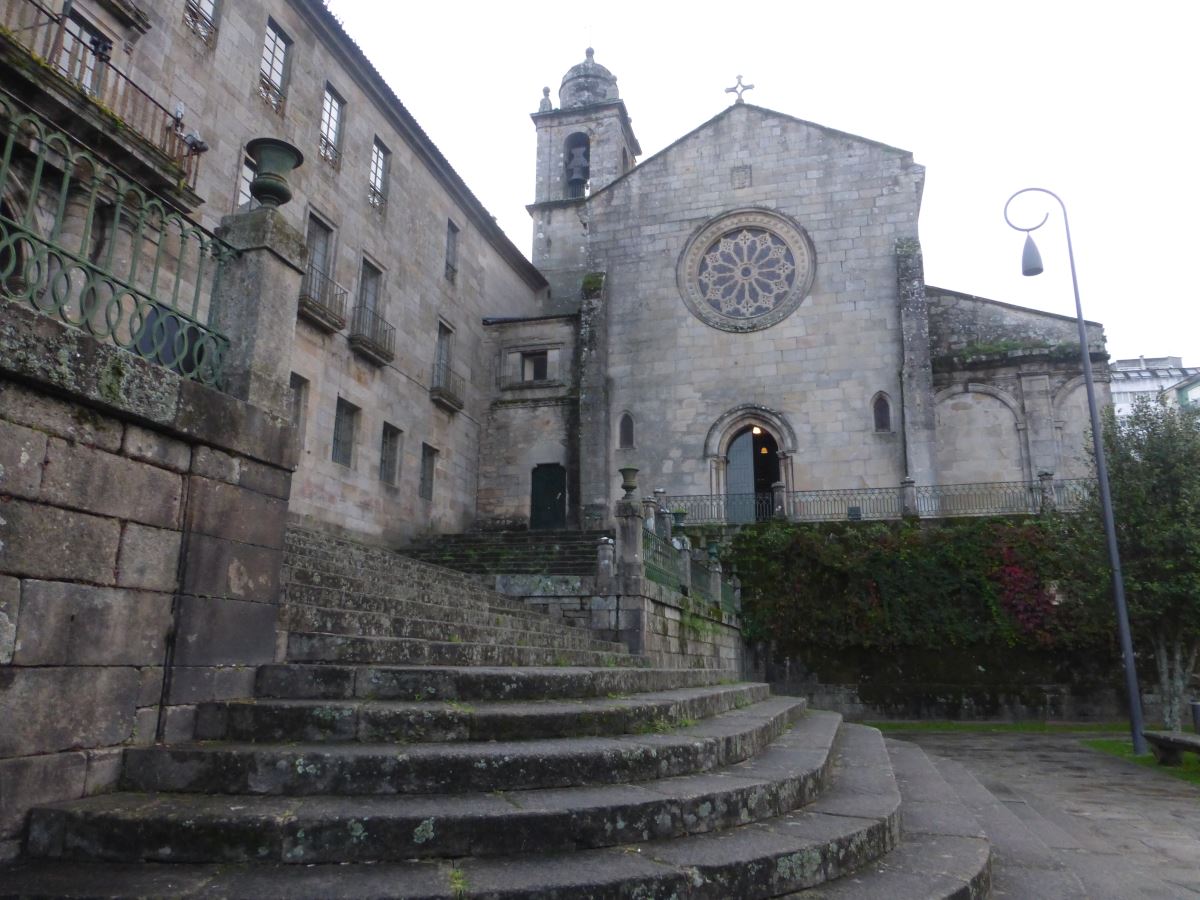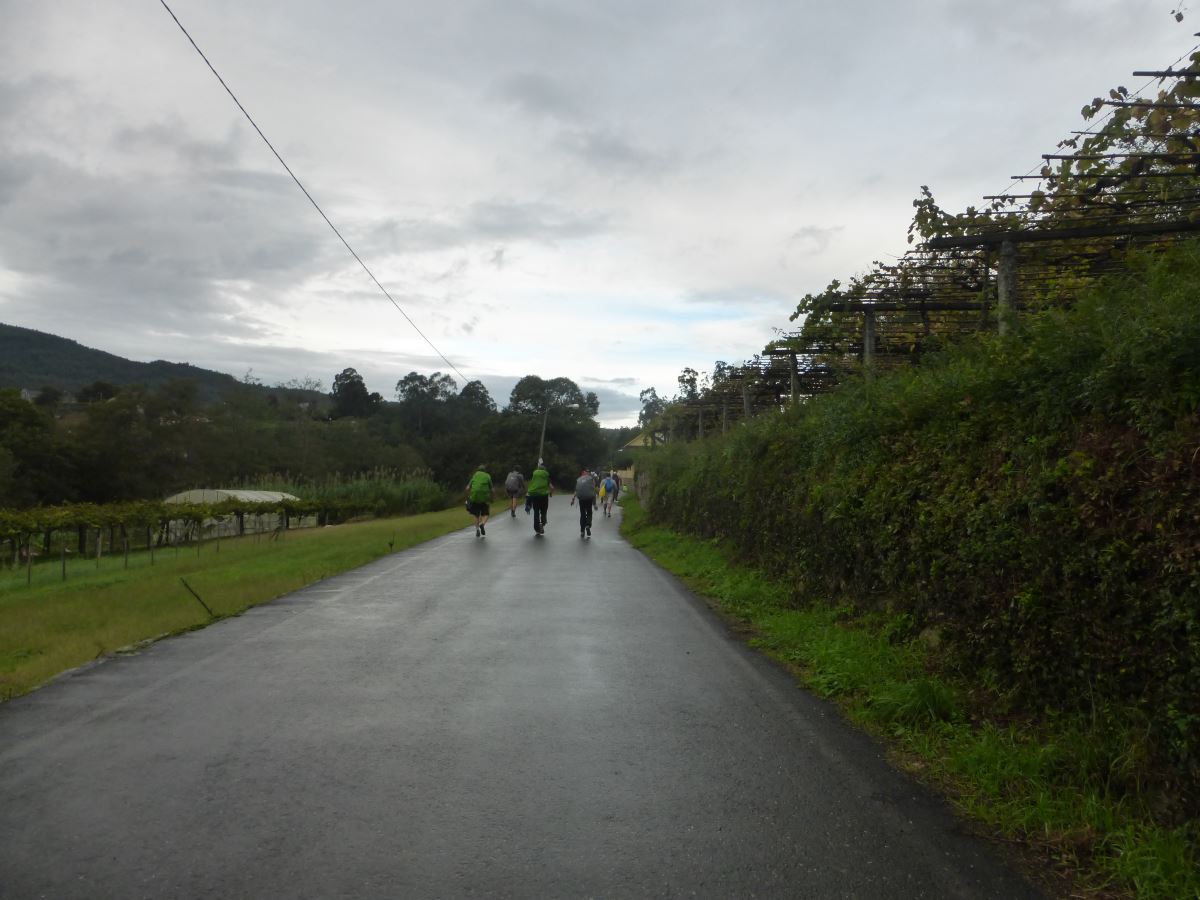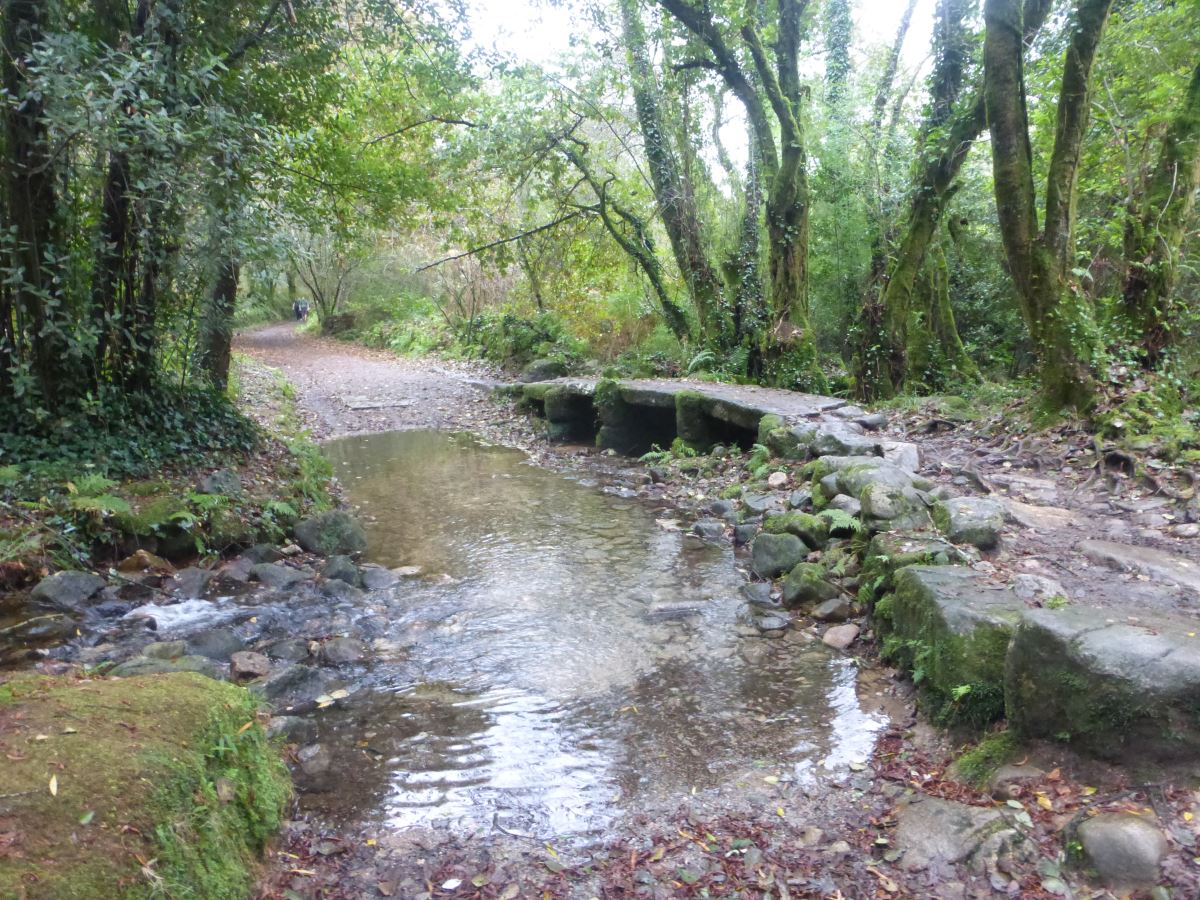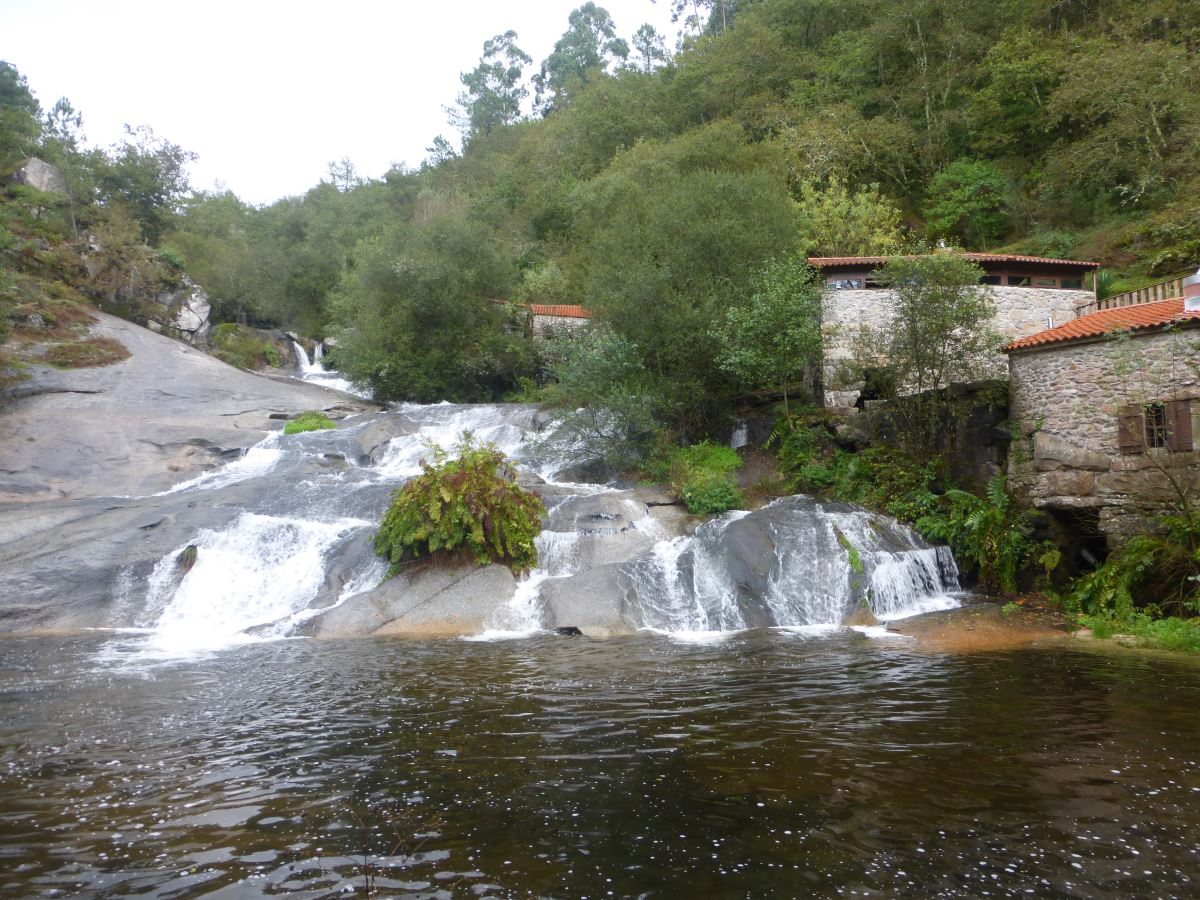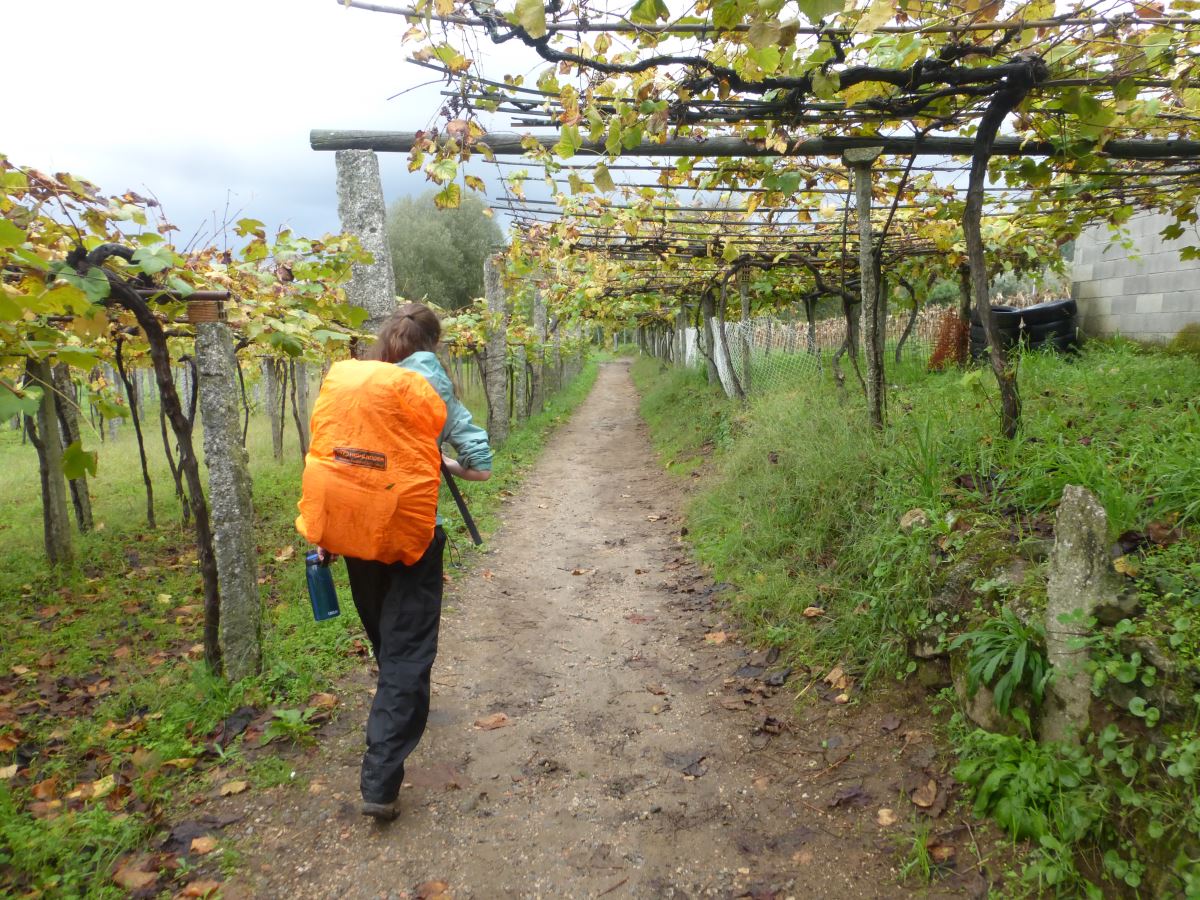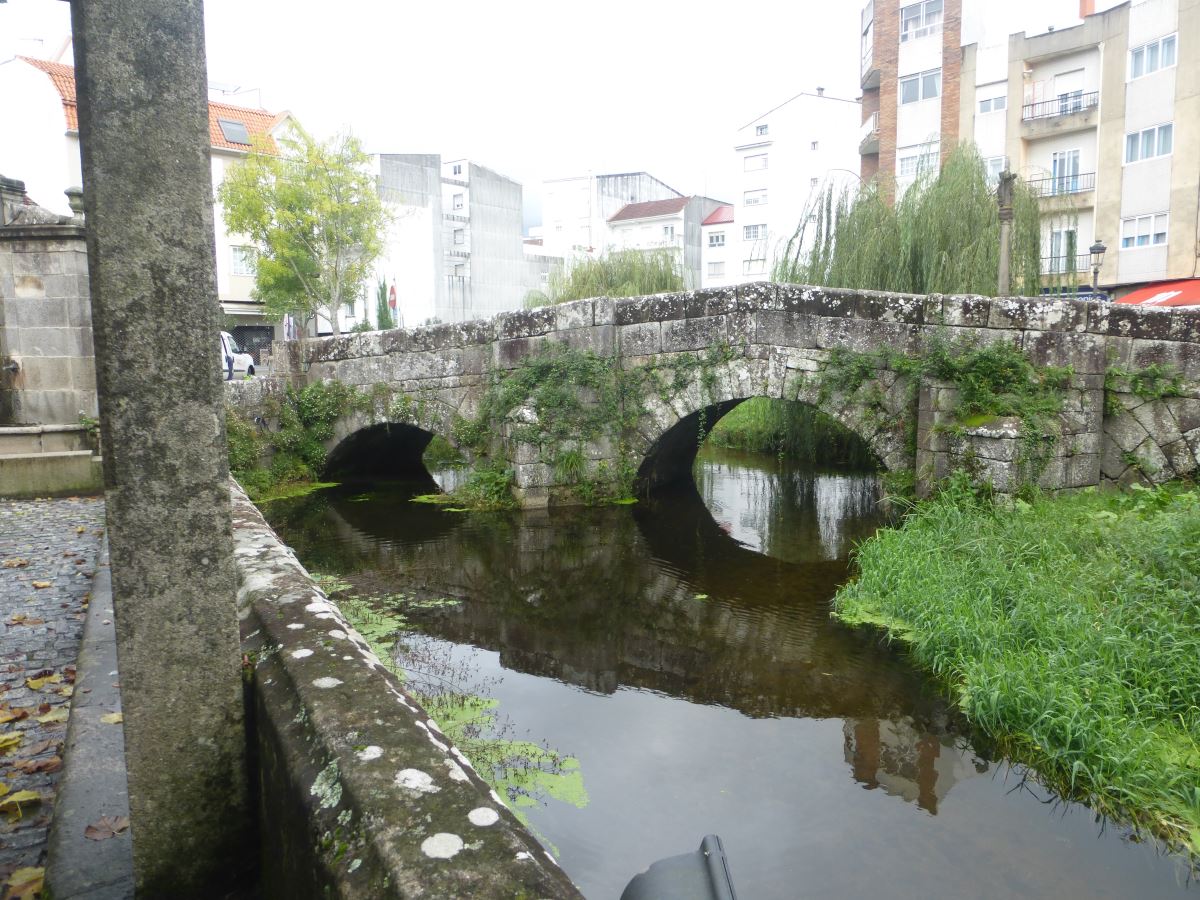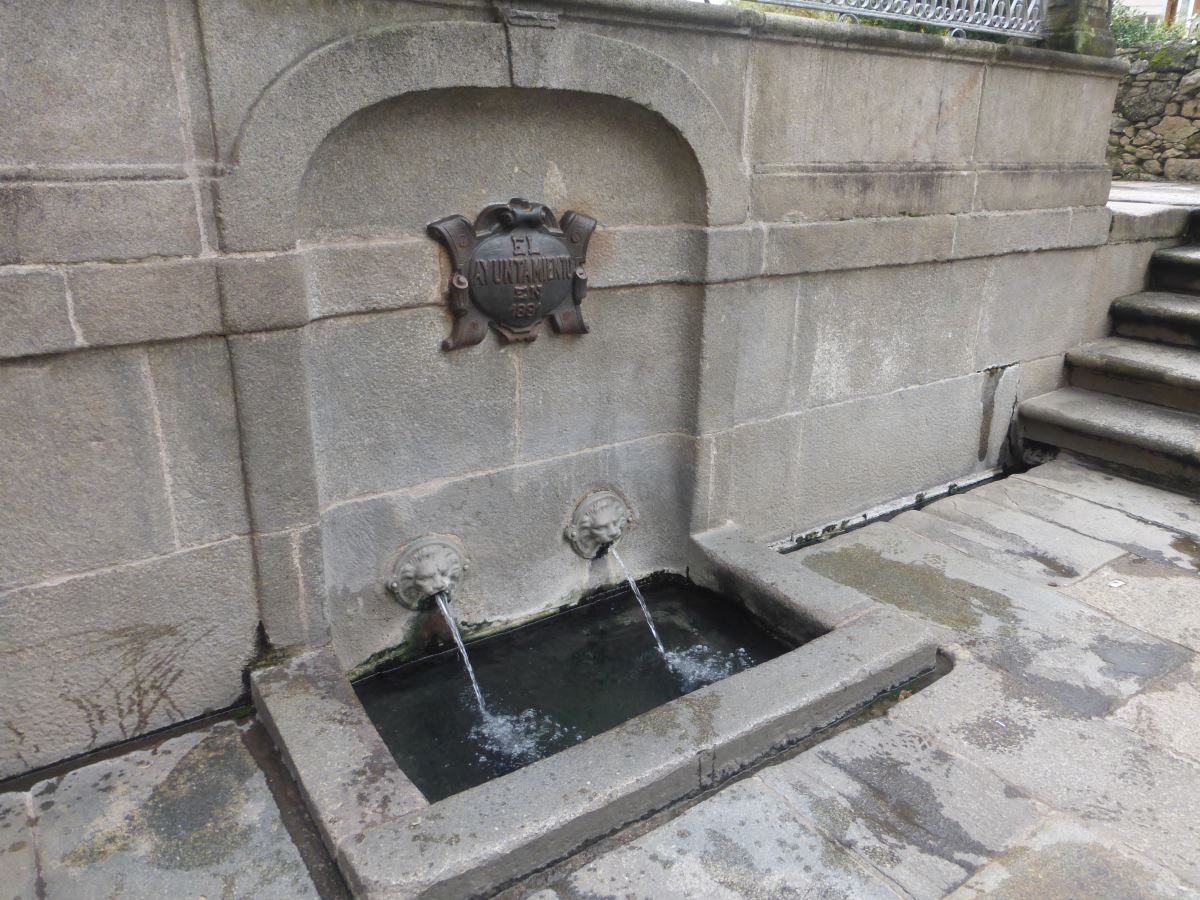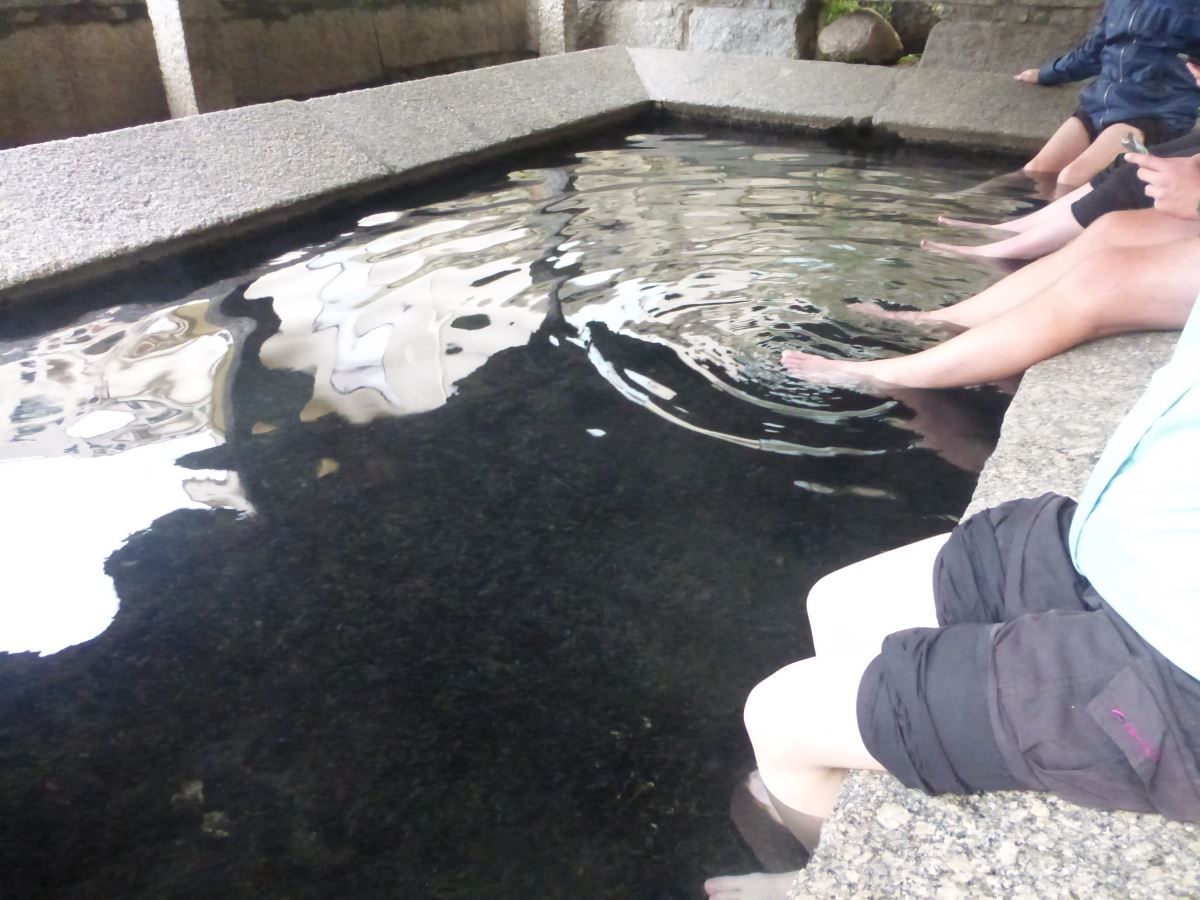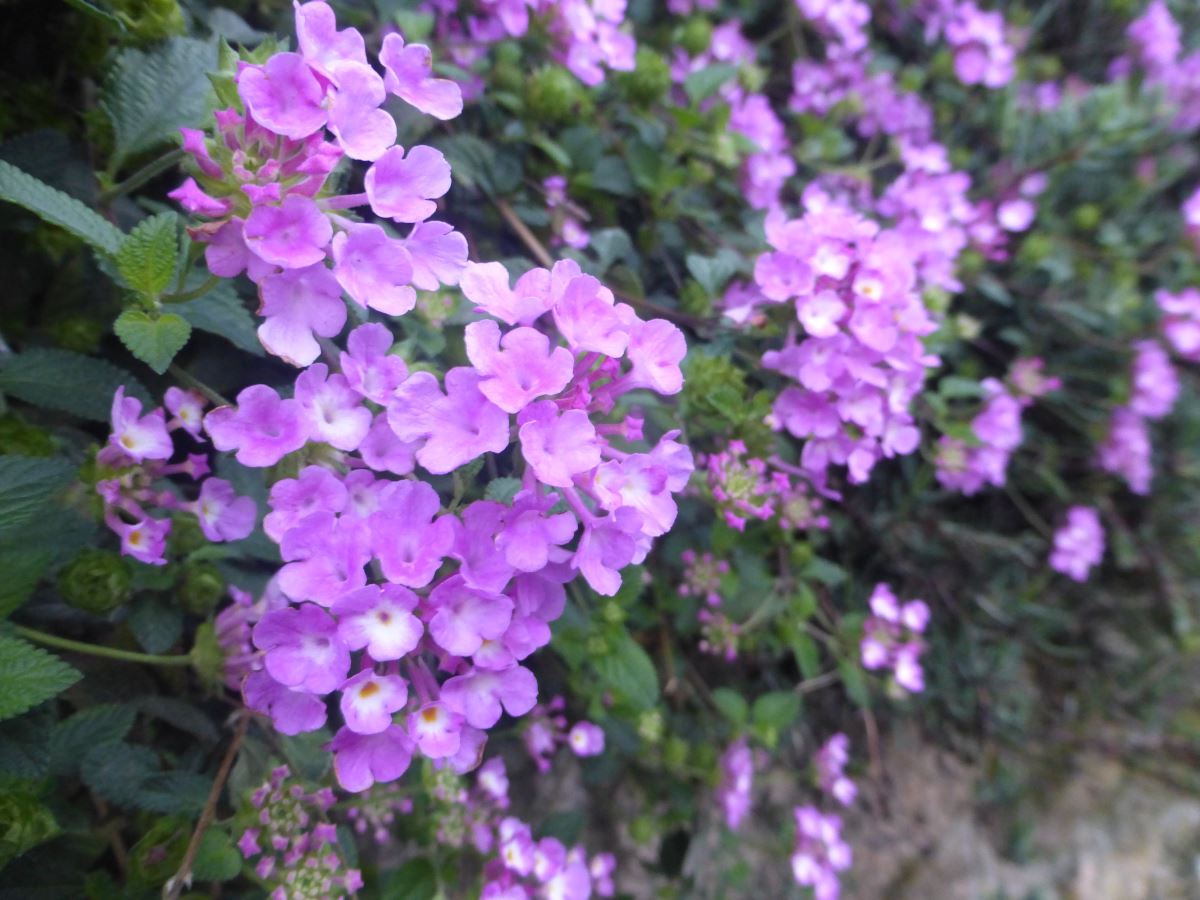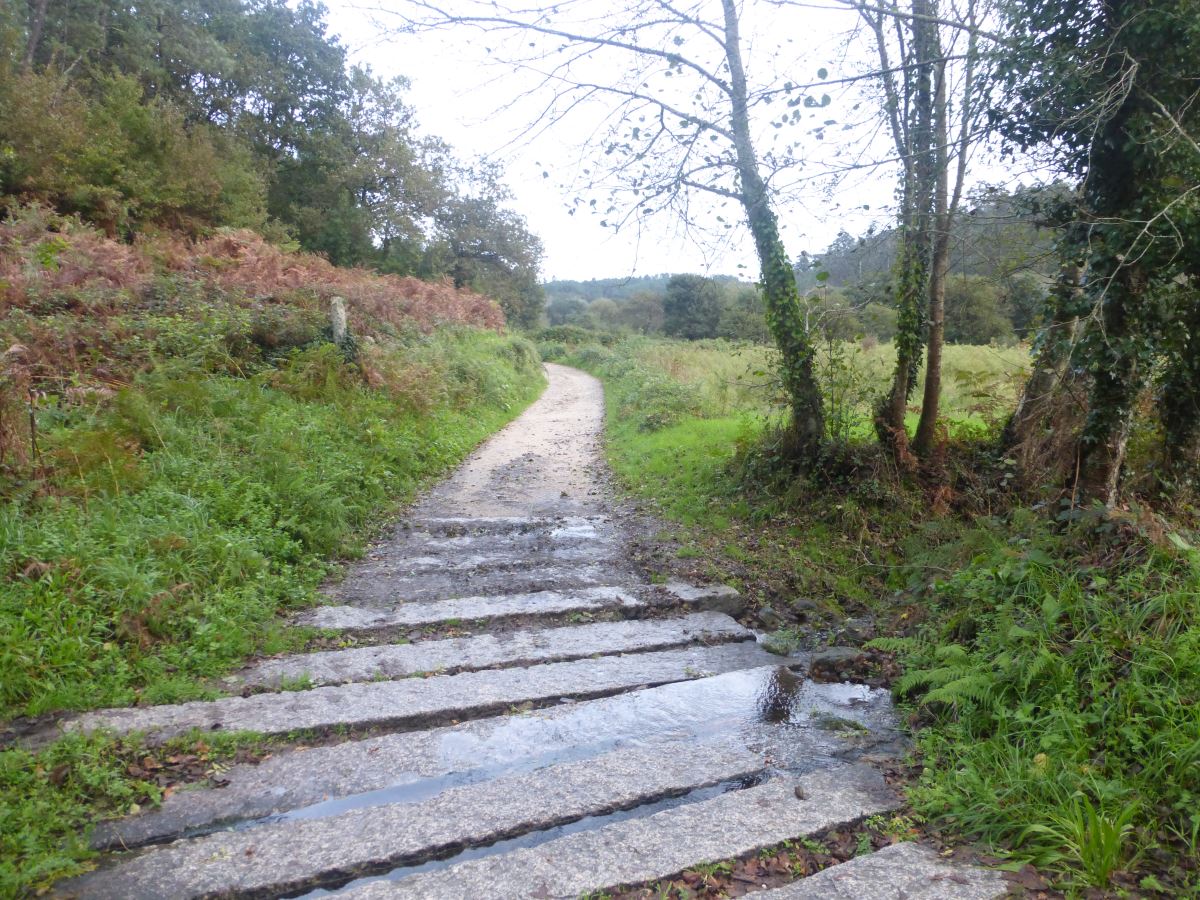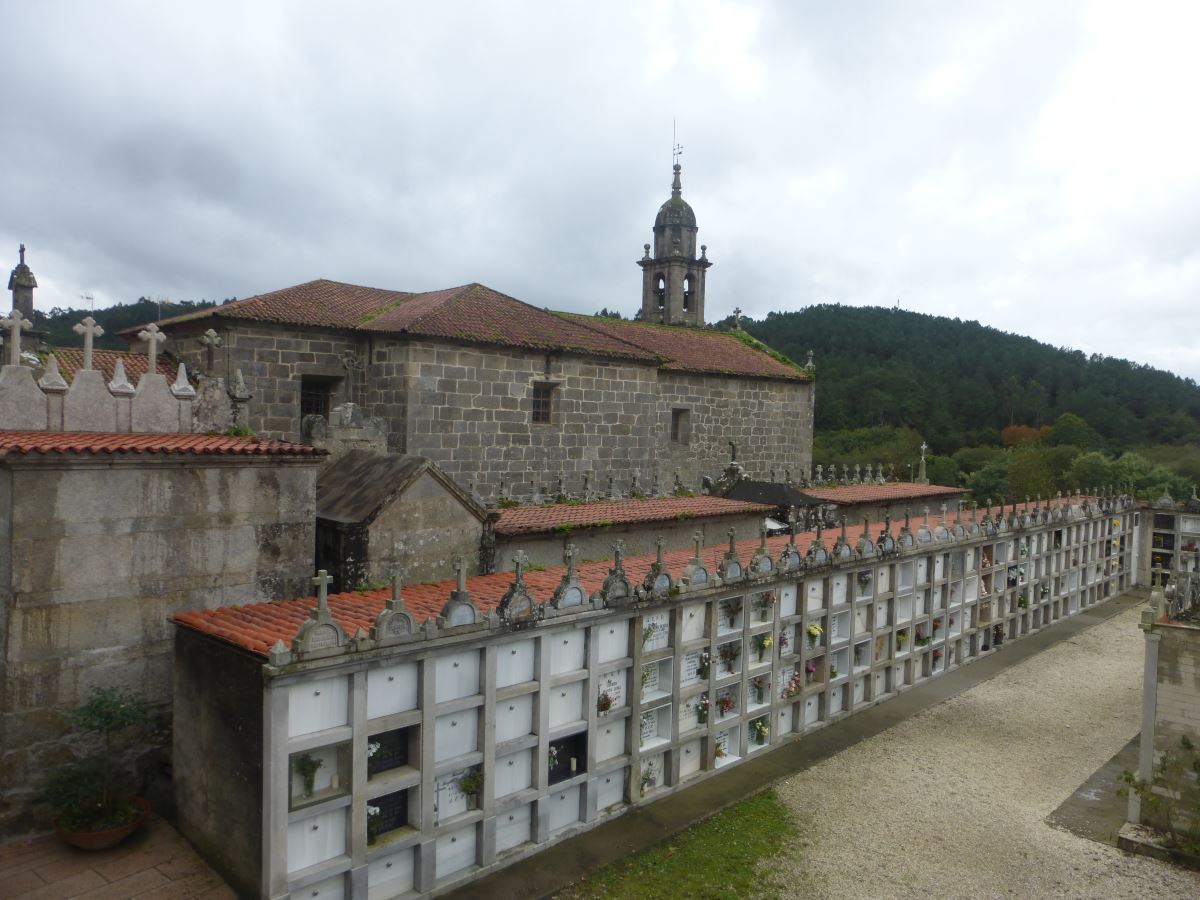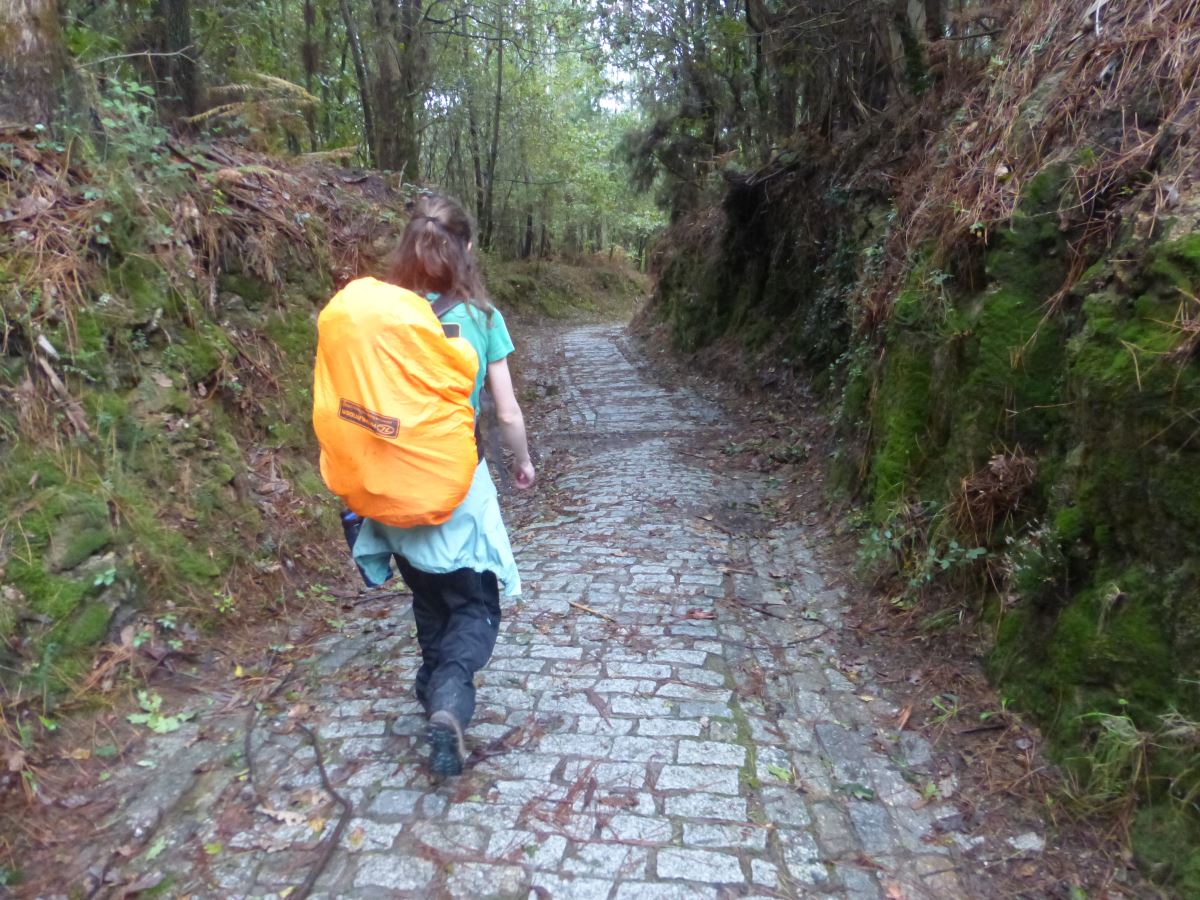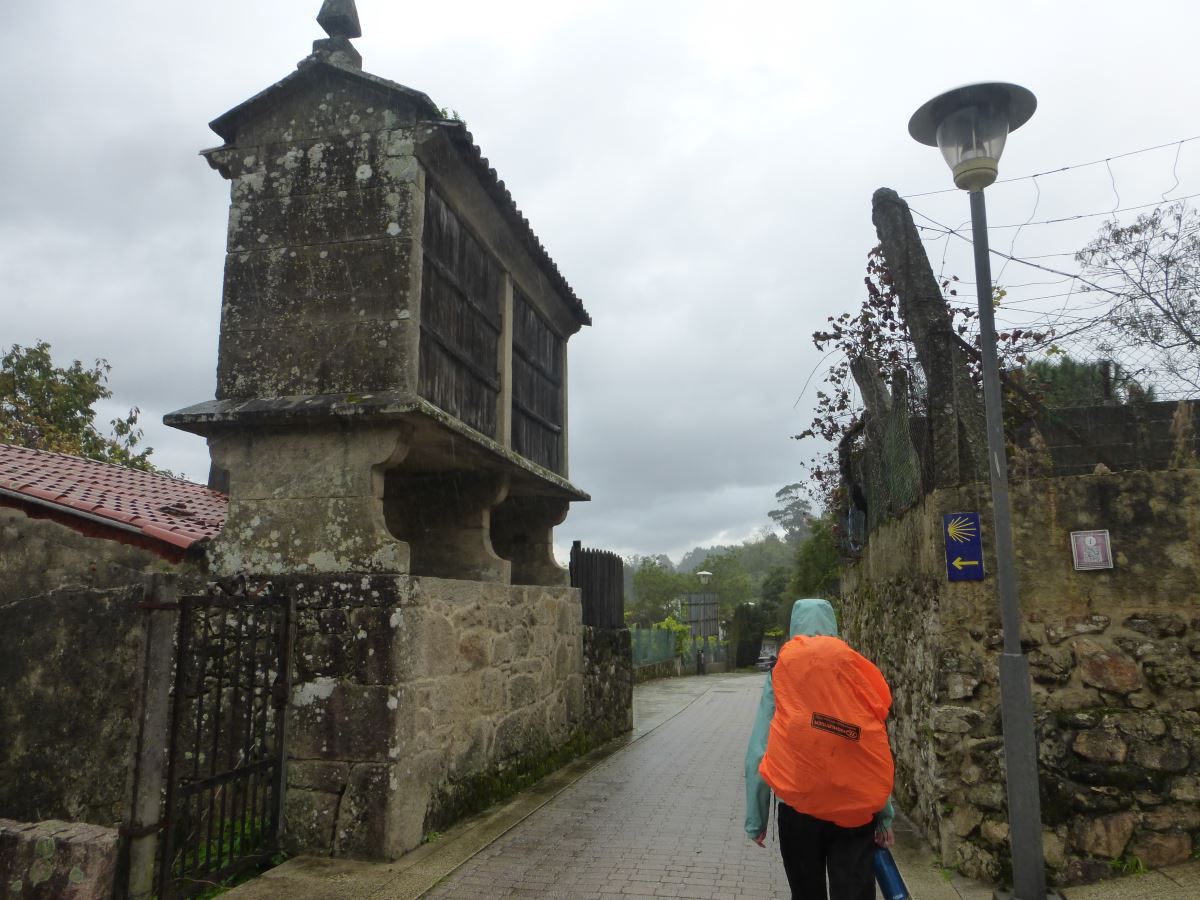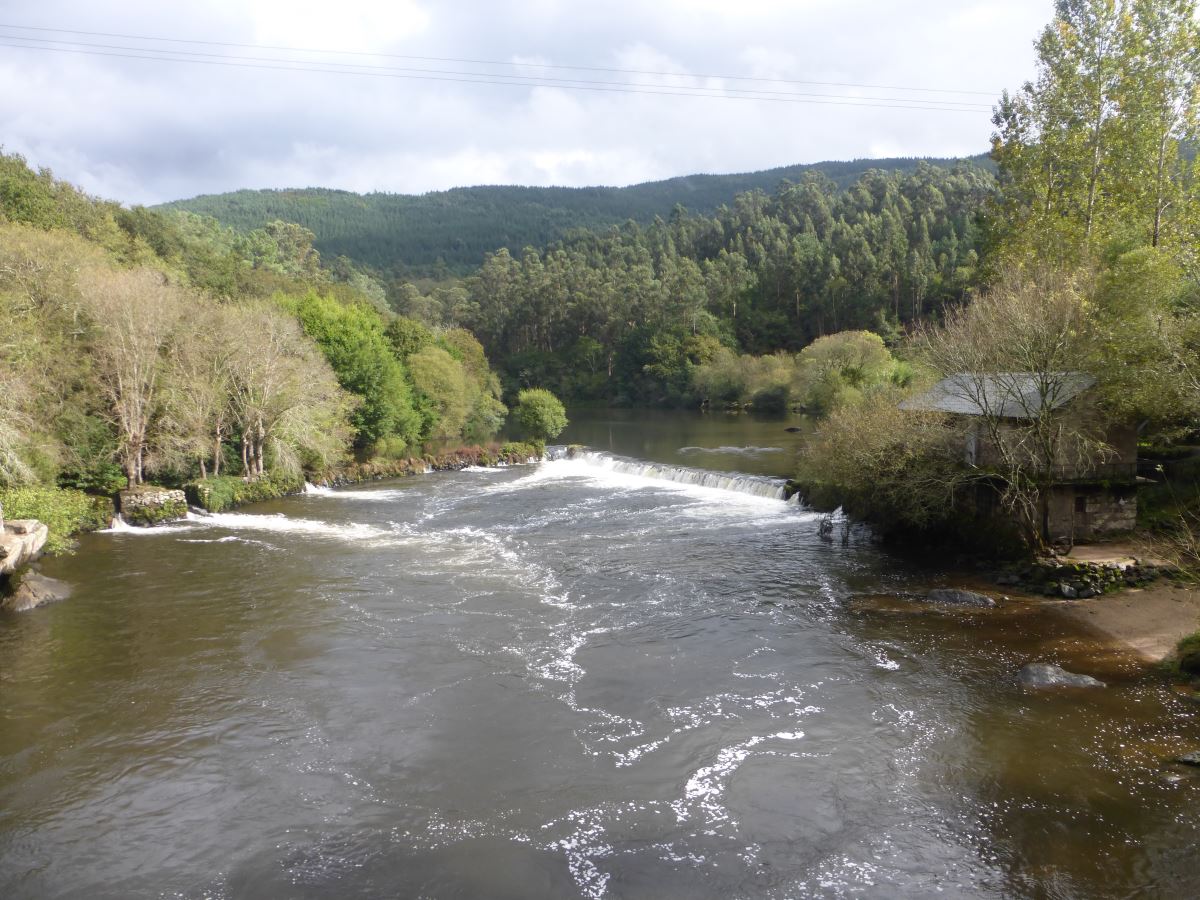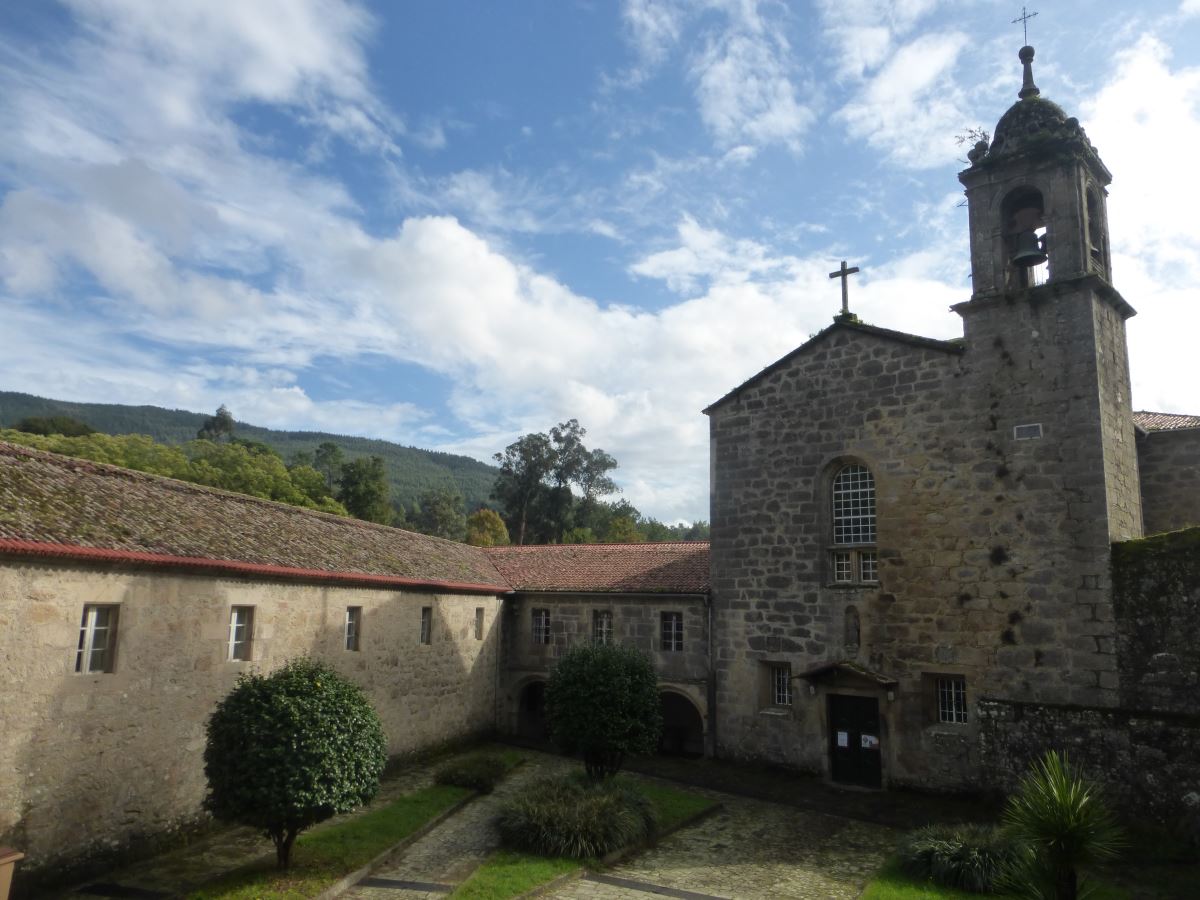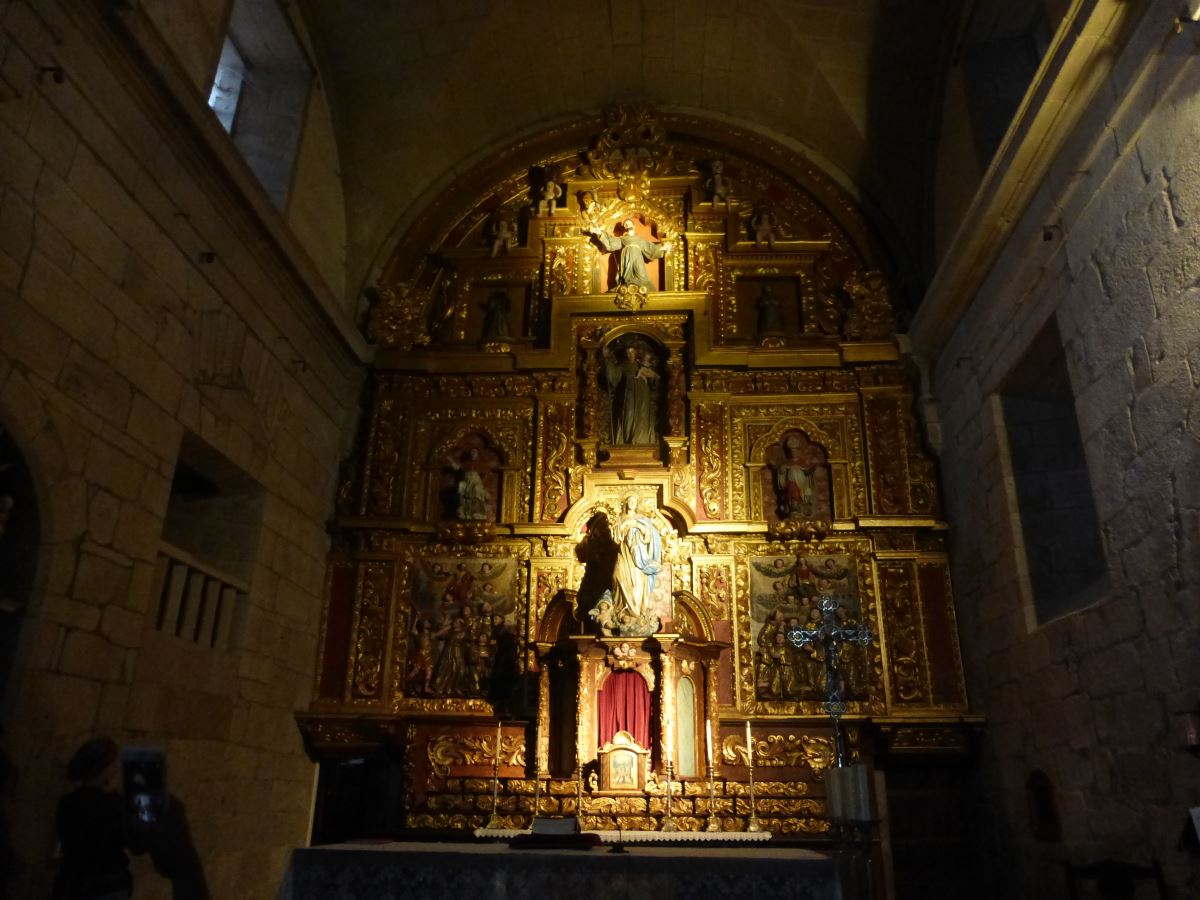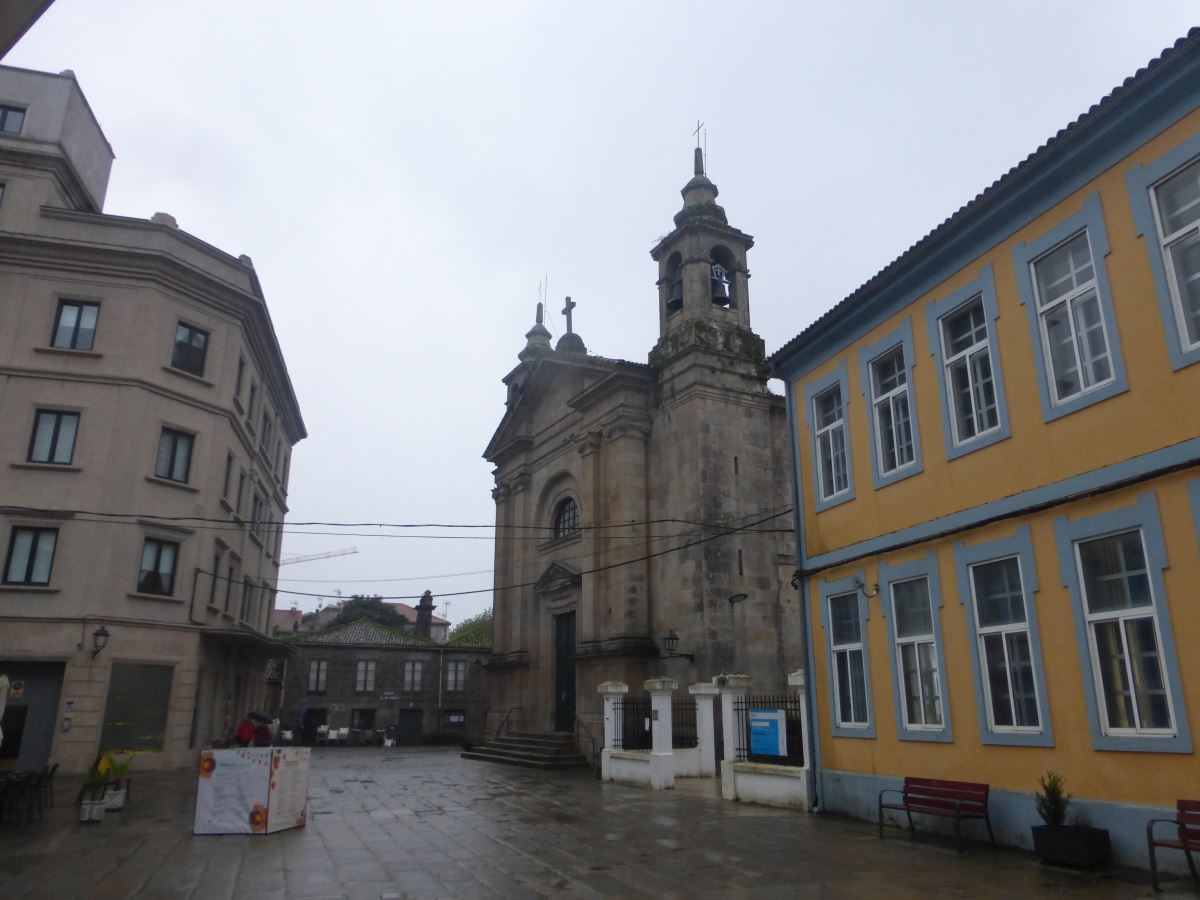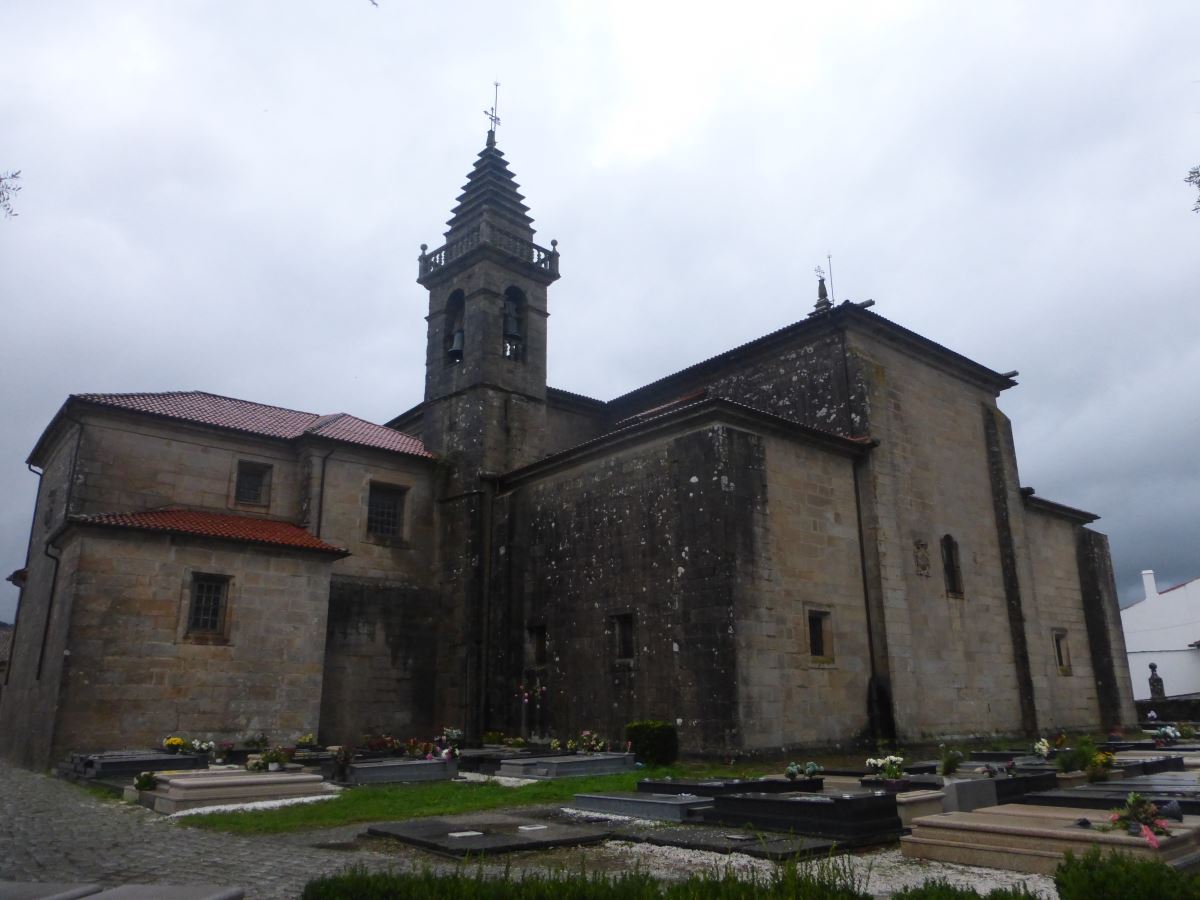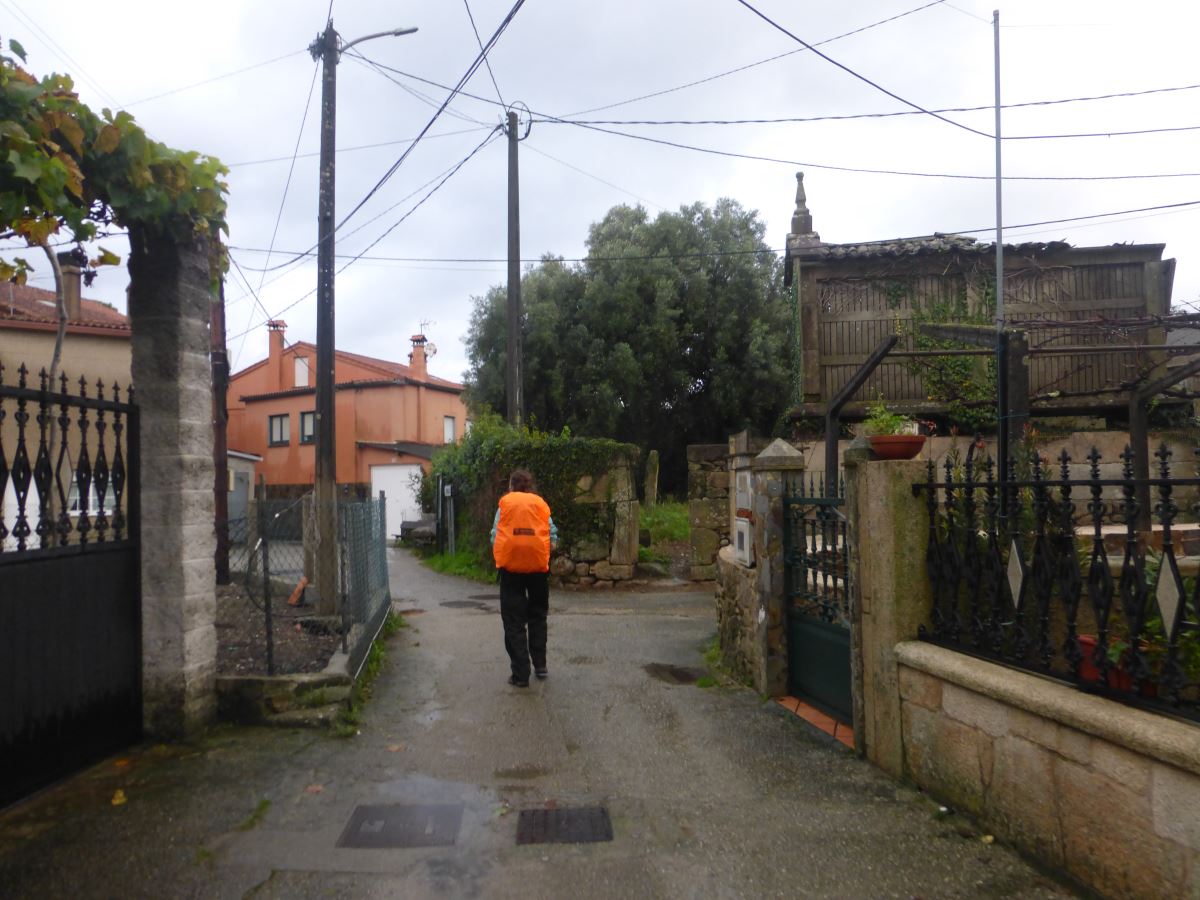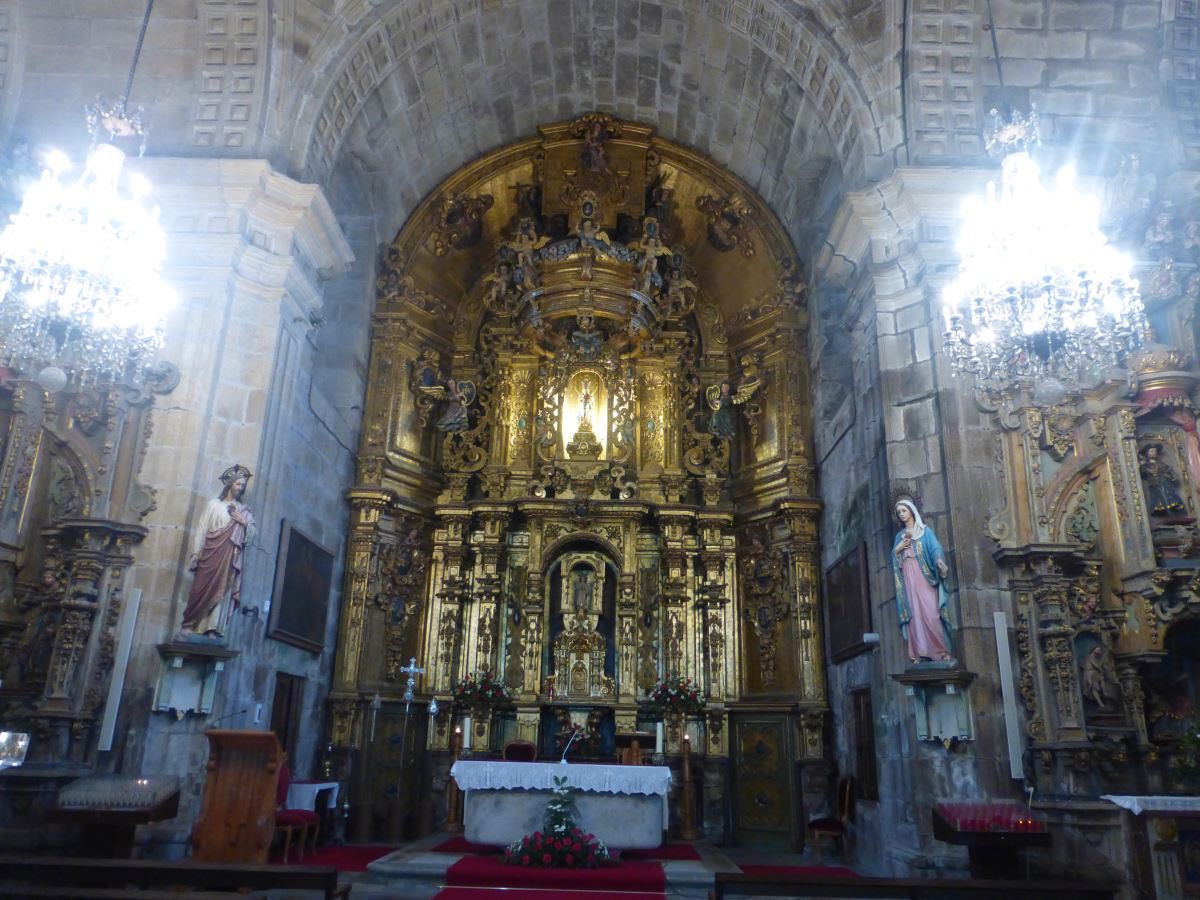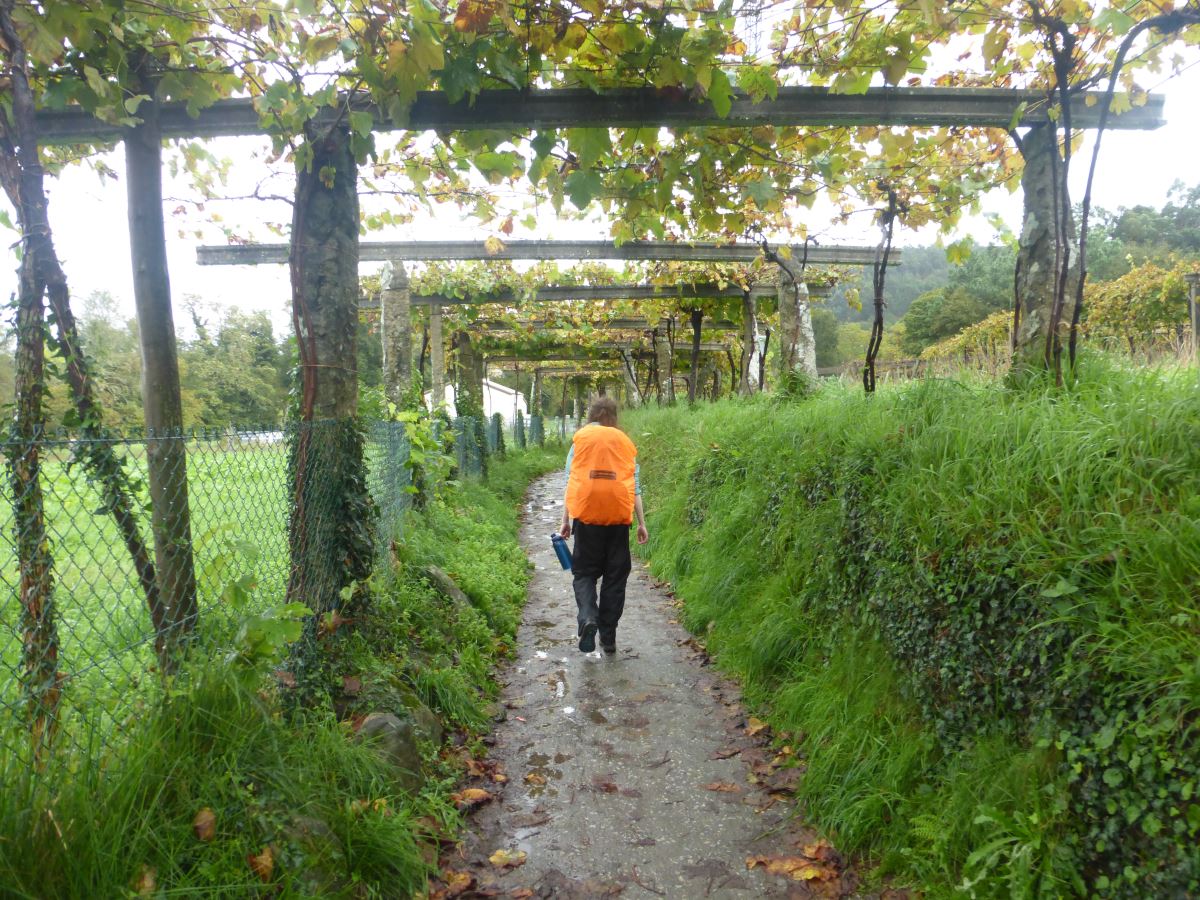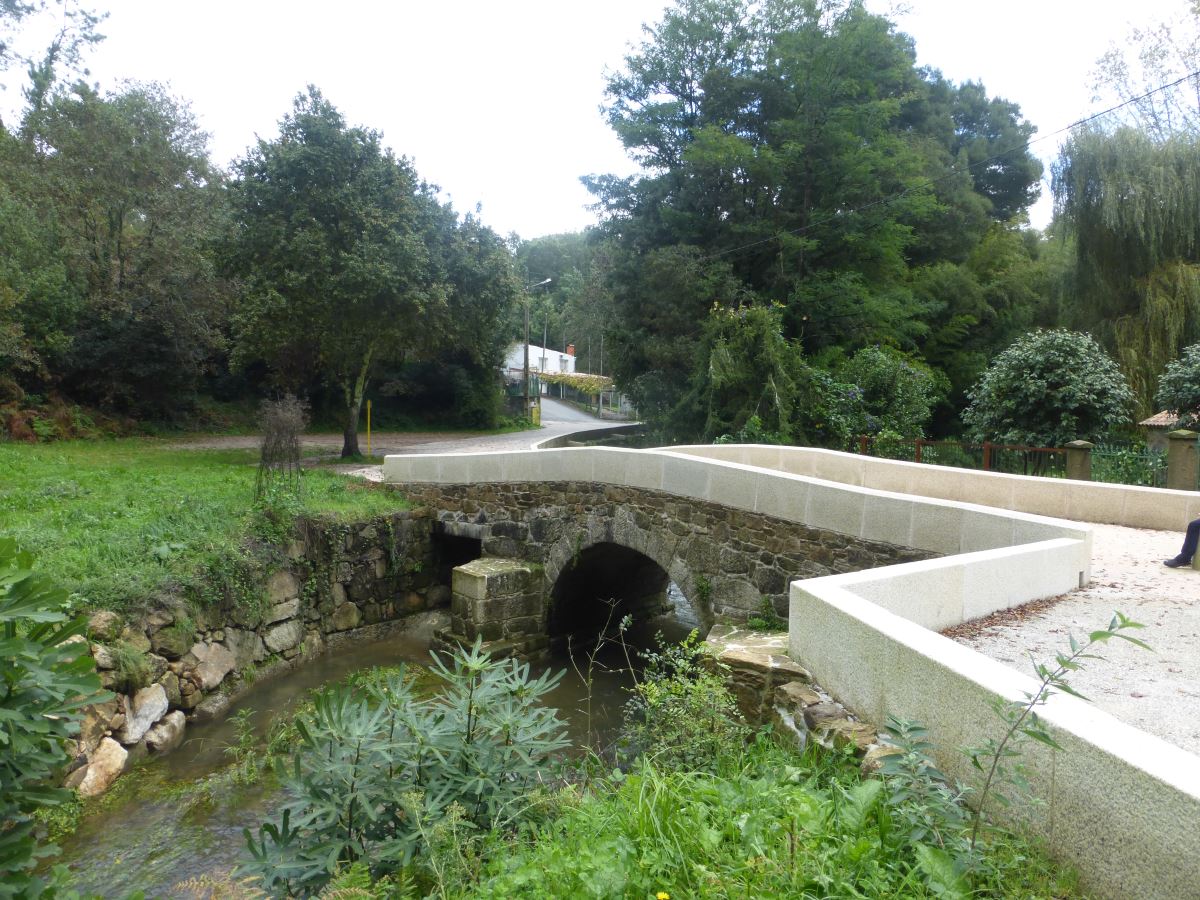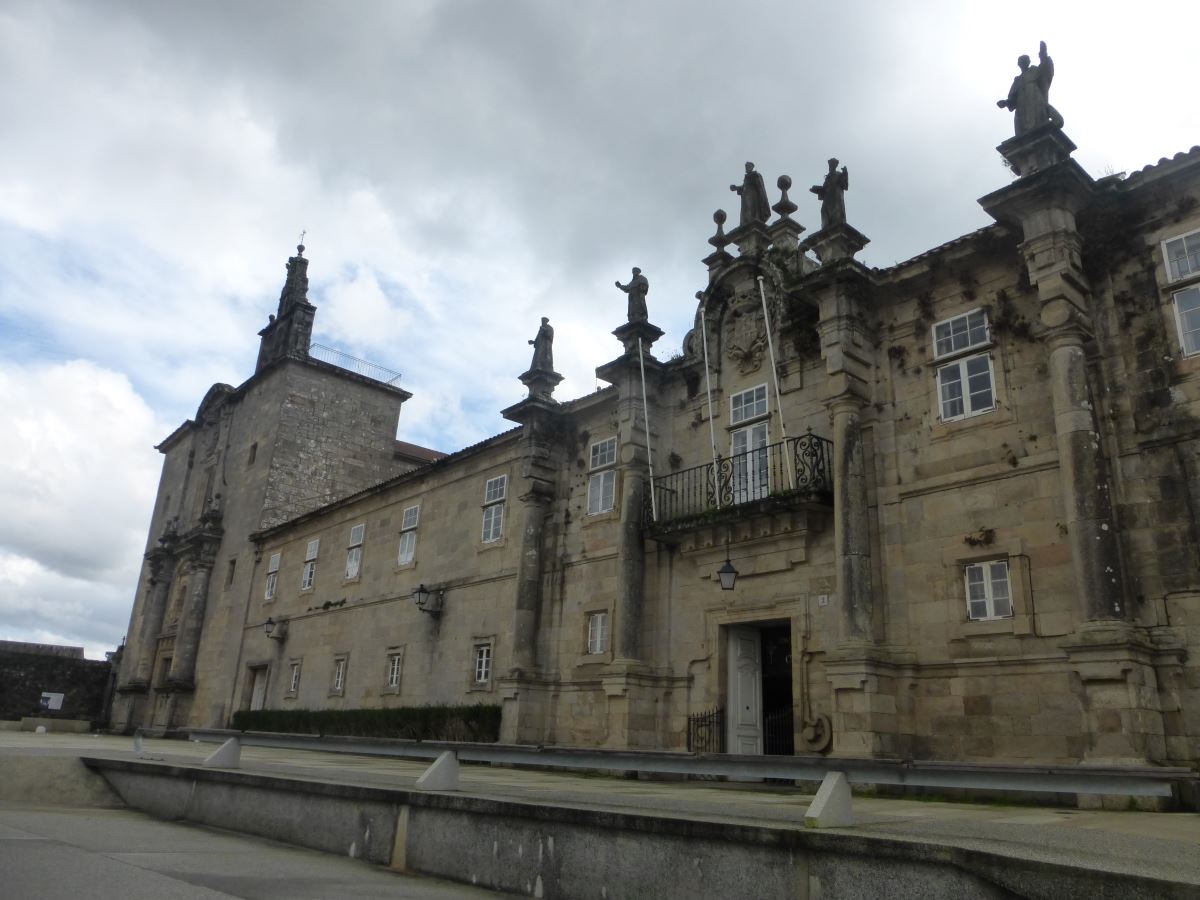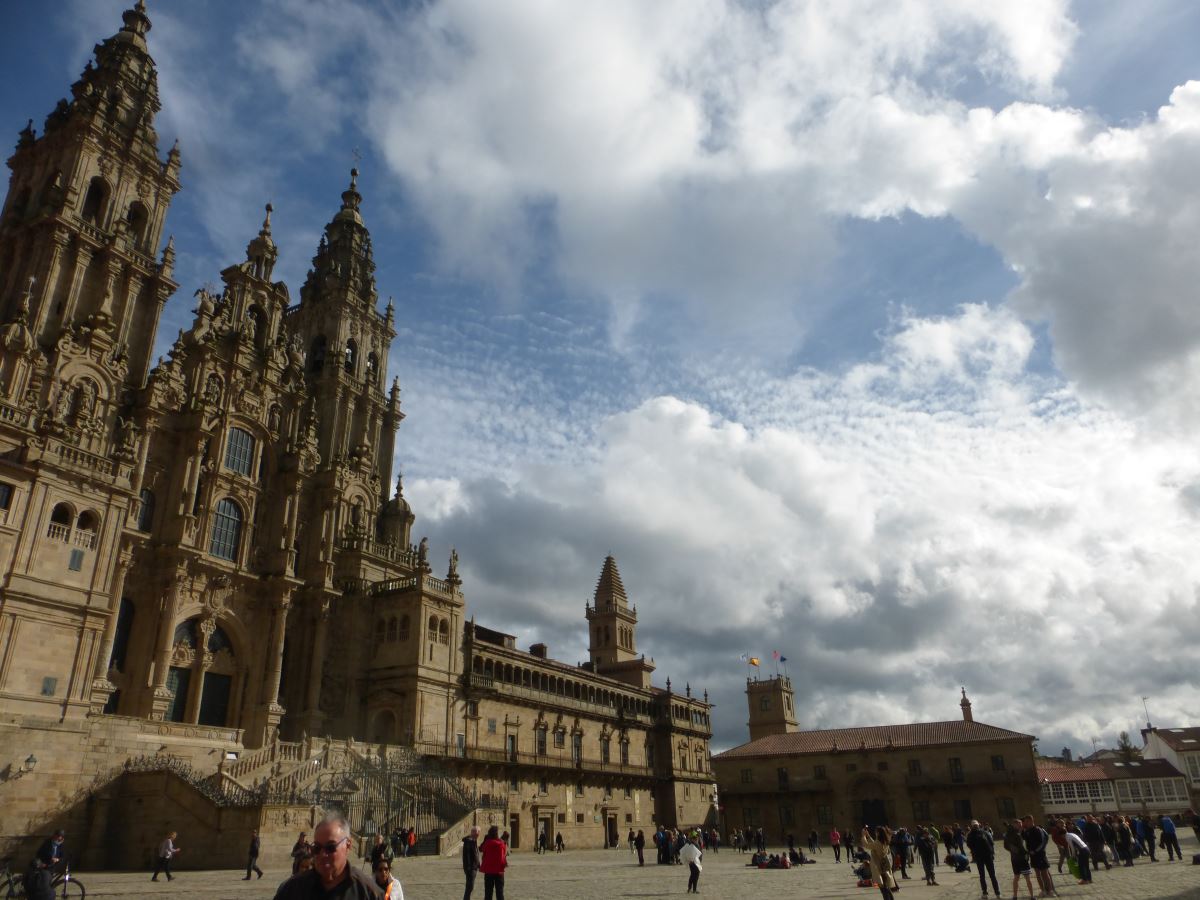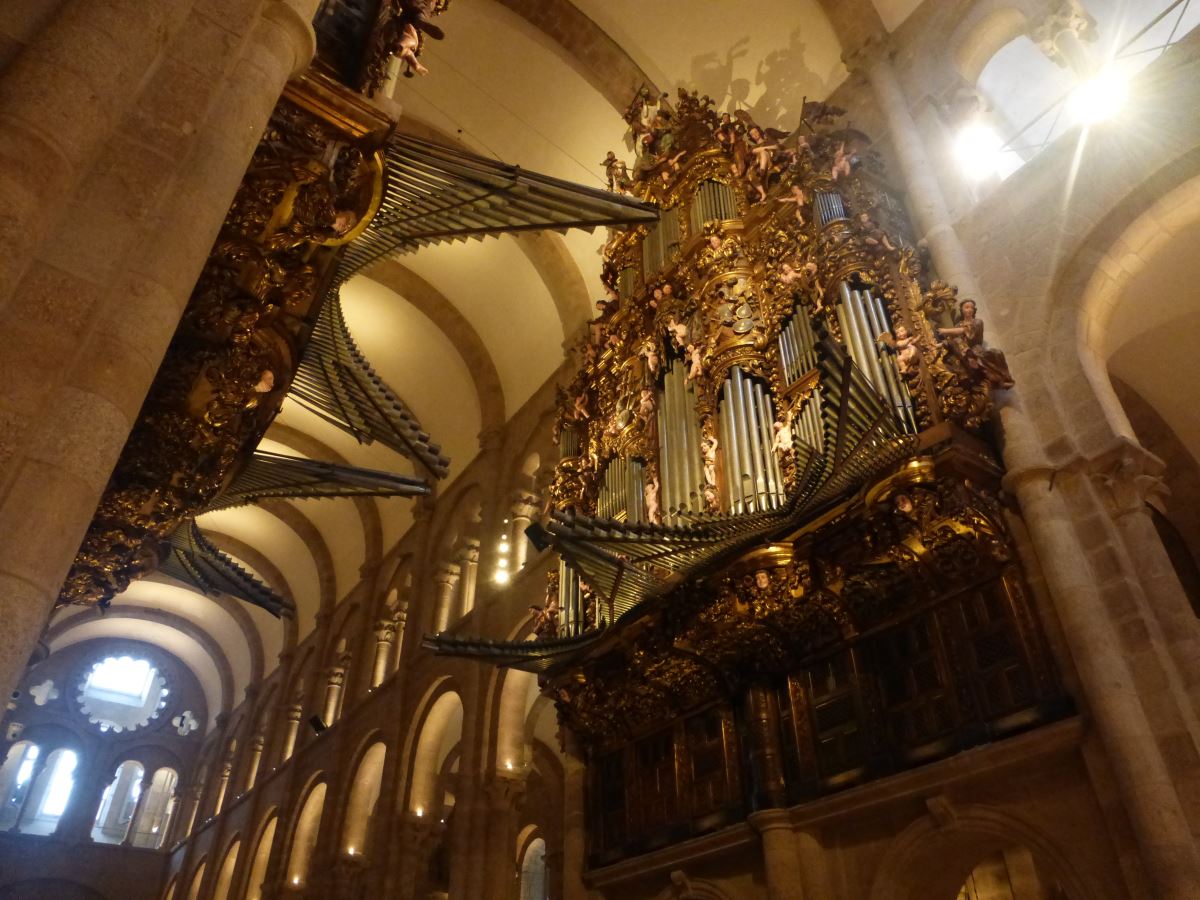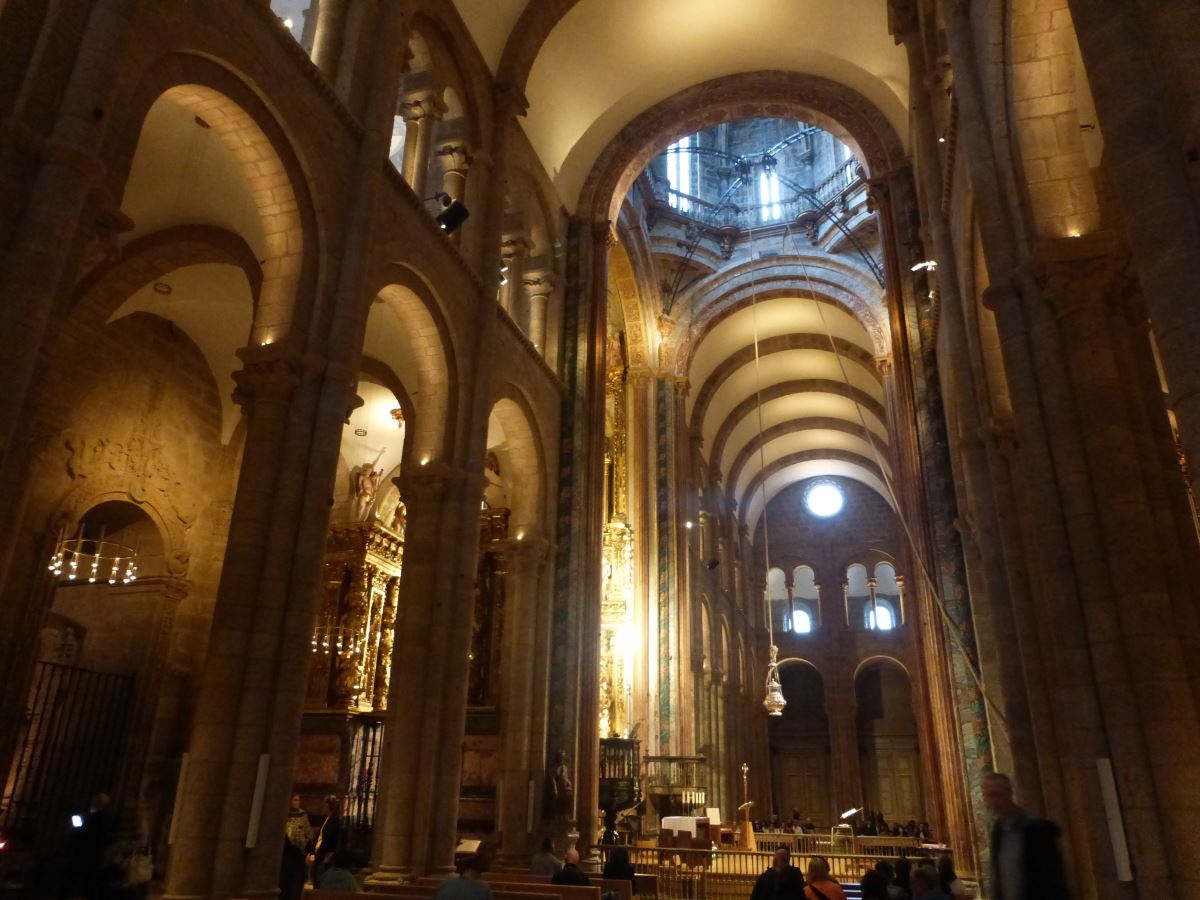Camino Portugues
Porto to Santiago de Compostela
October 2022
In October 2022 Sarah and I set out to walk a Camino. There are many such routes, based on the old pilgrim trails which converge on Santiago de Compostela in Northern Spain. We chose the Camino Portugues, starting in Porto as we felt this was an achievable distance for 2 weeks of holiday. It was intended to be something a bit different to my usual walks - a chance to stock up on some history and culture rather than mountains. There are two variations to the Camino Portugues the Central (which we followed) and the Coastal. There is also a Litoral variant which is still under development but apparently gives a much pleasanter walk out of Porto itself. We spent a long time trying to second guess which version we’d enjoy more and genuinely didn’t decide which route to follow until the night we arrived. In the end we opted for the central because the first day (on which we had quite a late start) was significantly shorter, and because we were due some pretty windy and wet weather which we thought we’d be better sheltered from inland. Logistics wise I like a physical guidebook so went with Cicerone’s The Camino Portugues though the whole way is very well signed and we rarely had to use it for directions. Lots of people we met were using app guides which have the extra advantage of weighing nothing. For accommodation we stayed in albergues which are hostels available on a first come first served basis. Apart from the first and last nights we didn’t book anything in advance which meant we could be realy flexible about how far we walked each day. Planning the trip while watching the UK hit 40 degrees for the first time did make me feel pretty poor about booking flights. I spent a long time looking at trains, buses and ferries and in the end reached a compromise of flying out and then doing an overland journey home again. I’ve included details of this at the end for anyone interested in doing similar.
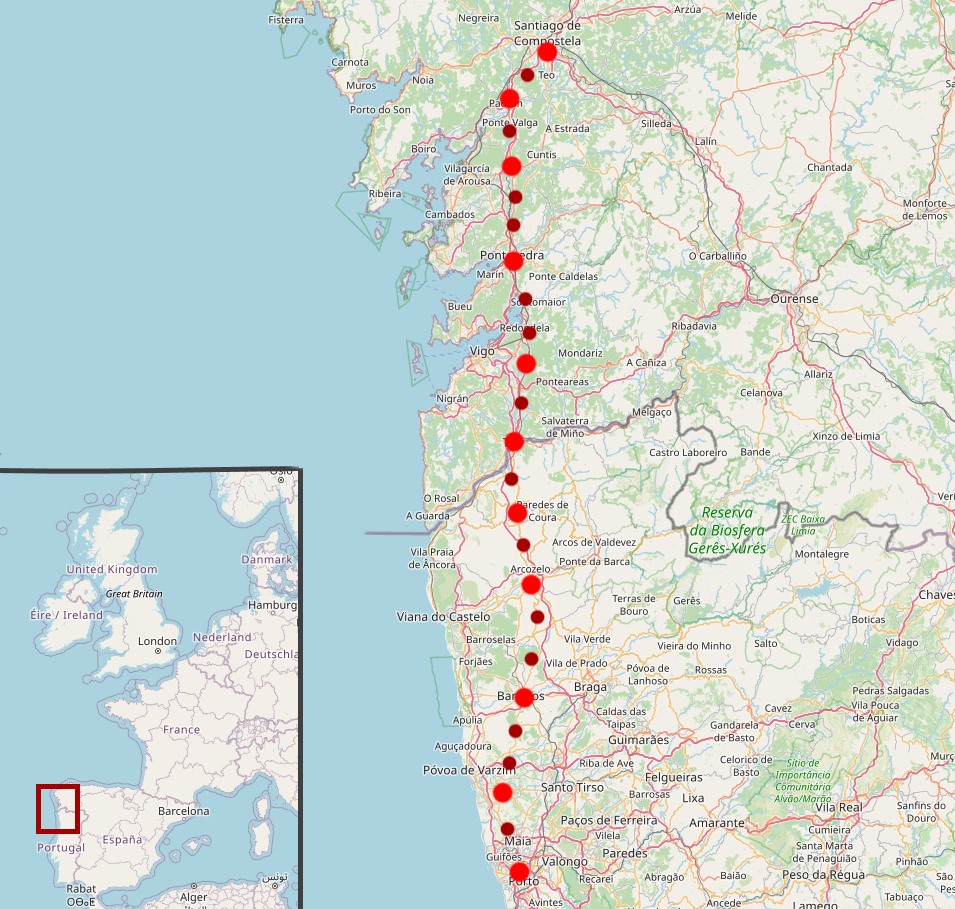
Day 1 Porto to Vairao
(25km)
Leaving our airport hotel room (the handy solution to a midnight arrival) we successfully navigate the bus into Porto and after walking in quite a few circles do eventually locate the cathedral. There is a woman singing very beautifully outside and the day is warm with patches of sunshine. Mindful that it is already nearly midday we obtain our credentials (proof of pilgrimage documents that allow us to stay in albergues) and take a super quick tour of the inside. Back outside we find our first yellow arrow and we’re off. The route is well signed and, though I keep an eye on the guidebook description, as we gain an eye for the arrows we use it less and less. The first part of Porto is old and beautiful with plenty of interesting streets and tiled buildings. Keen to get some distance behind us we ignore lots of cafes and grab a very functional lunch of bread and enormous amounts cheese (the only interesting local one coming in 1kg rounds). After this it gets less scenic and it’s a bit of a plod through housing estates and functional streets. A few patches of rain pass over but it remains pleasantly warm and we make reasonable progress. Eventually the residential streets merge into something greener and we can finally say we have left Porto behind. About 6pm I notice that the guidebook description says to bring food for dinner because the albergue we are heading for doesn’t have any shops, and this causes a brief panic as everything is now closed and all we have is 900g of cheese. Fortunately, after passing a few closed shops, we are saved by a small supermarket in Giao and arrive fully stocked. Our accommodation for the night is Vairao Monastery albergue in which we initially score an empty dormitory though we are later joined by one other woman and it’s a quiet evening, disturbed only by a howling wind and the lashing of rain against the windows.
Day 2 Viarao to Barcelinhos
(30km)
It rains all night with the addition of quite a bit of thunder and lightning and overall it’s a good time to enjoy being safely tucked up inside. Come morning the rain has abated but the skies remain grey and heavy. We grab breakfast then head out back to the yellow arrows. The first part remains suberby and we can’t help but wonder if we should have done the coastal route after all but it improves, with old medieval bridges and plenty of churches. Being autumn the fields have all been harvested and the world is therefore currently a bit damp and brown. There are a few sudden downpours but otherwise it stays fairly dry. As we get closer to Barcelos we gain a smattering of brightly painted cockrel statues and a series of signs announcing the distance remaining to Santiago. With one every kilometre, and over 200 of them still to go, they are a slightly demoralising progress marker! Late on in the day our feet are getting tired when we spot a signpost for a diversion to the Monte de Franqueira and the promise of Atlantic views. We go for it which of course means a fair amount of up, following a winding road through eucalyptus forests. Out on top of the hill the Atlantic is indeed just visible in the haze and it’s a wide and open vantage point which is well worth the climb. Down the other side we arrive footsore into Barcelinhos where we grab a bed at the Amigos de Montana albergue for 5 euros each. We cook up vast amounts of pasta and beans for dinner and meet Triin from Estonia and a few other faces who will become familiar.
Day 3 Barcelinhos to Ponte de Lima
(34km)
A long day this one but much more scenic. I rescue my still-soggy socks which were washed yesterday evening and have completely failed to dry overnight and attach them hopefully to the back of my rucksack. Setting off we cross the bridge into Barcelos which is a beautiful town with an impressive round cathedral though the doors are shut and after a bit of debating we decide we don’t have the confidence to push one open and look inside. Continuing through the town it starts to drizzle, and by the time we’re slogging up a hill out the other side it is absolutely chucking it down. We make the mistake of delaying donning the waterproof trousers because it is also rather warm and we’re slogging up a hill, then end up hiding in a bus shelter instead. Clothes changed and wrung out, all the waterproofs donned, and soggy (now saturated) socks removed from the outside of the rucksack we set out once more. The rain continues to pound down and I’m rather concerned that our forecast dry morning has come and gone. We attempt to go and hide in a café for lunch but after a 2km detour find it closed. Humph. Eventually we find some lovely covered picnic benches at which to break out some lunch, and then a chink in the clouds appears and grows and suddenly we’re standing in hot sunshine with steam rising slowly from our soggy clothes. In a perfect opposite to the weather forecast the afternoon then remains bright. We pass vinyards and churches and roadside shrines and eventually arrive into Ponte de Lima along a stunningly beautiful avenue lined with old trees. The albergue is over the bridge in a lovely old building with a big communal dormitory up under the eaves. We treat ourselves to dinner out and are rewarded with a very good fresh fish dinner and homemade lemonade.
Day 4 Ponte de Lima to Rubiaes
(18km)
We start the day with a quick detour back over the bridge where I sit in a light drizzle and eat some delicious chocolaty custardy pastry things (acquired in the typical British way where you point at an unknown but tasty looking item and wield your three words of Portuguese “dois por favour”), while Sarah does battle with a cash machine. Getting going again it’s a shorter day through small farms and forests. There is a lovely section where we can see down through the trees to the river Labruja running alongside. Then it’s time for some up and the crossing of the Portela Grande (408m). The guide book warns us to go slow and take plenty of water but the advantage of walking in October is that it is not particularly hot, and that the sky provides all the water for you. A couple of brief showers keep us nice and cool on the way up and then, on starting the descent the heavens open. Luckily there is a snack shack with excellent muffins and just enough of an awning that we can hide ourselves away from it. Carrying on down we pass under long arches of grape vines and meet Victor from Spain who recommends a private albergue to stay in tonight. On reaching Rubiaes the rain re-starts and we decide to take up this suggestion, finding ourselves in Ninho, a lovely homely spot with the fire on (15 euros). It’s a delightful place to relax, enjoy a sociable evening and get all our stuff dry. We meet Blandine who has walked the whole Camino all the way from Lisbon, and a German couple who are kind enough to include my now rather musty socks in their washing so that for the first time since day 1 I can have clean dry toes.
Day 5 Rubiaes to Tui
(20km)
The morning starts with a small hill and a brief but good view over the way ahead, then it’s down for most of the day, winding through woodlands and old cobbled roads. Overall it’s quite short and easy compared to the others and we come quickly into Valenca, with its impressive thick stone walls and a good view out over the river into Spain. We poke our heads into yet another beautiful old church, this one with the interesting addition of lots of box houses for stray cats. Meandering back out through the walls we’re caught by a torrential downpour though fortunately there are plenty of old passages and hiding holes to sit about in and wait for it to stop… Nope. Eventually we get bored and put all the waterproofs back on and keep going. We cross the international bridge into Spain which because of the time difference takes a whole 1 hour and 2 minutes. It rains for all of that time to the extent that there’s not much of a view. On the other side we’re in Tui, another beautiful medieval town and our end for the day. We find the albergue just next to the cathedral and bag ourselves some bunks, finding ourselves next to Triin and Janka and other faces that are becoming familiar. We spread out lots of wet clothing then make the most of a soggy afternoon doing the official audio tour of the cathedral which is nice and dry and also very beautiful. Back at the albergue there is a complete absence of cooking facilities (the “kitchen” containing only a sink, two empty cupboards and no way of heating up anything), so end up tagging along for dinner with a big group of other peregrinos including Triin (Estonia), Janka (Germany) and Rico and Marina (Netherlands). It’s a lovely sociable evening with a cheap and filling Pilgrim Menu (three set courses for hungry walkers) including our first taste of the pilgrim delicacy tarta de Santiago.
Day 6 Tui to Mos
(23km)
There is lots and lots of rain overnight accompanied by thunder and lightning. Just in case you manage to sleep through that there is also a loud and seemingly never ending party happening just opposite the window which is still going when we get up. Albergue rules state you have to be up and out by 8am which with the time difference today means starting in the dark. It’s a dry start but with a few showers passing over and as we drop towards the river we soon find where all last night’s rain ended up. Sarah dons her flip flops (my shoes are already sodden so I have nothing to lose keeping them on) and then we wade cautiously onwards, a long line of soggy peregrinos with water lapping around our ankles. Fortunately it’s pretty warm. After a while the path rises and the line of soggy peregrinos squelches into a small café, steam rising gently from the massed crowds within. We are the only ones to carry on past, finding ourselves on an empty trail winding back down towards the river. We meet a man coming back up towards us, it’s impassable he says, the water is over a bridge. We spend a while studying the guidebook for alternatives but they all look like fairly major roads, so we decide to carry on and assess for ourselves just how bad it really is. The answer is pretty bad, but you can see the line of the path based on the spacing of the trees and the water is fairly still, with no major flow or current. So we find a couple of branches to use as walking sticks, take the trousers off and put just the waterproofs and shoes back on (good river crossing advice as it helps to keep you warm/protected) and use each other as supports to achieve a slow probing advance. It’s quite fun. The water is opaque with sediment and comes well above the knee at times, making it impossible to see what our feet are about to meet but we keep inching our way along and eventually the ground rises back up and we’re through. It feels exhilarating to have overcome the challenge (we later learn we are perhaps the only ones to do so as the police closed the route just behind us!) though we do decide against the optional river detour for the next part - facing the long and incredibly straight slog through the industrial estate instead. I would say at least it passes quickly but it really doesn’t. We reach O Porrino, another beautiful old town which has the added advantage of some wonderful covered streets in which we can hide from some torriential rain. Also hiding, we then find Victor and Triin and set out again all together for a while, though the pace is blistering. The sun pops out briefly as we celebrate our first way marker with sub 100km to go, and we make it to Mos for early afternoon. We debate for a while whether to stop here for the night or to carry on as it’s still early. Dithering we pop into a café to get a credential stamp (because this side of Tui we now need to acquire two stamps per day) and meet Blandine and Victor who convince us to stay and have lots of food instead. Of course the sun then comes out and, contrary to the forecast for 100% rain all day the afternoon is then the best weather we’ve had all week.
Day 7 Mos to Pontevedra
(29km)
Off with the sunrise at 8:30 there’s some initial drizzle but it quickly clears and the rest of the day is dry and even partially sunny! Having enjoyed a short day yesterday we have a lot of ground to cover but it passes quickly with lots of small hills giving some great views from their tops. We pass through Redondela where the last of the coastal route walkers join, and the way certainly starts to feel more crowded. From the map this next part of the route, close to the Ensenada de San Simon, looks very scenic but reality is that the higher roads run through dense trees and there is hardly a glimpse of the water at all. Crossing the River Verdugo on the Ponte Sampaio is beautiful though, as are the tiny twisting streets that follow with an abundance of old grain stores perched high on stilted legs. The final part of the day into Pontevedra is mostly wooded old paths - one with an ancient set of wheel ruts etched deep into the stone. It’s quite a contrast to the construction site we then pass (evidently too new to be mentioned in the guidebook) where half the hillside has been dug away for a major new road. Coming into town we opt for the slightly longer riverside variant which is nice but very wiggly and the feet are feeling flat after a long day. Finally trudging our way into the albergue we’re greeted by a cheer from all our Camino friends who are sat out in the lobby. It’s a real welcome and it feels like we are forming a wonderful bond with these people who were strangers only a few days before. Today happens to be Sarah’s birthday so after a somewhat footsore trudge to the shop and back we enjoy a big communal spread of everything that can be cooked in one small microwave (the kitchen amusingly being fitted with an extractor hood but no cooker), followed by compulsory cake.
Day 8 Pontevedra to Caldas de Reis
(21km)
After a great night of actual sleep as by some miracle no-one in the full 50-ish person dormitory was snoring, we’re off again with the sunrise. We spend a touristy hour in Pontevedre poking our heads into some beautiful churches and climbing up to the top of the Capela da Virxe Peregrina. Leaving town the rest of the day is fairly flat and very pleasant, winding through woods and vineyards. We take the optional detour to the Parque Natural Ria Barosa falls for lunch which is a beautiful spot and well worth the extra distance. Onwards through more vineyards the route is straight and efficient, and we arrive into Caldas de Reis in the early afternoon. We secure ourselves beds at the Albergue Posada Dona Urraca - only 6 people per dorm tonight, and bump into Marina and Rico who are also staying here. Together we head out to explore town and find the hot springs. First we come to a small water feature on the main street which is indeed very warm but pretty tiny, but then off down a side route we find a fantastic square pool big enough to all sit around the edge and soak our feet (which was not mentioned anywhere in the guide book!). After over a week of walking on hard ground it is bliss. Finding more friends we join Triin and Janka for dinner out, then return for a second foot soaking before bed.
Day 9 Caldas de Reis to Herbon
(20km)
It’s a dry start with a few hints of sunrise filtering through the clouds. The day is peaceful with lots of forest paths and a gentle smattering of late morning drizzle. After an uninspiring hunt round a small supermarket for lunch we luck out on an excellent tuna pie at a café. Further on we take the optional detour to Herbon Monastery where we plan to spend the night. The sun makes an appearance on the final approach, with a beautiful section past fields of Herbon peppers and a river crossing on a long bridge. It’s quite a short day overall and we are the first people to arrive at the monastery. An older man greats us and takes it upon himself to give us a little unofficial tour, which turns out to be a remarkable insight into the place and much more in depth than the official one we get later. He grew up in the monastery as a boy and tells us all about his early memories of life there and his education by the monks. We get a tour of the classrooms and the amphitheatre where the boys used to play football. He proudly shows us fruit trees that he has watched grow, and takes through some rather dilapidated rooms (ladders to climb up and “don’t step there or you’ll fall through the ceiling”), to an old kitchen where he is preserving persimmon fruit in a thick syrup. He ladles us each out a portion which is absolutely delicious. Then he hands us apples from his favourite tree and tells us the story of two palm trees that were brought back to the monastery by a monk hundreds of years ago and have been successively re-planted a few times when the old ones blew over. Then he walks us back through the official rooms where the ceremonial outfits are stored for the monks and leaves us sitting back on the step outside to wait for things to officially open so we can check in. Wow. An hour or so later we are greeted officially, credentials stamped and shown to our rooms. We are staying on a long corridor of old cloisters, each with a twin bunk and a curtain to pull across. There is a steady trickle of other peregrinos though the only one of our new friends to make this detour is Marlou. After settling in we are invited to attend the pilgrim mass where a prayer is read in the languages of all the attending pilgrims and we each receive a blessing. This leads on into an official tour of the main rooms (though no ladders and persimmon syrup on this one!) which is slightly laboriously translated through many different languages until we all just about have the gist of what is said. A communal dinner finishes off a really good day, and then it’s off to bed. There is something special about sleeping in those cells where generations of monks and probably many thousands of pilgrims have slept before you, and this day remains in my mind as a true highlight of my Camino.
Day 10 Herbon to Santiago
(28km)
Our final day begins with a communal breakfast then it’s a short and pleasant walk to Padron to re-join the main Camino trail. After this the is a fair bit of road walking in and out of small settlements with the usual scattering of churches and stone crosses. After a while things become more built up and at the crest of a small hill the spires of the cathedral can just about be glimpsed ahead. We carry on, and on. Eventually we reach the old town with its paved streets and grand buildings. Just as we feel we are almost there the yellow arrows abruptly stop (maybe we took a wrong turn), and we are left asking directions. It’s not hard - everyone knows from our attire and rucksacks where we are going. Suddenly we round a corner and there it is; the great square and the cathedral ahead. To crown it off after a week of on/off rain the sun breaks through the clouds and we are left to stand, bathed in hot sunshine, and stare up at a truly magnificent building. We hear our names called, and there is Triin, and Victor, and over there are Rico and Marina, Blandine, Janka, all those that we have come to call our friends over the last week. It is a beautiful moment. Formalities follow. We check into our hotel (pre-booked before the trip so we could have a room to ourselves for this last night), then go and join a fairly long queue to collect our Compostela - the official certificate of completing a pilgrimage. After this we’re all back in the main square for the arrival of Marlou who has been struggling with blisters and is delighted to see us all, but also to see the end! We take a tour of the inside of the cathedral which is just as beautiful as the outside, and take some time to sit quietly and soak up the atmosphere of the place. Then we time things somewhat unfortunately. Evening mass is starting soon, but we also are hungry for dinner and decide the best way to do both is to watch the start of the mass (which will all be in Spanish anyway so we won’t be able to understand it), then slip out quietly and go get food. This all goes seemingly fine and mass opens with a long procession of clergymen, some very beautiful singing and then lots of Spanish that we indeed don’t understand. We exit, and go and enjoy a delicious posh restaurant dinner - a significant level up from the average pilgrim menu. Later on we meet others for drinks and discover that just after we left the mass they had swung the Bontafumiero - a ritual which normally only occurs at special events but which a group had paid for privately. Oh well. You win some you lose some. And it was a very good dinner.
Getting Home
An Overland Journey
My notes for this journey were as follows: Friday: final morning Santiago, 11:50 bus to Paris, night on bus. Saturday: arrive Paris 08:00, take leisurely sight-seeing walk through city centre to train station, get on Eurostar 14:13, arrive London 15:30, train to [my Sister’s house], stay night. Sunday: day with family, evening train back into London, Caledonian Sleeper departs 20:57, night on train. Monday: arrive Fort William 09:55 having slept terribly, go home, get more sleep, start night shift 21:00. Remarkably for such a busy schedule it all went exactly according to plan, right down to not sleeping a wink in my cheap chair on the Caledonian Sleeper train because they leave the lights on full all night. I booked all the tickets online in advance and found the whole journey very straight forwards. The Santiago-Paris leg is with Flixbus who do turn their lights out overnight and stop for comfort breaks and dinner and whom I would very happily travel with again. You also get some great views of the Picos de Europa mountains. Unfortunately at present this style of travel is significantly more expensive than flying (Santiago to London cost me £127 using discounted early tickets, compared to £27 for the Manchester-Porto outbound flight), but by keeping the travel mostly at night I slept surprisingly well, gained half a day in Paris and a full day with my sister back home. So, overall a very positive experience and one I will endeavour to repeat next time I travel abroad.
